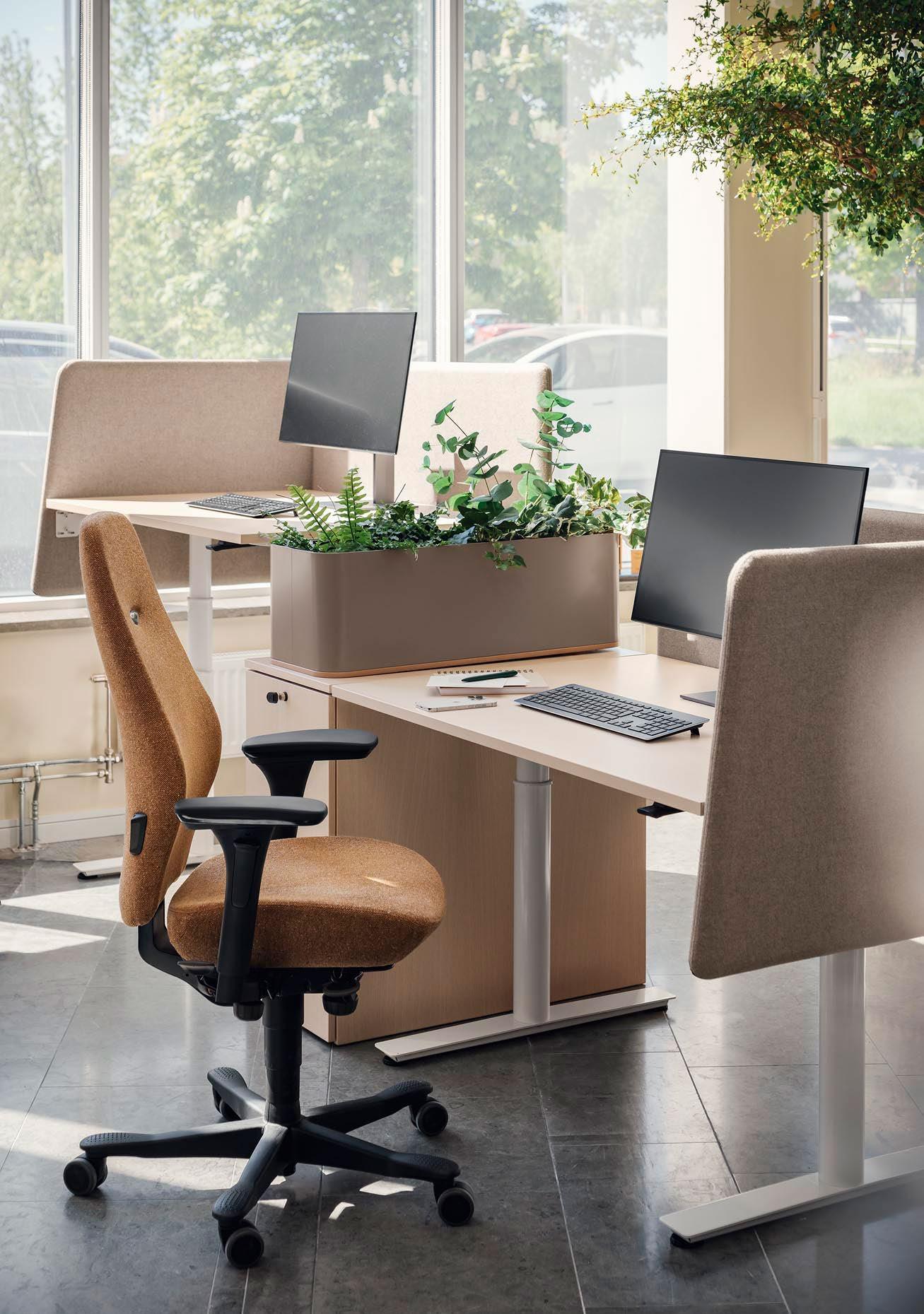

The Better Effect
K INNARPS AB GROUP'S SUSTAINABILITY REPORT 2024
Kinnarps / Drabert / MartinStoll / Materia / NC / Skandiform
K INNARPS AB-KONCERNENS HÅLLBARHETSRAPPORT 2023
ABOUT THE REPORT
This sustainability report relates to the Kinnarps AB Group for the financial year 2024 (01/09/2023–31/08/2024). The previous report was published in October 2023. We follow an annual reporting cycle. This report has been prepared in accordance with the provisions of Chapter 6 of the Swedish Annual Accounts Act. The Board of Directors is responsible for the preparation of the report.

This sustainability report is clickable. Click on the section in the table of contents that you wish to read to go directly to that section.
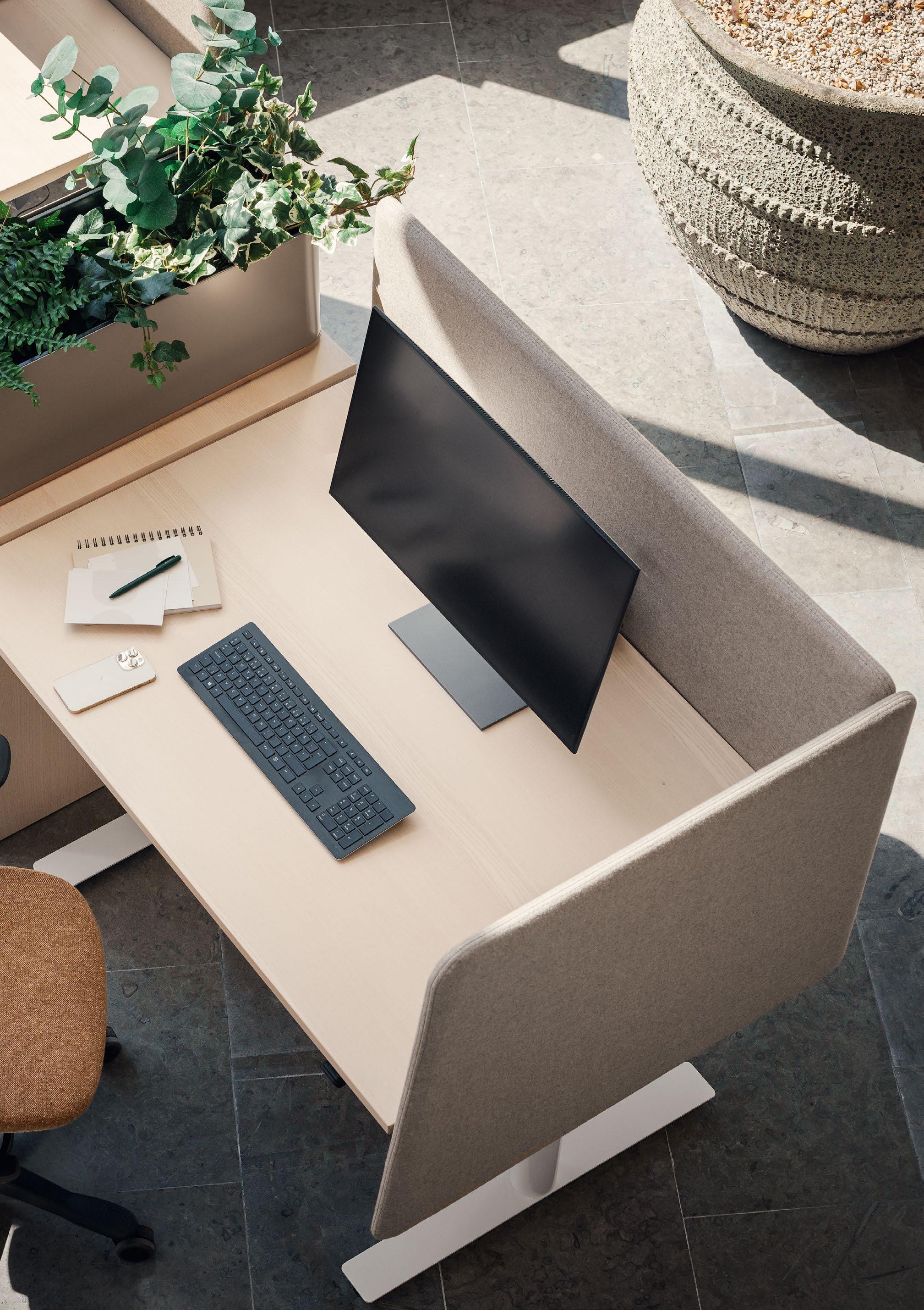
Getting better – together
Kinnarps is one of Europe's leading suppliers of interior design solutions for offices, schools and care facilities. Kinnarps’ comprehensive offering includes a needs analysis, interior design, implementation and follow-up. We help our customers create sustainable and future-proof spaces with our own brand portfolio, a wide range of services and complementary partners. Our curiosity and interest in sustainable solutions mean that we are continually working to reduce our climate impact, enhance wellbeing, and create timeless spaces. In this Sustainability Report, we focus on six key areas in which all of us in the Group, together with our clients and suppliers, can work to create a better effect for future generations.
“By thinking longterm from the start, we create sustainable solutions.”
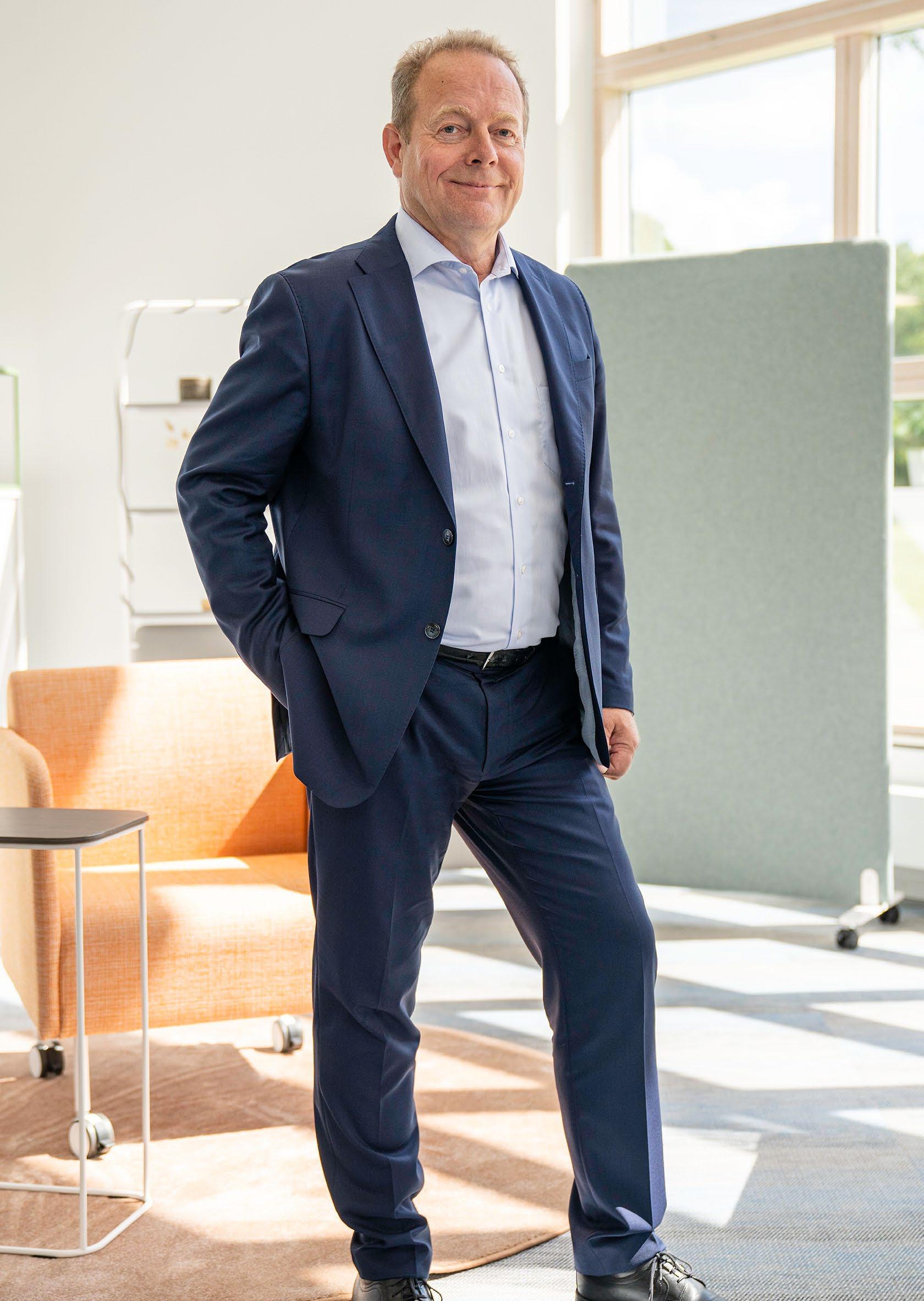
ROBERT PETERSSON CEO KINNARPS AB
Sustainability as the foundation for the future
In a world where sustainability and circularity have become central concepts, we at Kinnarps are proud that this has always been a natural part of our DNA. Since our establishment in 1942, we have had a clear vision: to create interior design solutions to last over time. Our philosophy has always been based on long-term thinking, quality and resource efficiency – a way forward where we deliver value to our customers while making a difference for the environment.
The core of our success lies in our belief that sustainability starts with careful and conscious choices. We offer our customers solid needs analyses that identify the real needs of the organisation, whether office, education or care spaces. With the help of our analysis tools Next Office®, Next Education® and Next Care®, we help our customers create spaces that not only meet today’s requirements, but are flexible enough to grow with their business. By thinking long-term right from the start, we create sustainable solutions that optimise functionality, ergonomics and aesthetics –for both the individual and the business. We know that sustainability is about more than meeting short-term goals and that the best way to create long-term value is to deliver interior design solutions that are thought through in every detail – from the needs analysis and interior design to implementation and follow-up.
Our design philosophy is based on the seamless interplay between aesthetics, functionality, ergonomics and sustainability. Through our focus on sustainable circularity, we ensure that our customers get the right solution from the start, with spaces designed to be customised and developed over time so that they are always up-to-date and support our customers’ operations – thereby minimising their environmental impact.
For sustainable product development, we attach great importance to design, material selection and user-friendliness. In this way, we can design furniture that not only can be used for a long time, but can also be maintained, repaired, upgraded and customised to meet new requirements. It’s about taking responsibility for the entire life cycle of our interior design solutions and thinking ahead.
We are proud of our manufacturing in Sweden and that we are continuously investing in our production facilities. This gives us better control over quality and resource consumption, while reducing transport and our climate impact. By increasing the proportion of FSC-labelled wood, increasing the use of fossil-free energy and optimising the use of textiles, we show our commitment to continuously improving our processes. We strive to ensure that all steps in our production and supply chain are as energy efficient as possible – efforts that we know produce longterm results for us and our customers.
Our unique logistics and delivery system is another part of our efforts to make a difference. By using reusable blankets instead of single-use packaging, we can transport 50% more furniture per truck compared to the industry average, which means we save both space and resources. At the same time, we can install our interior design solutions in half the time compared to our competitors and avoid large amounts of waste. This solution is just one example of how we always strive to think differently and sustainably in every aspect of our business.
For us at Kinnarps, sustainability is not a buzzword, it is a strategy that permeates everything we do. We believe in creating solutions that stand the test of time, adapt to change and provide long-term benefits to our customers. We see every project as an opportunity to show what truly sustainable design means – from the first sketches to the finished solution.

ROBERT PETERSSON CEO KINNARPS AB
The year in brief
The year we look back on is filled with exciting customer projects focused on sustainability. During the year, we made major investments in making our use of resources more efficient and increasing the proportion of recycled and certified materials.
KINNARPS COLOUR STUDIO
During the year, we have made it even easier for our customers to make sustainable choices through a major update of our material range Kinnarps Colour Studio. The range offers attractive materials that have been carefully tried and tested for suitability and sustainability in different types of spaces. All colours and materials harmonise with each other to create inviting working environments that last over time. In addition, there are now six additional fabrics that consist entirely or largely of recycled material, as well as a Scandinavian leather.
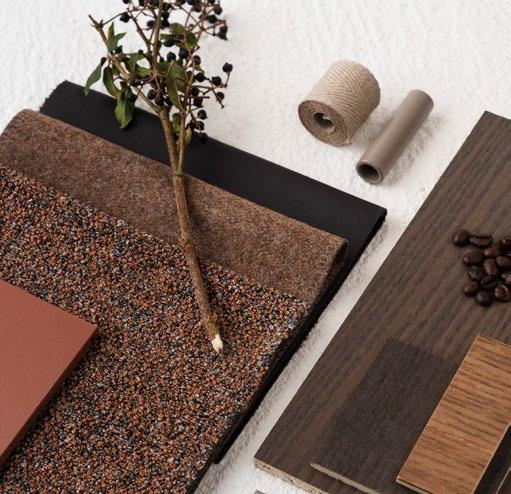

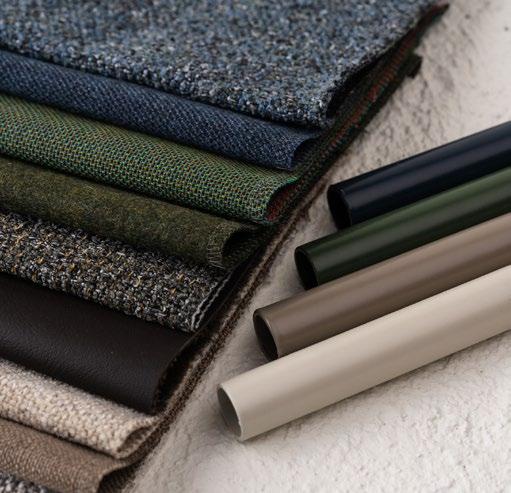
SOME NEWS IN KCS 2024
• Fleck Eco Recycled wool and acrylic leftovers, combined with recycled polyester and plant-based lyocell.
• Granit . Back made from textile leftovers from the supplier’s own production and front made from recycled polyester.
• Renewed Loop. Recycled textile leftovers from the supplier’s production and recycled polyester. 100% recycled and 100% recyclable.
• Elmosoft . Leather from Scandinavia, where everything is used. Therefore, it may have visible insect bites and healed scars.
ADDITIONAL COMPONENTS MANUFACTURED IN-HOUSE
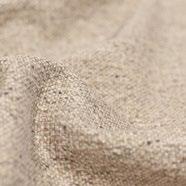
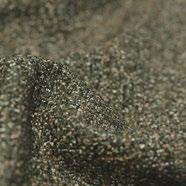
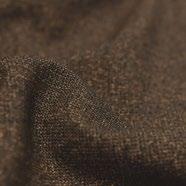

We have moved leg manufacturing for several of our table series to our factory in Jönköping. By manufacturing more in-house, we can streamline transport and ensure that production takes place in the most energy-efficient way possible. Thanks to Sweden’s high proportion of fossil-free energy, it also reduces the carbon footprint of our products.
Fleck Eco
Elmosoft
Granit Renewed Loop
JOHANNA REPRESENTS KINNARPS IN THE DELEGATION FOR CIRCULAR ECONOMY
During the year, our Sustainability Manager Johanna Ljunggren was one of the six new elected members of the Delegation for Circular Economy. It is an advisory body to the Swedish government that aims to facilitate and drive the business sector’s transition to a circular economy, which in turn strengthens Sweden’s competitiveness. We are happy to be contributing to sustainable transition!

CHIPBOARD - A SUSTAINABLE CHOICE
Did you know that the chipboard in our furniture contains 70% recycled material on average? The board consists of raw material from the forest mixed with wood waste from the supplier’s production, including sawdust. In addition to the high proportion of recycled material, all our chipboards meet the E05 standard, which means that they only emit half of the permitted limit value for formaldehyde.
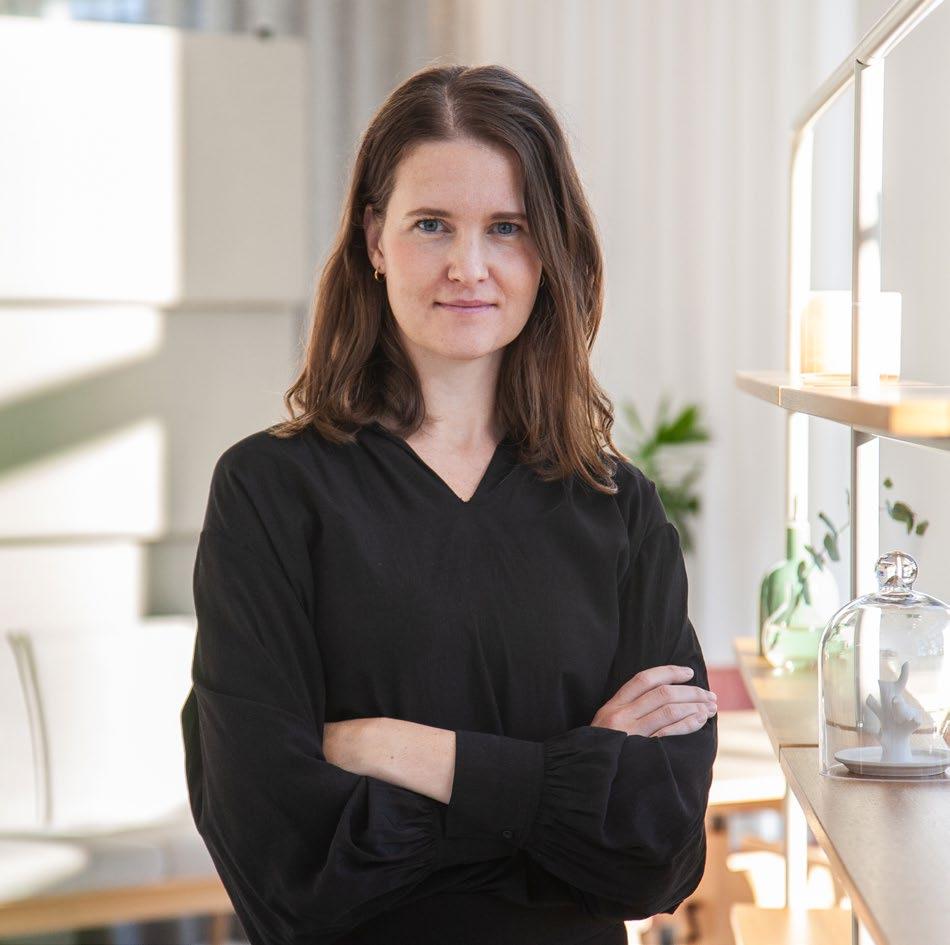
FLEXIBLE SOLUTIONS THAT LAST OVER TIME
We are constantly analysing market needs to develop innovative solutions that help our customers over time. One of many such examples is Capacitya multifunctional storage solution that becomes a natural part of the workflow as both smart storage, meeting space, seating area and room divider. This flexible key player becomes a sustainable solution because it can change with the user’s needs and support many different activities.
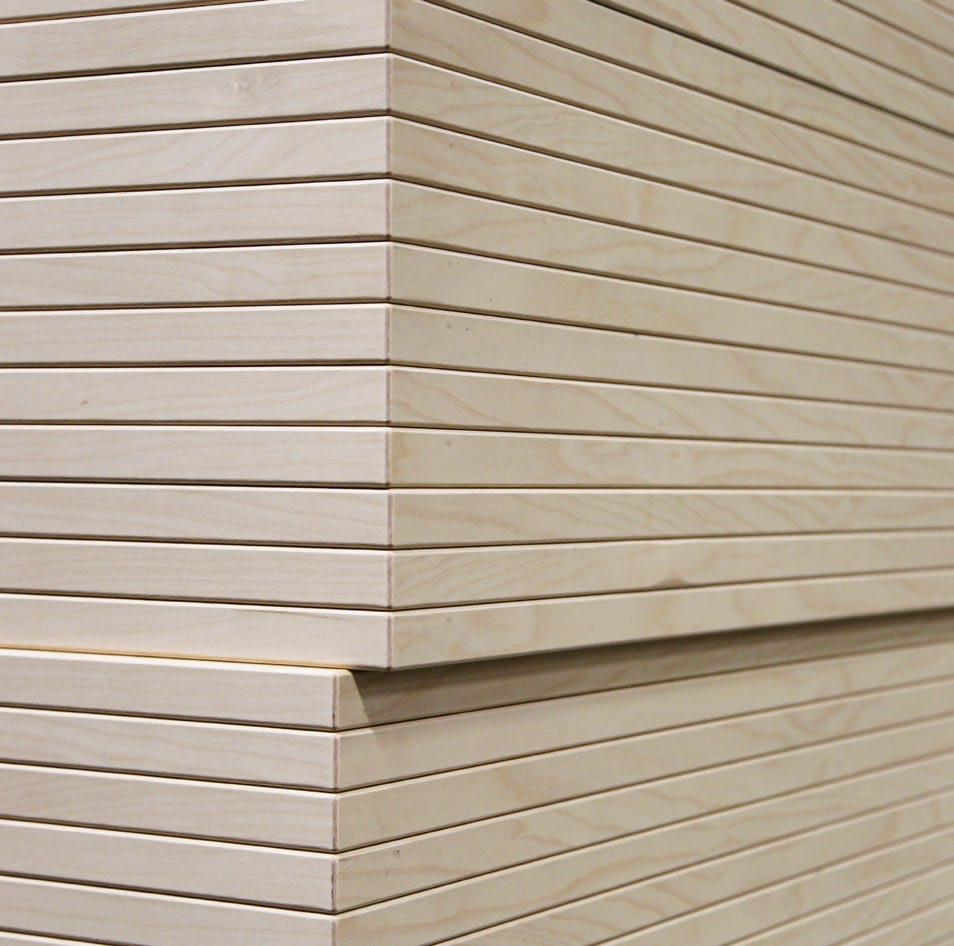
E05
CERTIFIED RAW WOOD MATERIAL
CERTIFIED RAW WOOD MATERIAL
The proportion of certified wood we purchased increased during the year to a whopping 98%. This is an increase of 3 percentage points since last year, where we were already at a very high level. This is the result of intensive cooperation with several suppliers, where we previously had a large proportion of uncertified raw wood material and managed to redirect parts of our purchases to certified raw wood material.
TEXTILE RESOURCE UTILISATION
98% 86% 77%
PROPORTION OF FOSSIL-FREE ENERGY
TEXTILE RESOURCE UTILISATION
The utilisation rate for textiles increased during the year, reaching 86%. We are thus above our target of 85%. The main reason for this is our investment in a new cutting machine that specialises in cutting fabrics for our Vibe screen series. This has enabled us to optimise how we fit the fabrics together in the software, producing less waste.
PROPORTION OF FOSSIL-FREE ENERGY
The proportion of fossil-free energy in our operations landed at 77% during the financial year, an increase from last year. This is largely due to the fact that we have been able to return to HVO 100 at our filling station in Kinnarp, a completely fossil-free fuel. The number of electric cars in our vehicle fleet has also increased during the year and will continue to do so.
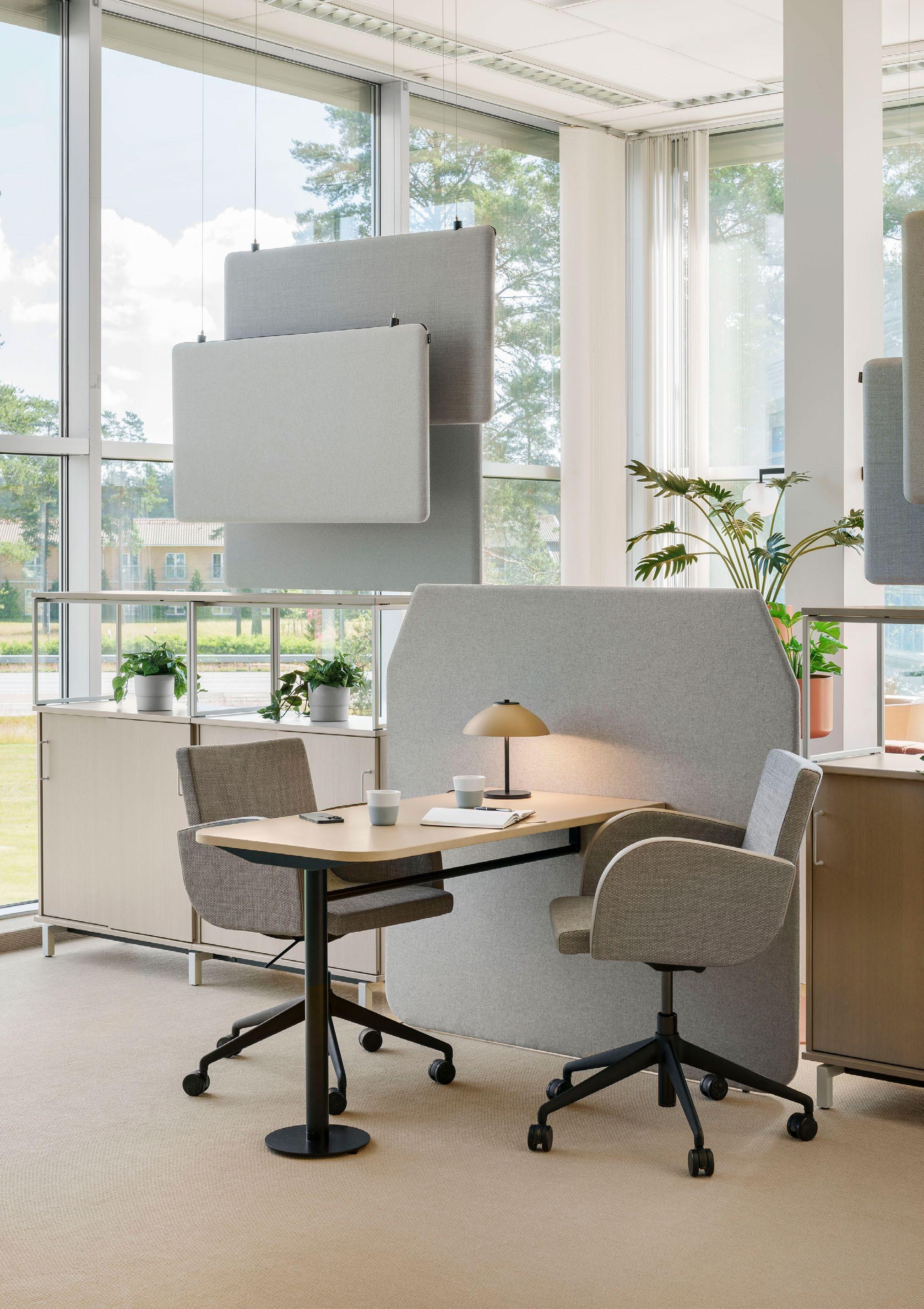
Sustainability is part of our DNA
It all began with a young couple's dream of a small carpentry factory over 80 years ago. Today, we are one of Europe's leading suppliers of interior design solutions for offices, schools and care facilities.
Since the company was founded in 1942, we have had a passion for sustainability and a vision that everything can be done a little better.
Using resources sparingly and creating long-term solutions are part of our DNA and the core of our business. We are constantly curious, and continue to develop sustainable and successful interior design solutions that enable both organisations and people to thrive. The Kinnarps AB Group currently comprises six production units, all located in Sweden, and has a brand portfolio of seven brands. The Group is a family-owned business, and the values that have been embedded in the company from the outset are still a major part of our heart and soul.
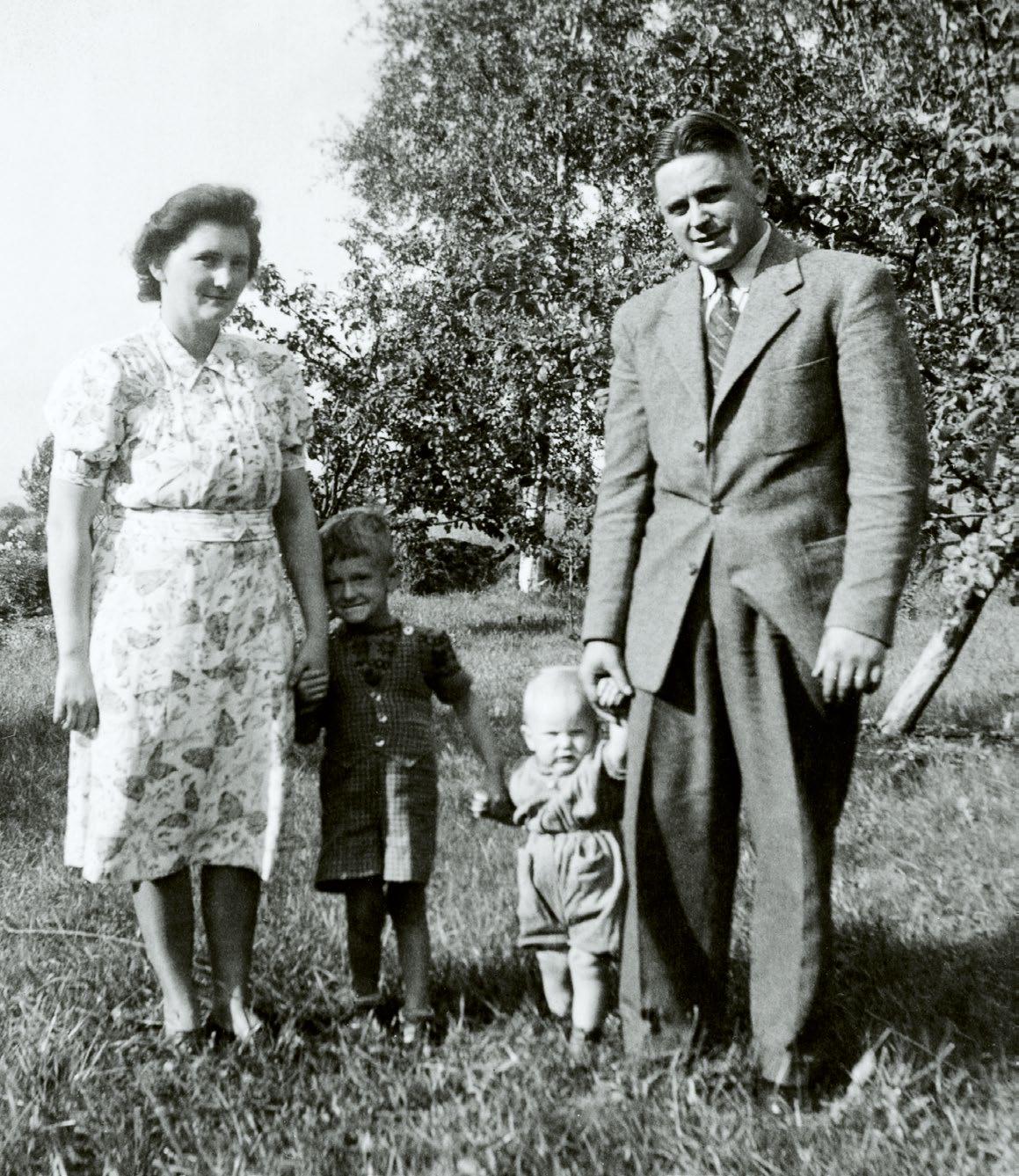
4.15 BILLION SEK Employees Turnover
Headquarters and production unit Markets
Sales companies
Production units We are
THE KINNARPS AB GROUP COMPANY STRUCTURE Sales outlets
KINNARPS HOLDING AB
SALES COMPANIES
KINNARPS AB
GROUP AB
AB NC NORDIC CARE AB
AB
MATERIA
MATERIA
SKANDIFORM
Sustainability all the way
At Kinnarps, we look at sustainability from a holistic perspective. This means that sustainability goes beyond just environmentally friendly material choices and low climate impact - it’s also about creating functional working environments that benefit both people’s wellbeing and organisations’ long-term development. Choosing high-quality interior design solutions that can be customised and updated over time creates spaces that continue to meet the needs of the business.
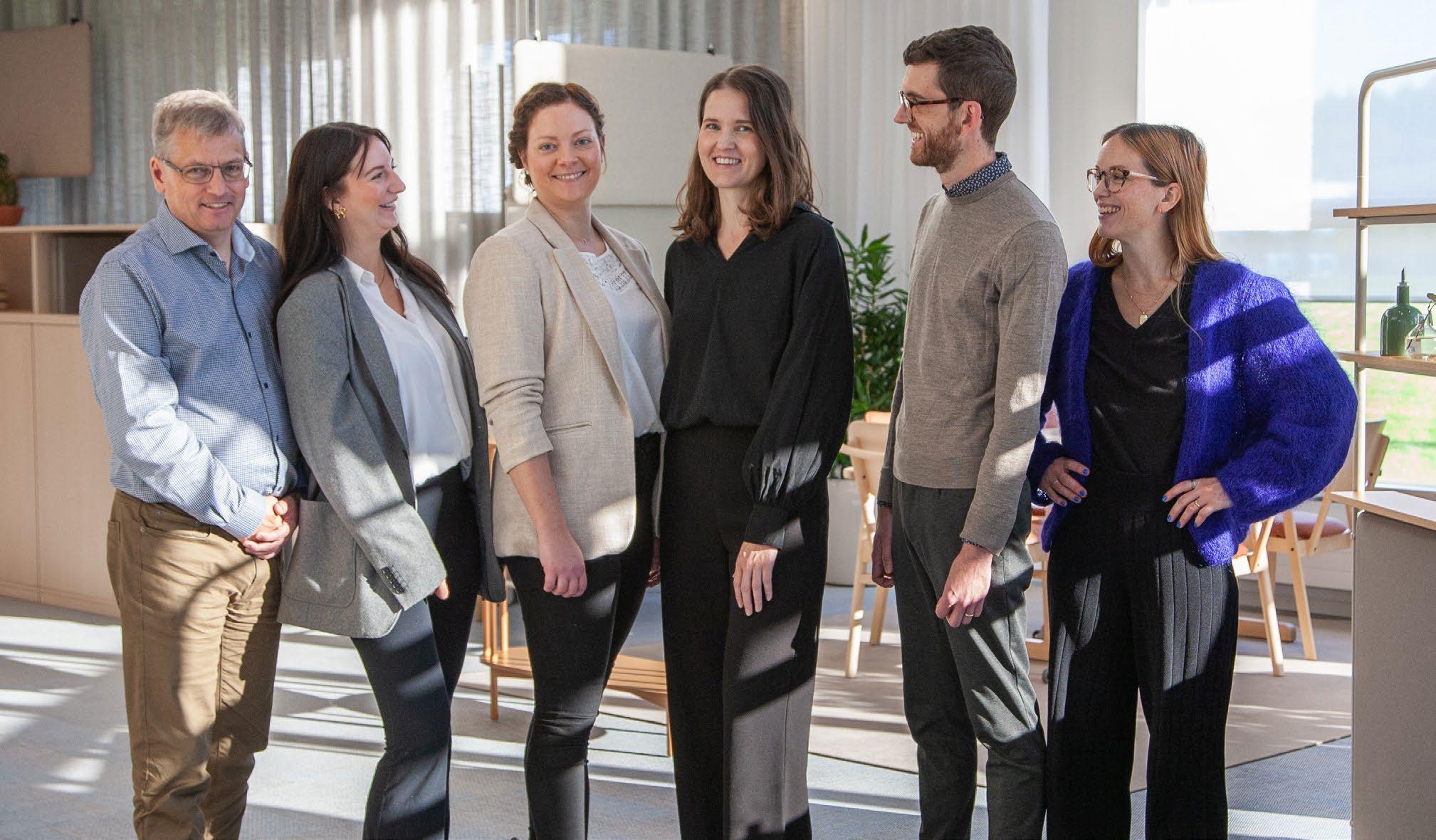
Kinnarps Group’s sustainability team. From left to right: Per Wikström Sustainability Manager of Skandiform, Amanda Djerf Sustainability Manager of Materia, Isabell Vesterberg Product Labelling Coordinator of Kinnarps, Johanna Ljunggren Sustainability Manager of Kinnarps, Rickard Thil Sustainability Coordinator of Kinnarps, Moa Ulfsson Sustainability Manager of NC
At Kinnarps, we look at sustainability from the perspectives of sustainable spaces, sustainable people and sustainable investment. It’s when these three work together that you achieve sustainability all the way.
Sustainable investment Sustainable spaces Sustainable people
Sustainable materials • Quality
Function • Correct type and quantity • Flexibility
Space optimization
Life cycle cost
Productivity • Sick leave
Investing in a well-thought-out working environment that is optimised to support employee tasks reduces the risk of sick leave and increases wellbeing, creativity and productivity. This results in a sustainable solution with a low life cycle cost and an improved overall economy, while contributing to a working climate where people thrive and perform better. Such a holistic solution is not only an investment in the success of the organisation, but also in a sustainable future for our planet. Kinnarps specialises in creating this type of business-adapted spaces where interior design solutions are designed to be renewed. For us, sustainability is simply a lifelong commitment, based on curiosity, a long-term approach, and an indefatigable desire to do things differently and do the right thing, and to pave the way for a better tomorrow.
Holistic ergonomics: Well-being • Involvement
Belonging • Pride
Our tips for making choices that are sustainable all the way
• Map and analyse your needs for a long-term solution that suits your organisation.
Choose high-quality furniture that is designed to be able to be renewed.
• Look for ecolabels and certifications, such as FSC®, Möbelfakta and OEKO-TEX®
• Ensure quality and safety – through e.g. European standards.
• Choose suitable materials and colours that are adapted to your spaces.
• Question how and where the furniture is produced.
• Look into how the furniture is transported and how the interior design is implemented.
• Be particular in selecting evaluation parameters.
• Set qualitative sustainability requirements for both new and reused furniture.
Mapped needs show the way
The greatest sustainability impact is achieved by choosing the right interior design solution from the start. To be able to do this, it’s important to map out and analyse your needs, and create a business adapted and flexible solution that lasts over time.
Over the years, we have helped numerous clients design value-creating transformations in their physical space. We do this through our needs analyses Next Office ®, Next Education® and Next Care ®, which help to create business adapted and sustainable spaces. Thanks to our many years’ experience in workplace strategy, we know that solid preparatory work creates success. The key is to map the client’s unique needs and work patterns. This creates the conditions for achieving the best and most sustainable solution. Our needs analyses help the client gather valuable knowledge and data before designing their spaces. With specially developed tools, our experienced workplace strategists guide the management team to establish the vision, goals and framework for the
project. Through workshops, lectures and an online survey, they then help to map needs and work patterns and involve all stakeholders in a carefully considered way. The analysis provides the client with facts, a solid knowledge base and a qualitative basis for how their workplace can be designed to best meet their needs. Well-planned working environments that meet the needs of both the organisation and employees promote everything from wellbeing and creativity to efficiency and productivity. This leads to an efficient use of the available space, a reduced risk of accidents and sick leave, and a stronger brand, which facilitates both the recruitment and retention of staff. In other words, a good and sustainable investment.

"The more you know about what you want to achieve, the better the project outcome."
HENRIK AXELL HEAD OF WORKPLACE STRATEGY, KINNARPS AB
ANALYSIS
ANALYSIS
DEFINE THE END RESULT
The Next Office® needs analysis lays the foundation for how your office spaces should be designed to support employees and the organisation in the best way possible.
INTERIOR DESIGN SOLUTION
IMPLEMENTATION
INTERIOR DESIGN SOLUTION FROM IDEA TO ACTION
We help you convert the needs analysis results into a design concept, layout and tangible drawing. We review ergonomics, functions and sustainability.
IMPLEMENTATION INTRODUCING THE POTENTIAL
Through our own efficient logistics and delivery system, we deliver and install your interior completely according to drawing. We help you introduce and implement environments, furniture, ergonomics and working methods so that everyone understands the potential.
FOLLOW-UP
FOLLOW-UP
KNOWING IS BETTER THAN GUESSING
Based on your needs analysis, you can then continuously follow up on how your office is working and identify whether your needs have changed.
An invaluable value chain
The purpose of the Kinnarps AB Group’s business model and value chain is to understand and fulfil the needs of businesses and organisations for interior design solutions with associated services.
1
Use and reuse
6 Value chain
5
Design Manufacturing Distribution
4
Raw materials Sales
2
3
1
DESIGN
When we design and develop products, we set high function and quality requirements. We work hard to take all factors affecting sustainability into account as early as possible in the development process, such as pure materials, as little waste as possible and an optimised use of resources. We design products with a platform approach that gives the product the flexibility to be renewed and changed over time.
2
RAW MATERIALS
When purchasing raw materials, components and finished products, it’s important to us that they come from sustainable sources and are produced under good social conditions. We therefore set high standards for both our suppliers and the products supplied. The Kinnarps AB Group has a common Code of Conduct covering social responsibility, which we also follow up through on-site risk assessments and audits at our suppliers' production facilities.
3
SALES
We help our clients to analyse both their existing and future needs, in order to create business adapted spaces that promote health and efficiency. A business adapted interior design solution furnished with flexible and multifunctional products is a long-term investment that can be adapted to changing at a relatively low cost. Making the right purchase from the start is an important part of reducing your environmental impact. We are a total interior solution provider and help our clients to implement their interior design solution with the help of products from the Kinnarps Group and our partners.
4
MANUFACTURING
We manufacture on the basis of client orders, which means that we only manufacture what is actually in demand and avoid creating large stocks of products. When manufacturing our products, avoiding ecohazardous and harmful substances is important to us. We do this not only to ensure a good working environment in our six manufacturing units, but also to create healthy workspaces at our clients’ premises. We make continuous efforts to improve our use of resources by optimising the consumption of materials, reducing waste, and utilising leftover materials.
5
DISTRIBUTION
We have our own logistics system that delivers products from all our brands directly to clients. When we pack our products, we use blankets and cardboard sheets that we take away with us for reuse. This means that we save packaging and have space for 50% more furniture per shipment. Our trucks also run on fossil-free fuel to further reduce our climate impact.
6
USE AND REUSE
It’s important to us to design products that last a long time. That’s why we place great emphasis on high quality, and the ability to update or refurbish a product in order to extend its lifespan. We offer a range of services to help our clients keep their interior design attractive for longer and change it as necessary. Our furniture washing and maintenance services keep the interior design in good condition, while our renovation and updating services mean the furniture can be repaired, customised to new needs or given a new look.
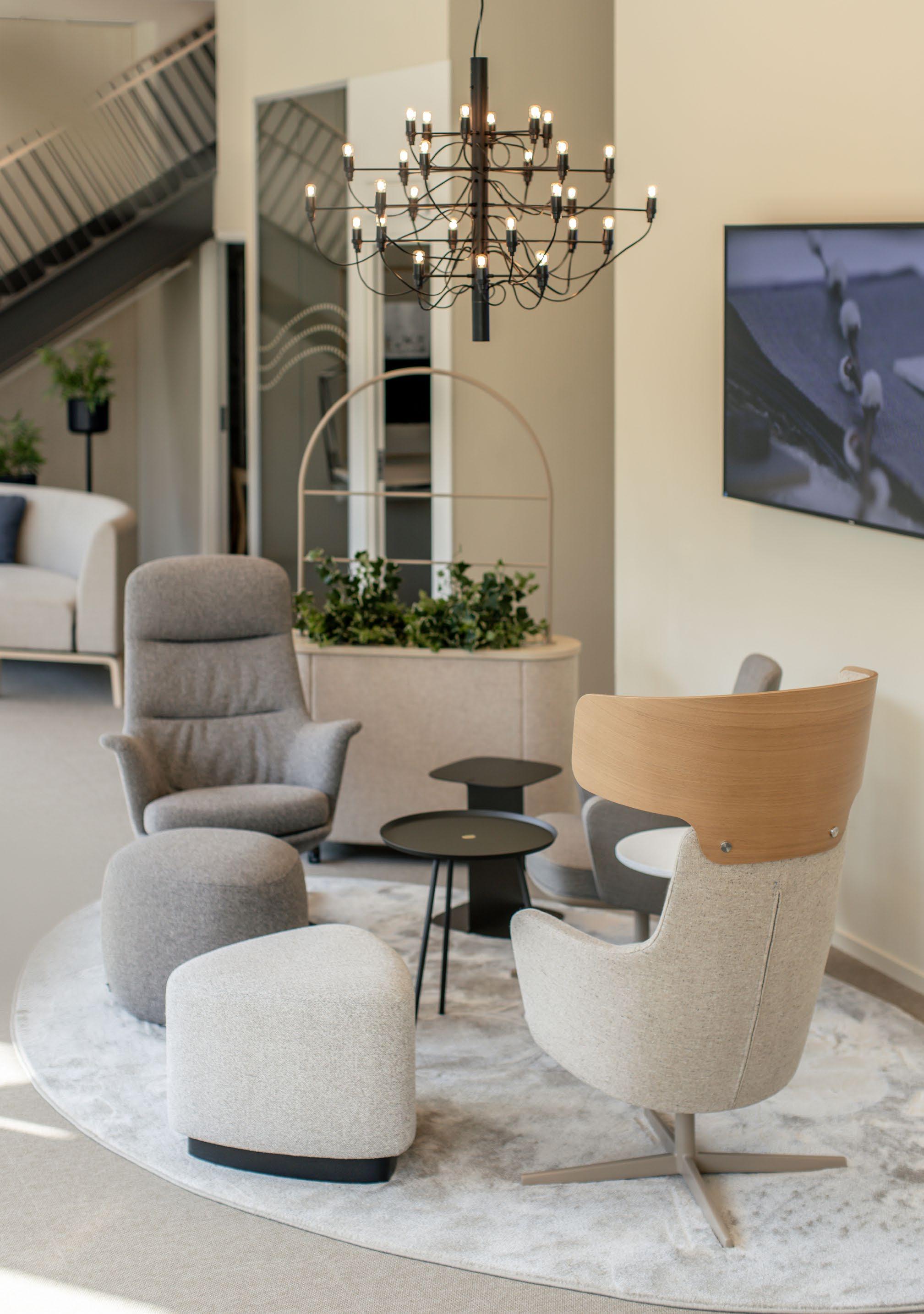
Customer values
Our offer consists of these five values. Together, they ensure that our customers get the best possible value for their investment.
Total interior solution provider
From needs analysis and interior design solution to implementation and follow-up.
Holistic ergonomics
Spaces that promote wellbeing, creativity and productivity.
Design with a purpose
Innovative interior solutions and products characterised by high quality and attractive functionality.
Sustainability all the way
Interior design solutions with a long lifespan and low environmental impact, which promote healthy and efficient working environments.
Total economy – low life cycle cost
An offer with good total economy that provides the customer with a sustainable investment.
Our focus areas
In order to identify which sustainability areas are most important for our business, we maintain a dialogue with our stakeholders and conduct an annual materiality analysis.
STAKEHOLDER DIALOGUE
Which issues are important to the people who influence or are influenced by our operations? Knowing this is essential to enable us to pursue our sustainability work effectively, and we therefore maintain a regular dialogue with our stakeholders. This is done by methods including interviews, focus groups, surveys, and ongoing meetings in our daily operations.
THE KEY STAKEHOLDERS WE HAVE IDENTIFIED:
Clients/Regulators/Owners/Employees/Trade unions/ Authorities/Society/Media/Retailers/Suppliers/ Lenders/Insurers/Certification bodies
MATERIALITY ANALYSIS
Which sustainability issues are most relevant for our operations? On the basis of the stakeholder dialogue, we carry out a materiality analysis, which is revised annually. The analysis not only identifies the areas in which Kinnarps' stakeholders have the highest expectations but also those of major importance to our business strategy. We have summarised the most important areas in our six focus areas.
Materiality analysis
Working environment
Far-sighted, responsible entrepreneurship
Skills and development opportunities
Local involvement
Product and service quality
Pure materials and chemicals
Social responsibility
Transport and resource management
Circularity
Climate
Waste and emissions
Transparency
Ergonomics and health
Responsible wooden material
Product labelling

Sustainability strategy and long-term sustainability goals
Kinnarps' sustainability strategy is based on our overall vision and business plan, which involves creating inspiring and effective interior design solutions –to contribute to prosperity and wellbeing.
We have evaluated our operations against the 17 UN Sustainable Development Goals and identified the ones that we have the greatest opportunity to influence – directly or indirectly. We have then linked them to our most prioritised areas.
2030 Goals
RAW MATERIALS AND RESOURCES
Our goal is for all raw materials in our products to be traceable and from responsible sources. All wood raw material should be FSC certified or recycled. Materials should be used in an even more resource-efficient manner.
CLIMATE
We aim to halve our greenhouse gas emissions by 2030 and reach net zero emissions by 2050. We’re also working continuously to improve energy efficiency throughout our operations and to use more energy from fossil-free sources.
SOCIAL RESPONSIBILITY
Our goal is to have verified good working conditions throughout our value chain, contributing positively to the social development on the sites where we and our partners operate.
CIRCULARITY
Our goal is for all our products to be designed for a long lifespan, and for our interior design solutions to be part of a circular flow that prolongs the life of products and materials. We use more recycled materials in our products and find innovative ways of using leftover material from our operations.
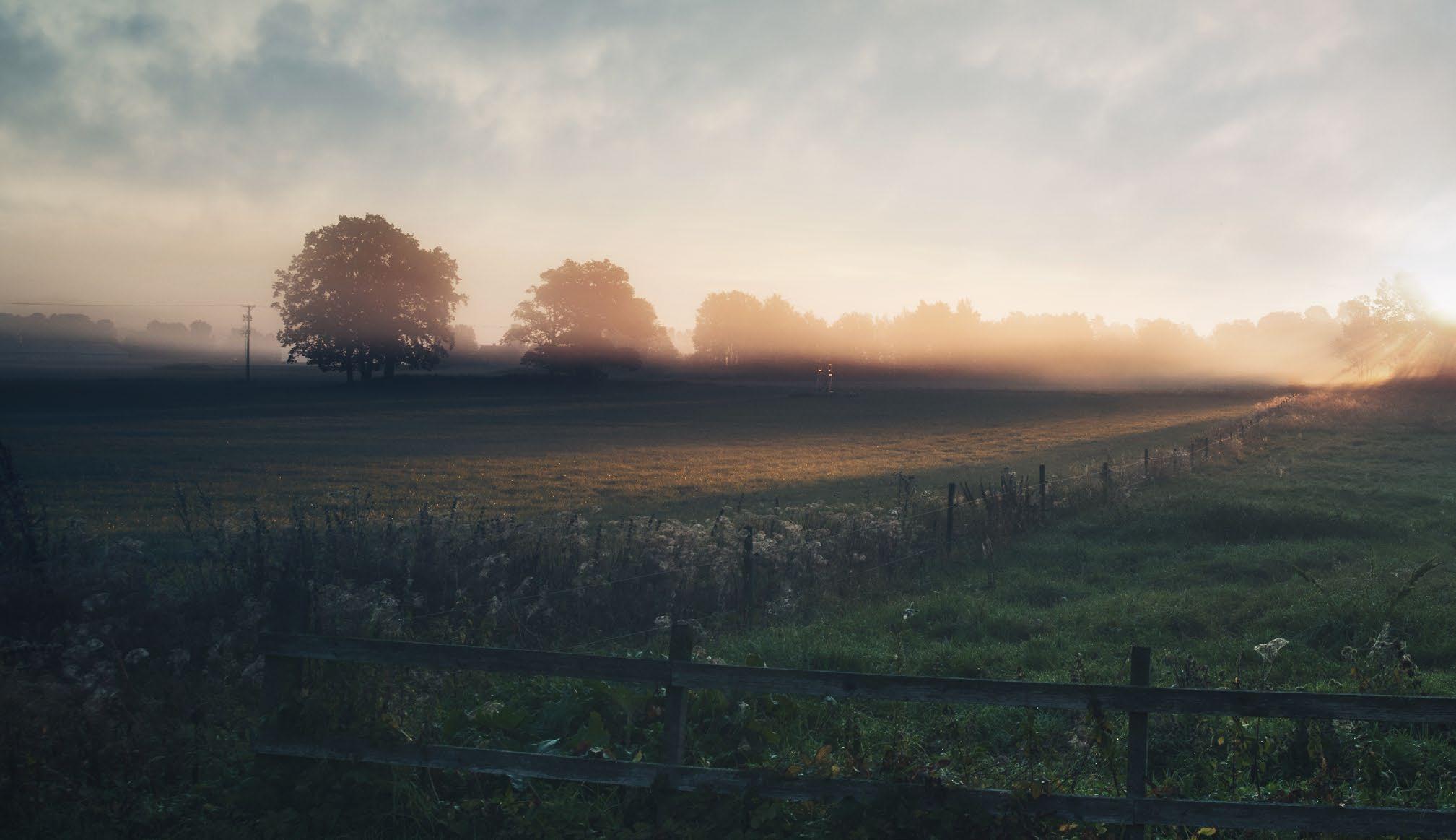
UN Sustainable Development Goals
PURE MATERIALS
Our goal is to create healthier working environments, with fewer chemicals, and free from materials classified as harmful to public health or the environment.
ERGONOMICS
Our goal is to create working environments that promote the health and wellbeing of everyone who spends time there. Holistic ergonomics is central to our interior design solutions, and our products are inclusive and individually adaptable.
Raw materials and resources
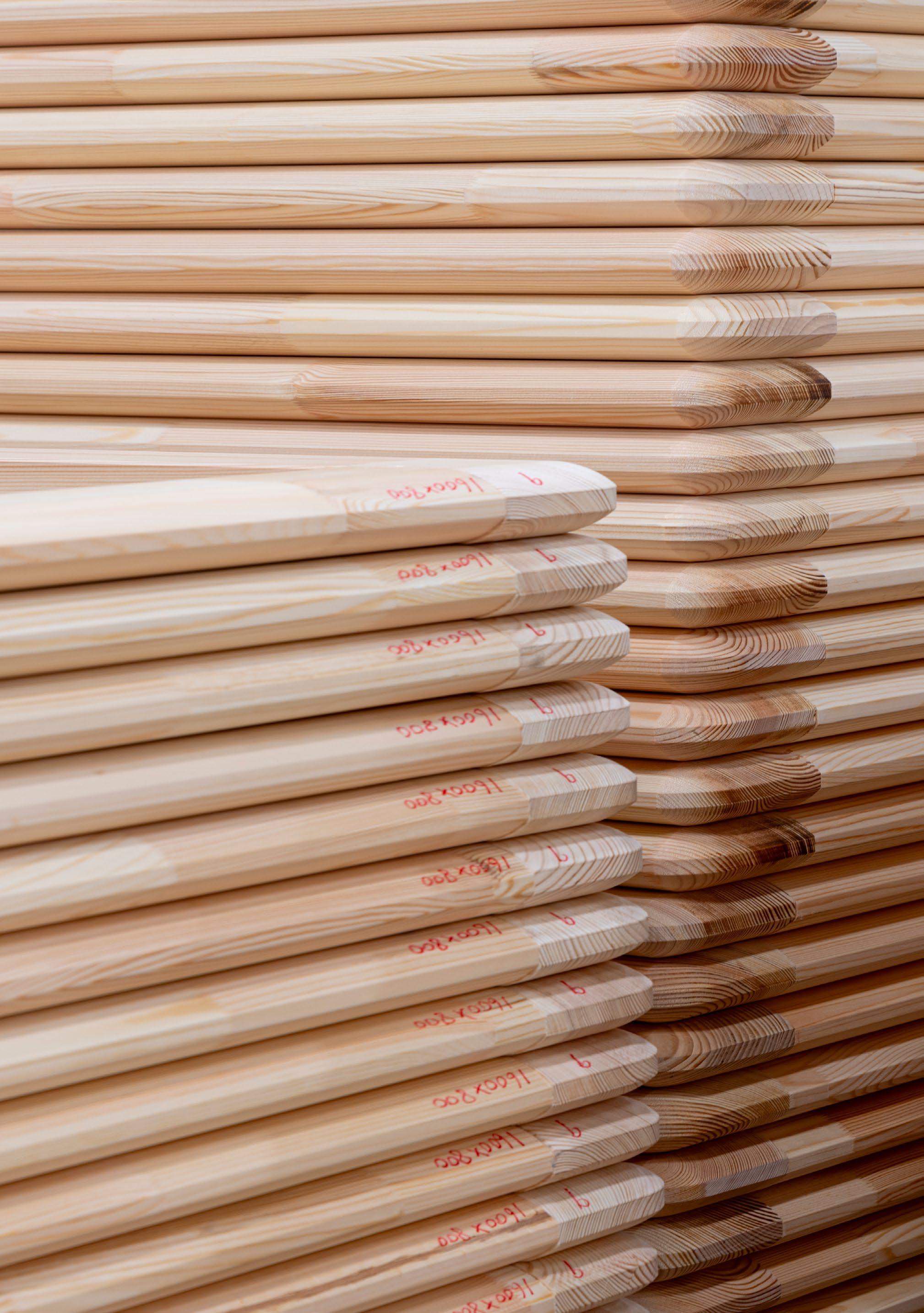
Conserving natural resources is crucial. It’s an important part of Kinnarps' identity and a prerequisite for all sustainable operations. In other words, we take responsibility all the way from choosing the right raw materials to finding the right manufacturing procedure – for the sake of our planet.

Definition
The materials we use in our products, and how they are manufactured, has a huge significance for our environmental impact. It’s also important that we use these materials efficiently and minimise waste, in order to reduce the consumption of natural resources.
Materials used in our production
The diagram shows the proportion of material procured on the basis of its procurement value.
PLASTIC METAL
TEXTILES
Long and complex supply chains
The extraction of raw materials and the manufacturing of materials are part of a complex global context. For us as an individual operator, it’s a huge challenge to trace the origin of raw materials such as oil, plastic, ore and metal, and monitor the conditions under which they were produced. It’s much easier for us to influence our direct suppliers. Longer supply chains are more complicated to map, as we do not have the financial relationship with the suppliers, which also means that we have less ability to
Strategy
influence them. For the same reason, it’s challenging for us to influence the efficiency of material use in the supplier chain.
Wood is unique in that there are good traceability certifications and this is why we have set particularly high targets in this area. But the availability of certified wood is limited at the best of times and has declined even further as a result of the war in Ukraine. Nor is it enough for the wood to have traceability certification –it also needs to meet our high quality requirements.
Material requirements and resource efficiency
material requirements We stipulate that all our suppliers sign up to accept and comply with the requirements specified in our Code of Conduct in relation to social conditions and environmental considerations during production, and that they forward these requirements up the supply chain. We insist that all articles we procure must meet material requirements based on the criteria in the relevant ecolabels. We also obtain information about the country of manufacture and have procedures for monitoring the origin of all wood raw material. We do not accept wood from forests with high conservation values, areas which have been converted from natural forest into plantations, or forests where there are ongoing social conflicts. Our units in Kinnarp, Skillingaryd, Tranås and Vinslöv all have FSC Chain of Custody traceability certification. FSC labelling is a guarantee that the raw material comes from environmentally-adapted, socially responsible and economically sound forestry.
resource efficiency We are constantly working to streamline our production processes and material utilisation in order to reduce waste. We have made major investments in the Skillingaryd factory, in order to increase the utilisation rate of textiles with more precise cutting. Of the waste that still arises, we sort out polyester fabrics that, together with recycled PET bottles, are used for the sound-absorbing material Re:fill in new products. We have been participating in the TexChain3 project in order to develop methods for using textile waste in more products. One result from the project is a finished sample of a padding material consisting of shredded and pressed textile waste from our own production in Tranås. We are now working on implementing the material in some of our products. In addition to this, we’ve invested in an efficient level laser for our factory in Jönköping, which reduces sheet metal waste by 15 percentage points.
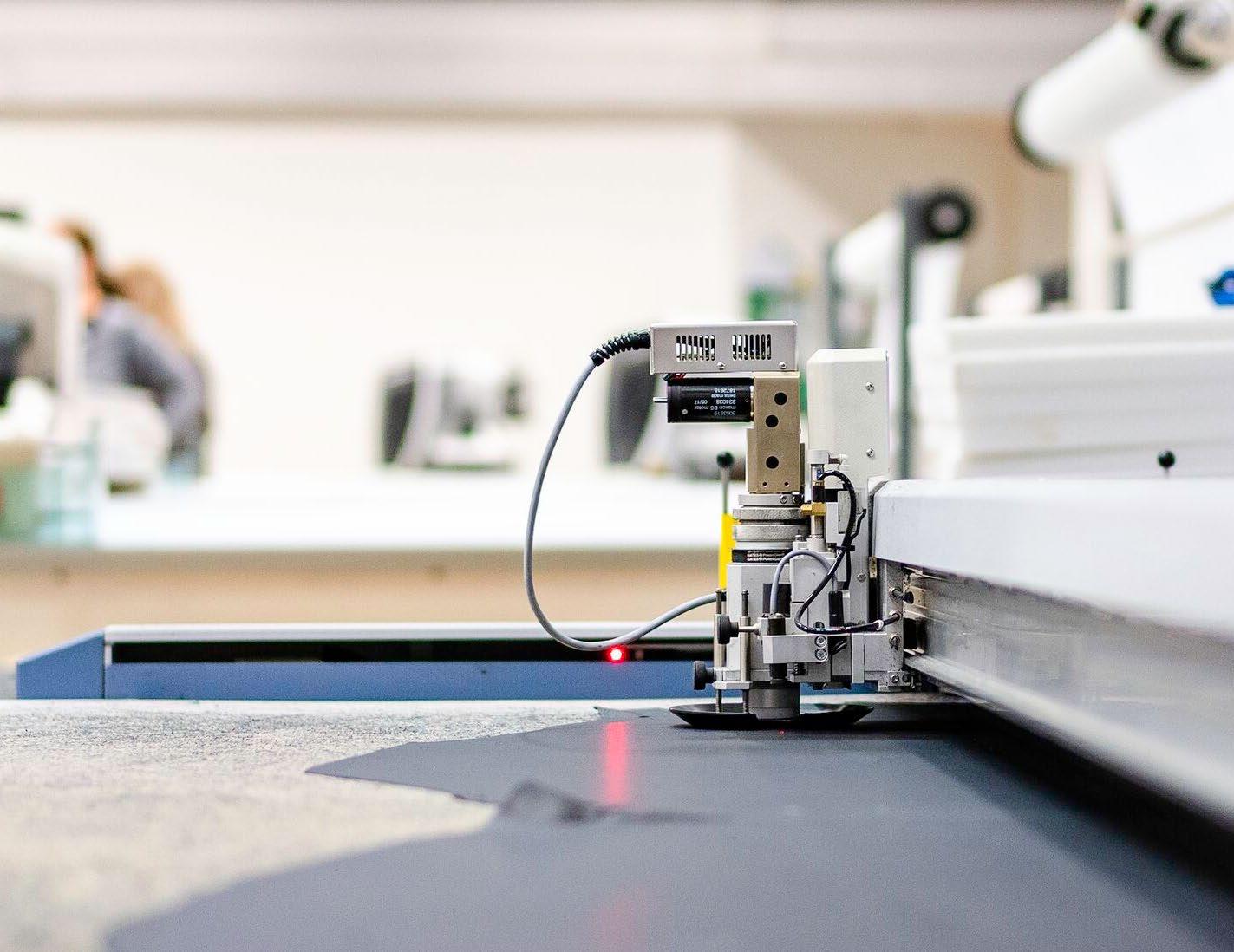
With the help of a cyclone in the powder coating of metal components, we can make use of overspray of powder paint and reuse approximately 80% for lacquering again.
In Skillingaryd, we cast the plastic shells for the Leia chair, and when we change the colour in the machines, for example, some of the shells may get discoloured or acquire other blemishes. Because the quality and strength are the same, we use these shells in upholstered seats instead of throwing them away, which saves both material and energy.
Through collaboration with one of our suppliers, we recycle waste pieces of ABS plastic strips from our production in Kinnarp. This enables us to recycle about 1.5 tonnes of ABS plastic per year, which becomes a raw material for the plastics industry.
Our factory in Skillingaryd
The materials we use most
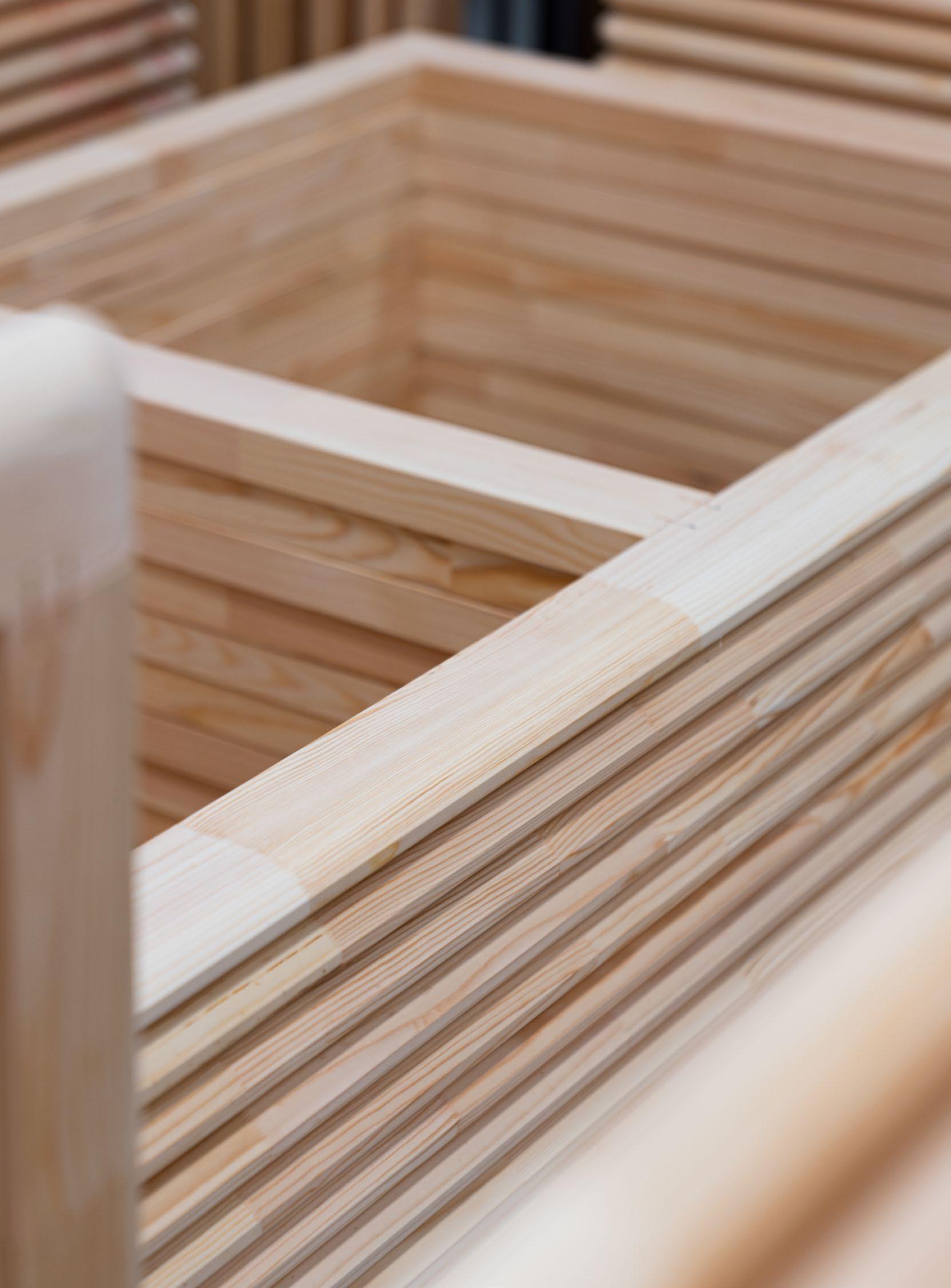
wood We only use certified wood or wood whose origin we have checked with regard to tree species and source country. Our assortment includes 140 different ranges with FSC–labelled products. Resource utilisation of veneer is optimised by planking the material.
FSC® -C010544
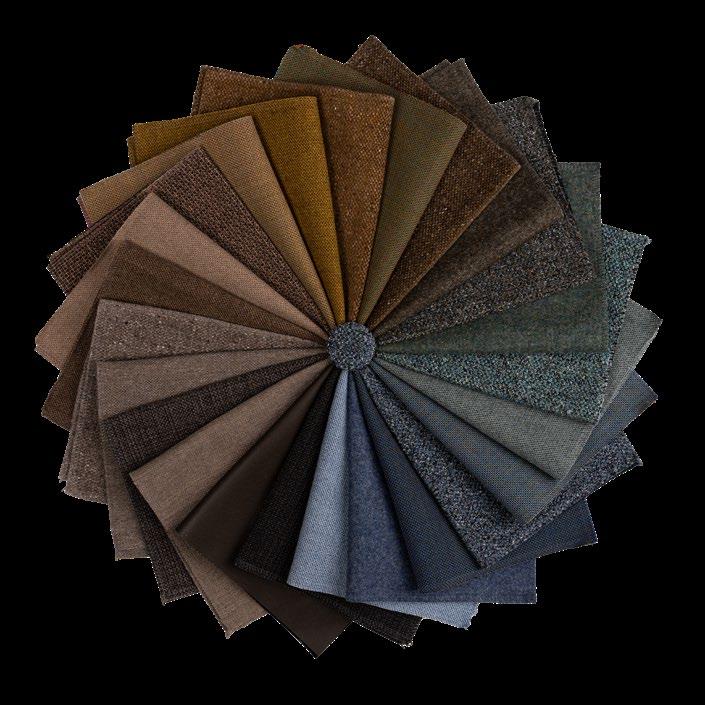
textile We offer durable and natural materials, such as wool from Norway and leather from Scandinavia, but also work with artificial fibres. This year we have several new arrivals made entirely or partly of recycled fibres, including Auckland, Granit and Acton, all made of recycled polyester. We require all the wool we use to be mulesing-free. 94% of the fabrics in our assortment have OEKO-TEX® or EU Ecolabel certification, which means that they’ve been made with consideration for the environment and health. We use an automated program for fabric cutting, which optimises usage and reduces waste.
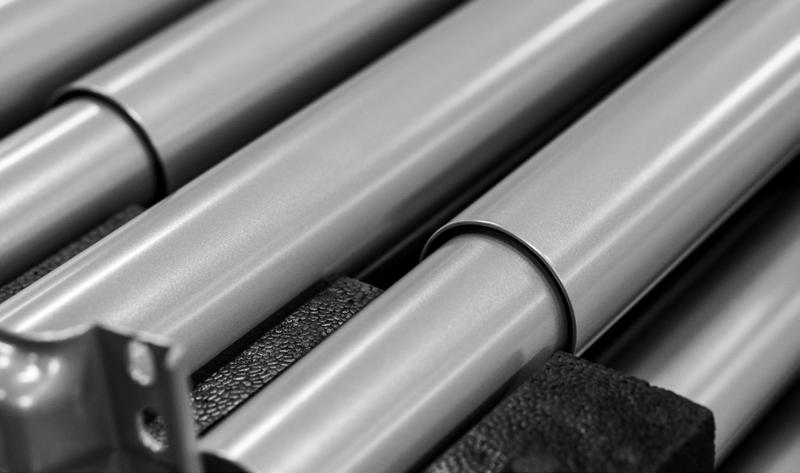
metal We use recycled metal as much as possible with regard to availability and quality requirements, including steel and aluminium. Chrome-plated details are produced using trivalent chromium, which has better environmental and health properties than hexavalent chromium.
plastic We have our own moulding facility for padding at our factory in Skillingaryd. This gives us complete control over the material, and we can use the isocyanate MDI instead of the more prevalent but health-hazardous TDI. We also manufacture plastic components in Skillingaryd, where many details are made from recycled plastic. The plastic granulate that we purchase mainly comes from Europe.
electronics We do not allow "conflict minerals" in our electronics. We aim to ensure that we do not use electronics containing tin, tantalum, tungsten or gold that has been extracted illegally, or whose extraction helps to violate human rights or support conflicts.
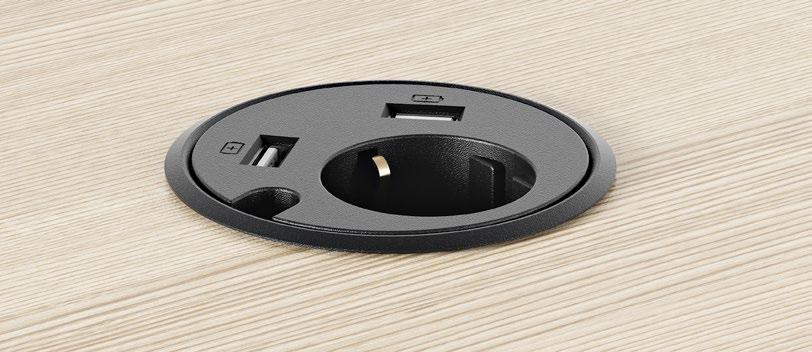
chemical products We use chemical products such as glue and lacquer in our production and make sure they meet the requirements of the relevant ecolabels. The chemical products we use are produced in Europe.
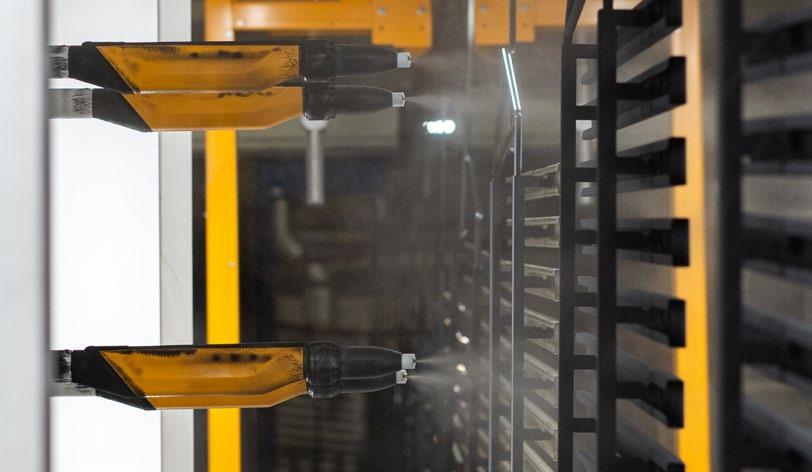

2030 long-term goal
Our goal is for all raw materials in our products to be traceable and from responsible sources. All raw wood materials should be FSC certified or recycled, and all materials should be used in an even more resource-efficient way. This goal is linked to the UN's Sustainable Development Goals 9 and 15, ‘Sustainable industry, innovations and infrastructure’ and ‘Life on land’.
Proportion of certified wood raw material in total wood raw material procured*
* Procurement of wood raw material for our own products manufactured in Kinnarp, Skillingaryd, Tranås and Vinslöv.
analysis The proportion of purchased wood that is certified increased during the year to no less than 98%. For several years, we have been gradually working on switching from PEFC to FSC, and this year we only have a small proportion of PEFC-certified wood raw material. Since last year, the proportion of certified wood has increased by 3 percentage points. The increase is the result of long-term and diligent work together with our suppliers. During the year, we have collaborated with several suppliers where we previously had a large proportion of uncertified raw wood material and managed to redirect parts of our purchases to certified raw wood material. We are thus approaching our goal of 100% certified raw wood material. The last percentage points have proven to be difficult to reach, but not impossible. This relates to smaller volumes where availability is limited or some operator in the supply chain lacks traceability certification. So in order to achieve our target, we’re encouraging our suppliers to become Chain of Custody-certified.
2025 Goal
All wood raw materials should come from certified or third-party audited sources.
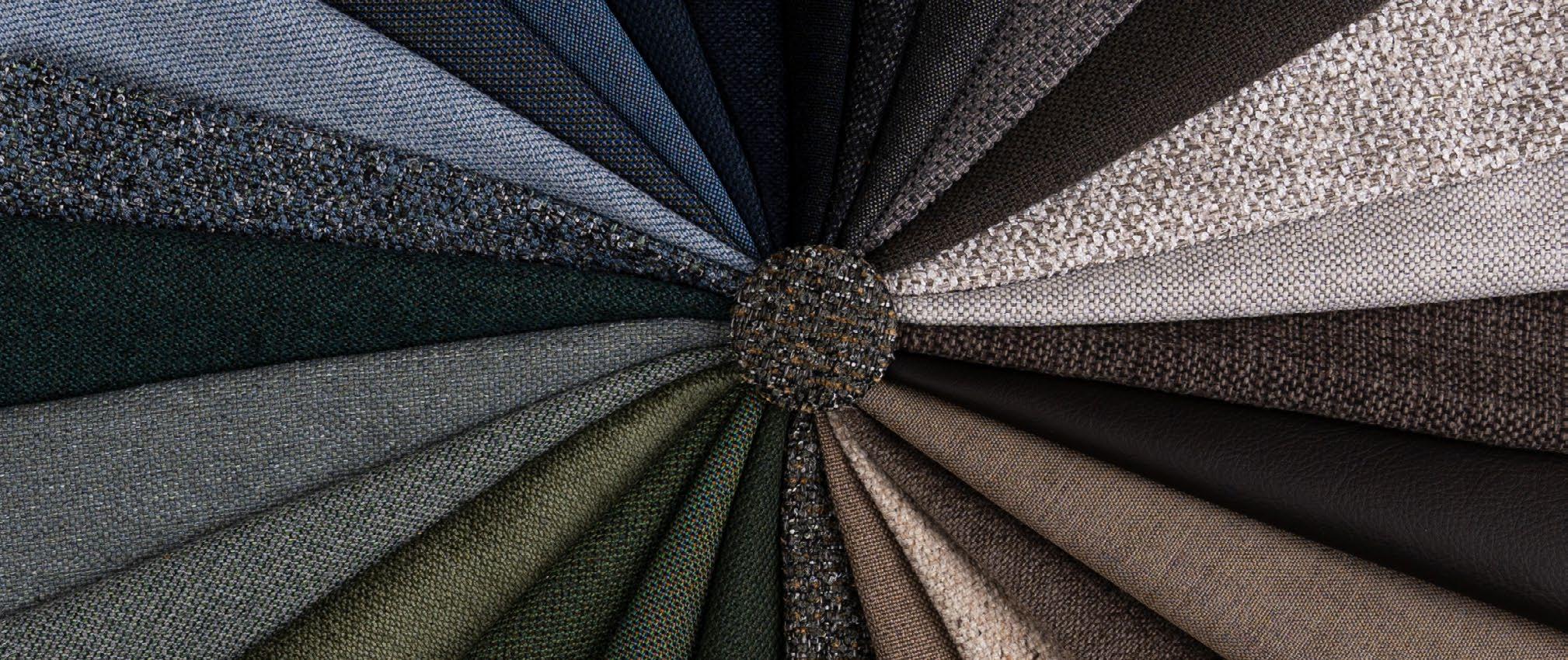
Textile resource utilisation*
analysis The utilisation rate for textiles has increased during the year, reaching 86%. We are thus above our target of 85%. The main reason for this is our investment in a third cutting machine that specialises in cutting fabrics for our Vibe screen series. This new machine has enabled us to optimise how we fit the fabrics together in the software, producing less waste. Cutting in fewer layers and hanging the finished cut parts directly next to the machine also reduces the number of incorrectly cut pieces. Going forward, we will continue to optimise the machines and software and continue to look for innovative solutions to address the waste that inevitably occurs.
In addition to the precision of the machines, there are two main factors that affect the utilisation rate: which patterns the fabric is to be cut out in and what the day's mix looks like. In other words, how many equivalent products are to be manufactured in accordance with our client ordercontrolled system. Leftover waste fabric is reused in our Re:fill padding material or sorted out for recycling.
2025 Goal
The utilisation rate of textiles should be 85%.
* Production in Skillingaryd
Climate

Fossil fuels are the largest source of carbon dioxide emissions. This is why we are particularly proud of our logistics system, which is partly powered by fossilfree fuel and also packed in a more climate-smart way – with blankets that are reused, resulting in less transportation and less waste management. In addition to this, we are also working to become more efficient in everything from material extraction to energy use.

The global climate goal means that global warming should be limited to less than 2 degrees, and preferably stop at 1.5 degrees. Achieving this climate goal requires concerted efforts from all sections of society. In our case, climate impact arises primarily during the extraction of raw materials, production and transportation.
THE GROUP'S CLIMATEIMPACTING EMISSIONS ACCORDING TO THE GREENHOUSE GAS PROTOCOL
Profitable climate investments
We have long worked on energy efficiency improvements in our operations, and have continuously identified and eliminated unnecessary consumption and energy leakage. But after many years of persistent work, most of the financially justifiable measures have been implemented. There are still some minor actions that have a limited impact or measures that require major investments. However, the increased price of electricity in recent times may justify larger energy efficiency investments going forward.
On the transport side, our efforts to use more fossil-free alternatives have been hindered by a limited supply of renewable substitutes, as well as a limited infrastructure and geographical availability for this type
Strategy
Climate-optimised transportation and energy auditing Challenge
transportation We have our own logistics system that is unique in the industry. Instead of single-use boxes, we use blankets to protect the products in transit. We have been developing this methodology since 1959. The blankets and cardboard are then taken back to be reused for subsequent deliveries. This saves us and our clients about 270kg of packaging per trailer. This method of packaging our products makes it possible to fit in 50% more furniture per shipment, as we can avoid transporting unnecessary air. So when others need up to three trucks, we manage with just two. This increases efficiency and reduces the number of shipments, and ultimately the climate impact.
Our vehicles are also optimised for maximum load volumes in accordance with European standards.
of fuel. We also see the need for longer-term political ground rules that help to make renewable fuels more competitive with fossil fuels. When it comes to the electrification of trucks, there are challenges regarding range, charging infrastructure, charging times and the size of the batteries in the vehicles making it difficult to operate our volume-optimised trailers. Despite positive decisions to open up for High Capacity Transport (HCT) on Swedish roads, we are currently limited by decisions regarding which vehicle combinations are currently approved.
Furthermore, we see major challenges in relation to climate-enhancing measures in our supply chain, where our ability to influence is also significantly lower.
The vehicles are lower, which means that we have a larger internal loading height and loading length in our swap bodies to be able to load more furniture. Our trucks are equipped with driver assistance that measures driving behaviour, which has helped us to reduce average fuel consumption. At our filling station in Kinnarp and where available, we use HVO with 100% renewable content, which means that our trucks run largely on fossil-free fuel. All in all, this means that a shipment in our blue trucks emits 80% less carbon dioxide per product than conventional transportation using normal diesel.
Our own logistics system includes the transport of products from the brands Kinnarps, Drabert, MartinStoll, Skandiform, Materia and NC. This reduces the number of shipments and thus carbon dioxide

emissions as well, while at the same time facilitating for our clients, as we can deliver a complete solution in just one delivery. Since the concept was expanded to include products from Skandiform, Materia and NC, we have also been able to reduce the use of packaging boxes by around 90 tonnes per year thanks to packing with reusable blankets and cardboard sheets instead of single-use packaging. After each delivery, we then load the trucks with materials from our suppliers, which means that we use the transport capacity in both directions.
During the year, we entered into the Vinnova project “Demonstrating Highly Energy Effective Logistics Solutions” (DHEELS) to further streamline our logistics system. As part of the project, we will be able to drive extra-long combination vehicles, with two trailers instead of one, meaning we can fit in a third transport container. This increases the load volume by 50% and also results in approximately 20% lower CO2 emissions. This has enabled us to reduce shipments between our factories by one trip a day. Starting this year, we will also be driving this combination vehicle between all our units and some nearby suppliers, which further streamlines our transports.
We’re in discussions with vehicle manufacturers about electric and hydrogen-powered trucks in order to find alternatives that will work in our logistics system. In the short term, until the development of alternatives has come further, we see fossil-free fuels used in conventional combustion engines, such as HVO of renewable diesel, as the best solution to keep our total emissions from heavy transport down. For passenger cars, we acquired several new electric cars during the year, especially in the sales force, which reduces our need for fossil fuels. For example, all company and carpool cars in Norway are now electric.
We have truck containers that are certified for the railway and we are in discussions with carriers so that our intermodal freight operations can function better and eventually make better use of the railway in our flows.
When others need up to three trucks...
...we manage with two.
production and premises Our energy consumption is greatest at our Swedish production facilities in Kinnarp, Jönköping and Skillingaryd. We’ve therefore carried out energy mappings to identify the potential for energy efficiency measures. We work continuously to make lighting more efficient, optimise ventilation and identify air leaks from compressors.
We aim to use more energy from fossil-free sources or energy sources with a lower climate impact. As part of these efforts, we have replaced a large part of the LPG used in production at our factory in Jönköping with district heating, which has a considerably lower climate impact. This change of energy source saves about 500 tonnes of CO 2 per year. At our production unit in Kinnarp, we also recycle wood waste for briquettes that heat the factory with fully renewable energy.
At our facility in Skillingaryd, we’ve also installed a production line for manufacturing plastic components, which means that we can insource more production, thus reducing transportation in the production chain. Hot water is used as a heat source, which in turn consumes less energy than traditional electrical coils.
products and materials Longevity plays a crucial role in a product’s climate impact over time. The longer the product can be used, the lower the climate impact is from a usage perspective. That’s why quality and the possibility to extend the life of products are of the utmost importance. Read more
about how we work with this on Page 60.
We use Environmental Product Declarations (EPDs) to map and evaluate where in the product’s life cycle the climate impact is greatest and, for example, identify which material choices we can make to reduce our climate footprint. An EPD uses a scientific and third party-audited method to show the environmental impact of our products.
We work continuously to reduce the climate impact associated with products and materials.
In Jönköping, we have insourced the production of legs for several of our table series. By manufacturing the legs in-house, we can streamline transport and ensure that production takes place in the most energy-efficient way possible. This will increase our own energy consumption somewhat, but across the entire value chain, it will reduce energy requirements and thereby also the climate impact. In Kinnarp, we have introduced bio-based lacquer on certain wooden details in our range. The lacquer is partly based on renewable raw materials from plants instead of fossil raw materials and means a reduction in carbon dioxide emissions of approximately 1.5 tonnes per year. We plan to introduce more bio-based lacquers in the coming years, which is expected to reduce the carbon footprint further. We have also introduced bio-based PUR foam on some Materia and Skandiform products. This is a material that through mass balance systems helps to reduce carbon dioxide emissions from the foam by about 80%.
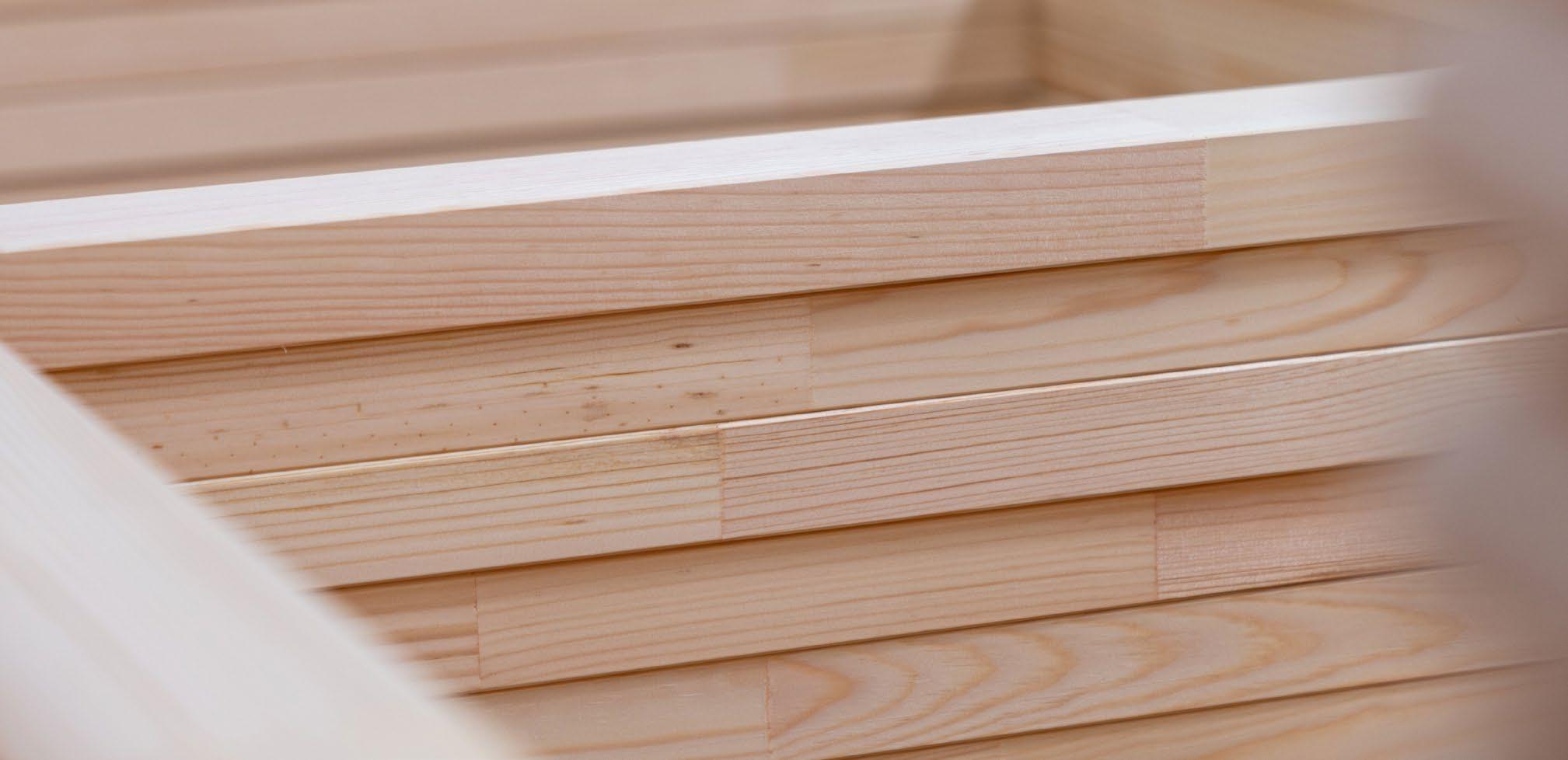

2030 long-term goal
We aim to halve our greenhouse gas emissions by 2030 and reach net zero emissions by 2050. We’re also working continuously to improve energy efficiency in all our operations and to use more energy from fossil-free sources. This goal is linked to UN Sustainable Development Goals 7 ‘Sustainable energy for all’ and 13 ‘Action to combat climate change’.
GHG EMISSIONS (TONNE CO 2 E)
Our long-term climate goals
to contribute to achieving the goals of the Paris Agreement. These goals include our greenhouse gas emissions according to the market-based method.
PROPORTION OF FOSSIL-FREE
ENERGY
analysis The proportion of fossil-free energy in our operations landed at 77% during the financial year, exceeding our target of reaching 75% by 2025. This is an increase from last year, largely due to the fact that we have been able to return to HVO 100, a completely fossil-free fuel, at our filling station in Kinnarp. We also refuel with HVO where available along our routes, but availability is limited in some markets. The number of electric vehicles in our fleet has continued to increase during the year and will continue to increase in the coming years, which will have a positive effect on the proportion of fossil-free energy. We are in discussions with truck manufacturers to investigate the possibilities of electricity and hydrogen in our logistics system. The majority of the electricity and heat we use is fossil-free, and we are working to find alternatives in places where we have gas or oil for heating. We have also managed to reduce our total energy consumption compared to the previous year, largely through long-term and systematic work on energy efficiency improvements.
The proportion of fossil-free energy should be at least 75%.
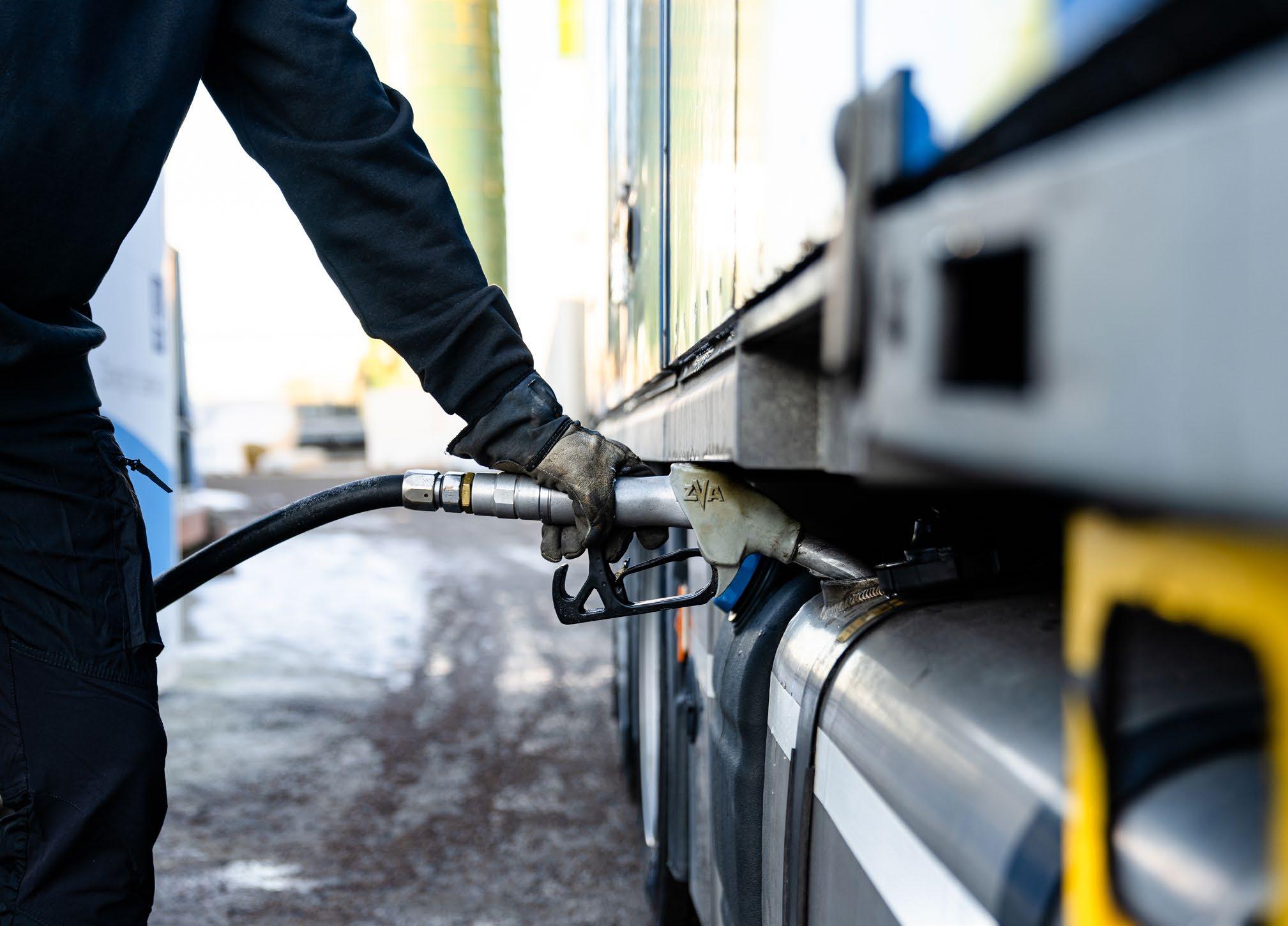
EMISSIONS OF CARBON DIOXIDE EQUIVALENTS FROM GOODS TRANSPORTS (G/TONNE KM)*
analysis At our filling station in Kinnarp, we use HVO, a fossil-free fuel with 100% renewable content. We also refuel with HVO wherever available along our routes.
We have managed to reduce our carbon dioxide emissions to 16 grammes per tonne-kilometre. The reduction is largely due to the fact that we were able to refuel with HVO to a greater extent than before during the year. During the year, we have also invested in new trucks and trailers, and in addition to this we are working on optimising the wheel settings on our blue trucks to minimise fuel consumption and tyre wear. Since our base year, 2019, we have thus reduced carbon dioxide emissions per tonne-kilometre by 58%.
During the year, we have transported all our own brands using our own logistics concept. Between our factories, we also used double trailers. This involved replacing external transportation with internal and transporting larger volumes in our own trucks. The project has also been expanded to include some nearby suppliers, which further streamlines our transports.
We are in constant dialogue with vehicle manufacturers about trucks powered by electricity and hydrogen in order to investigate the role this type of vehicle might play in our logistics concept in the future. In the short term, until the development of alternatives has come further, our main opportunity to keep our emissions from freight transportation down is to use fossil-free fuels in conventional combustion engines.
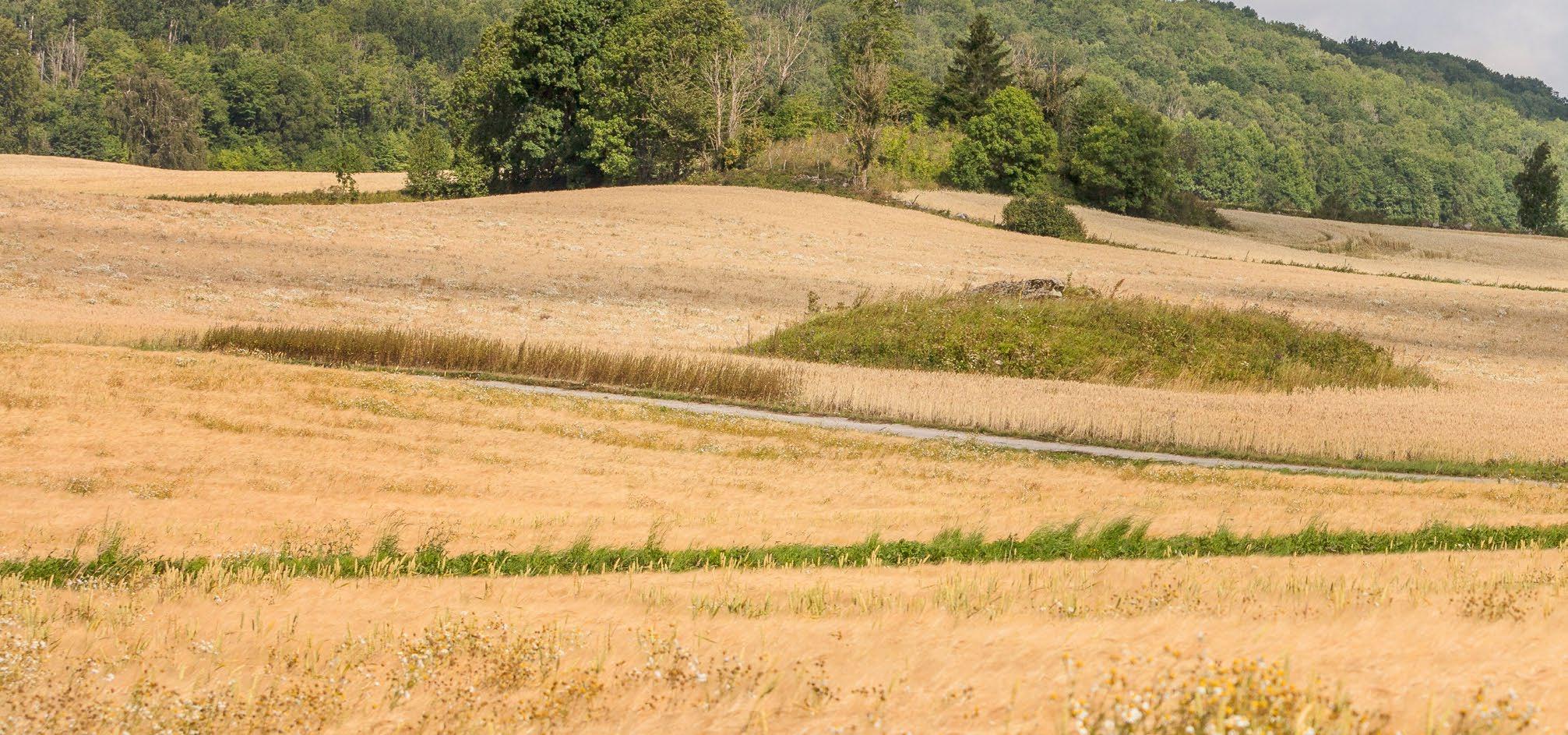
* Transportation with Kinnarps’ blue trucks Reduce CO2 emissions per tonne/km from blue trucks by 70%.
EMISSIONS OF CARBON DIOXIDE EQUIVALENTS (TONNES/MSEK)*
analysis Our carbon dioxide emissions have decreased in absolute numbers, but since our turnover has also decreased slightly since last year, we remain at approximately the same level as our target in tonnes of greenhouse gases per million SEK in turnover. Since the baseline year, greenhouse gas emissions have fallen by an impressive 48%.
During the year, we continued our long-term work on implementing energy efficiency improvements in our premises, which led to a reduction in emissions linked to electricity and district heating. In recent years, we have insourced the production of a growing number of plastic and metal components to our factories, yet managed to keep our emissions down. We have further streamlined our transport during the year, increased the proportion of fossil-free fuel in our trucks and increased the proportion of electric vehicles in our total vehicle fleet. We continue to work to reduce our emissions and will review the target value in the coming year.
* Production in Kinnarp, Jönköping, Skillingaryd, Tranås, Vinslöv and sales subsidiaries. 2025
Reduce CO2 emissions per SEK traded by 30%.
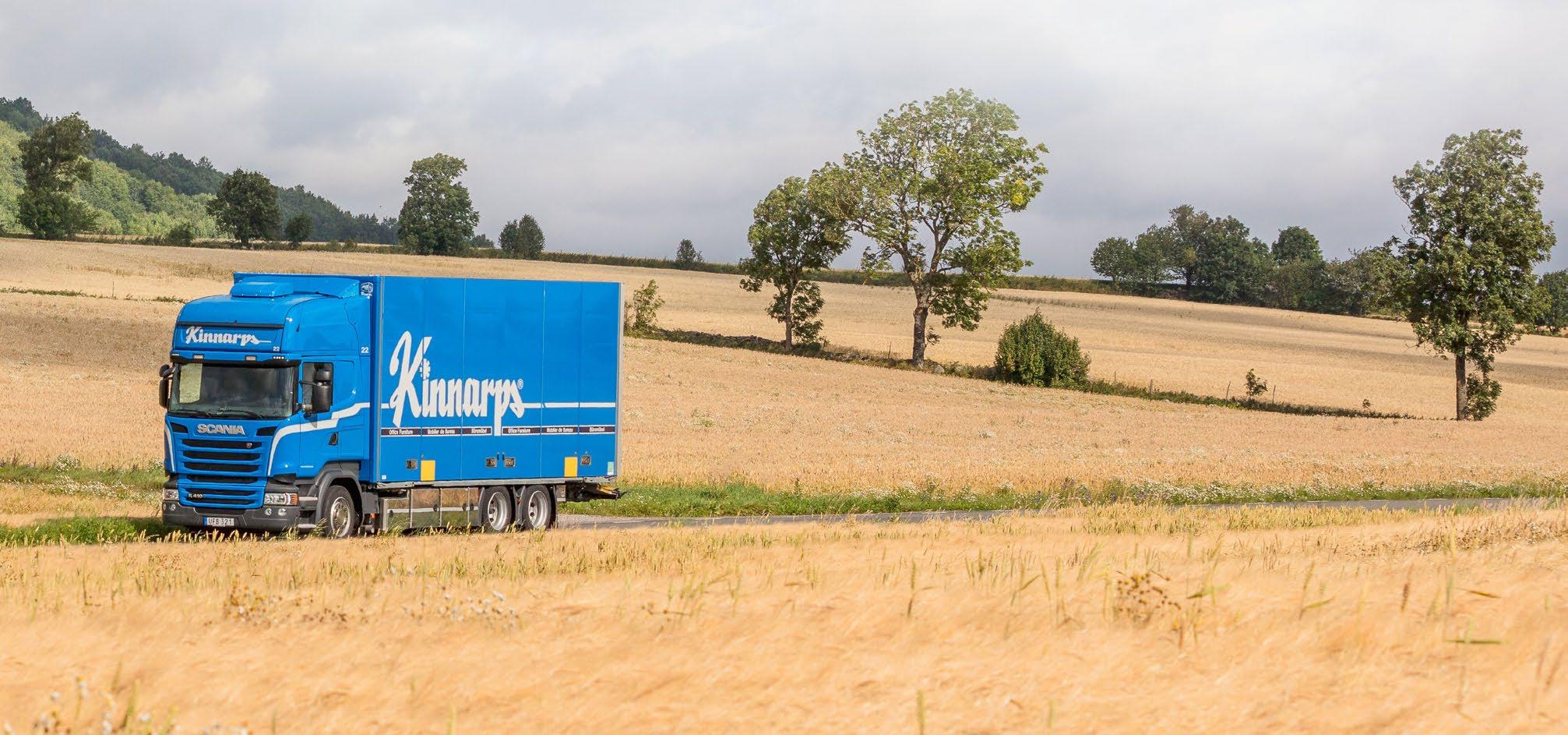
Pure materials
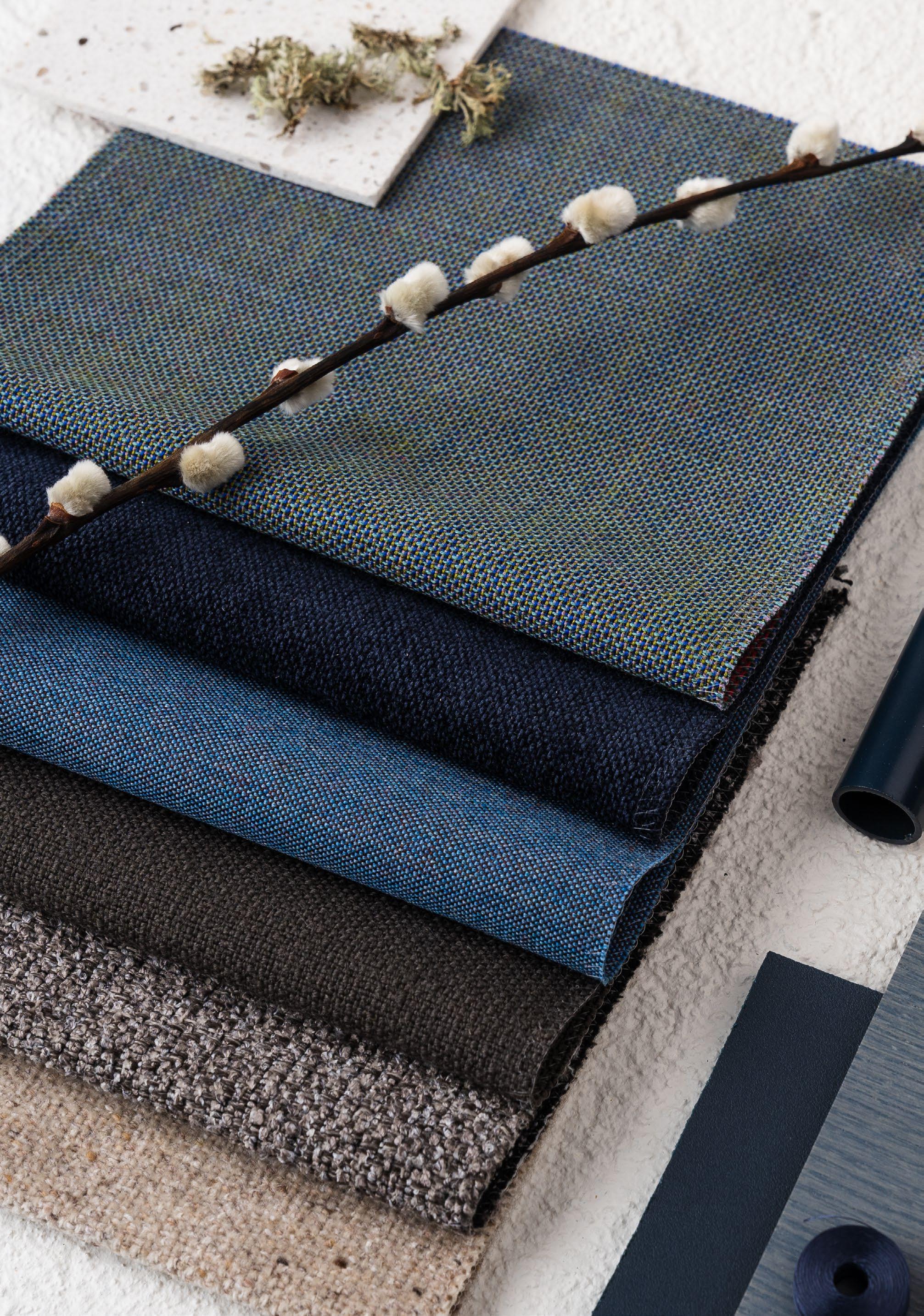
Since our furniture is used in spaces where children and adults spend much of their lives, it’s particularly important that our products do not contain harmful substances that adversely affect their health and wellbeing.
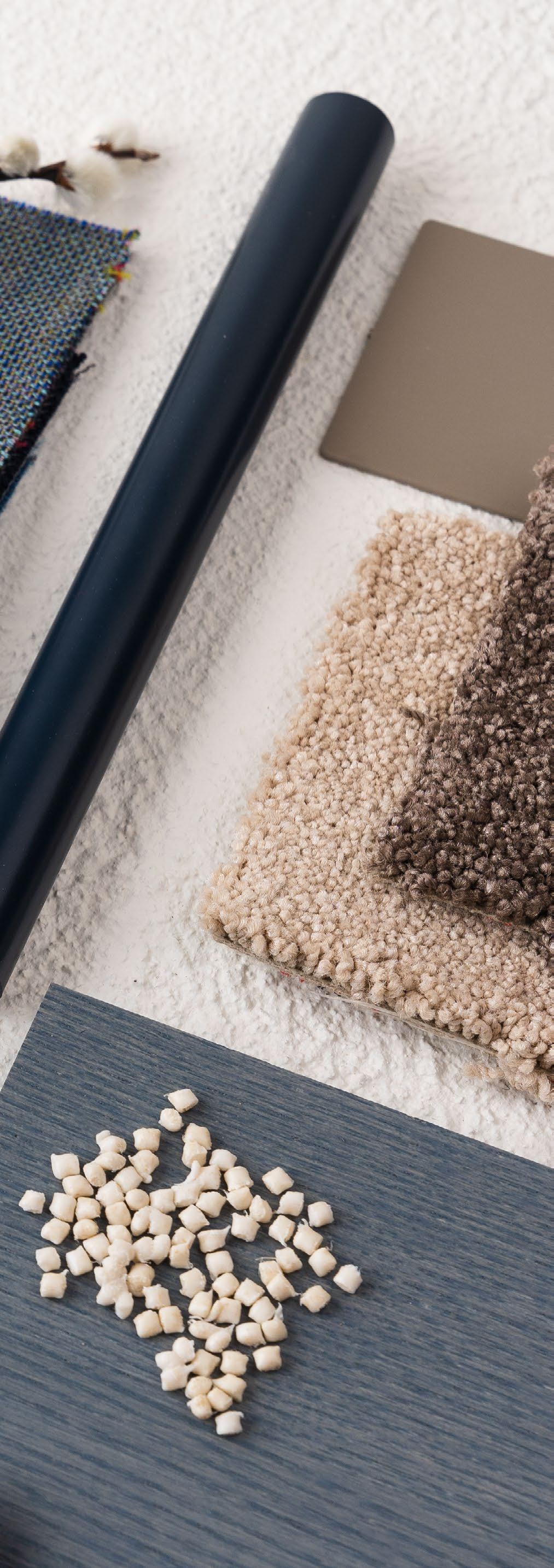
Definition
Furniture may contain substances that have a negative effect on the environment and public health. These substances may be present in the raw material from the start, or may be added during the manufacturing process. The substances may have an effect either via direct contact or via dispersal in the air.
CHEMICALS IN THE FURNITURE INDUSTRY
wood Both glue and the wood itself may contain formaldehyde. Surface treatments may contain aromatic solvents, volatile organic compounds (VOC), carcinogenic, mutagenic and reproductive toxic substances (CMR), particularly hazardous substances according to the EU’s chemicals legislation REACH (known as SVHCs) and allergenic substances.
textiles May be treated with a variety of environmentally and health-hazardous substances such as flame retardants, phthalates and other plasticisers, formaldehyde, dirt and grease repellents, toxic dyes, heavy metals and SVHCs
electronics Often contain flame retardants and may contain PVC plastic.
plastic and padding May be treated with flame retardants, phthalates and plasticisers. Plastic can also consist of PVC and both plastic and padding can contain heavy metals, chlorinated paraffins and SVHCs.
metal Can be surface-treated with a range of environmentally and health-hazardous substances such as chromium 6, aromatic solvents, substances with high VOC content, CMRs, SVHCs and allergens.
Materials that meet both environmental and quality requirements Challenge
Chemicals are needed in products to create highquality materials and surfaces that are resistant to wear. These properties in our products are essential in high-traffic spaces that need frequent cleaning and disinfection, such as hospitals, schools and restaurants. But these types of chemicals do not
always meet the requirements of the leading ecolabel systems, and more eco-friendly alternatives are often less suitable for use in demanding environments. Our greatest challenge is therefore to develop surface treatments that meet strict environmental and quality requirements.
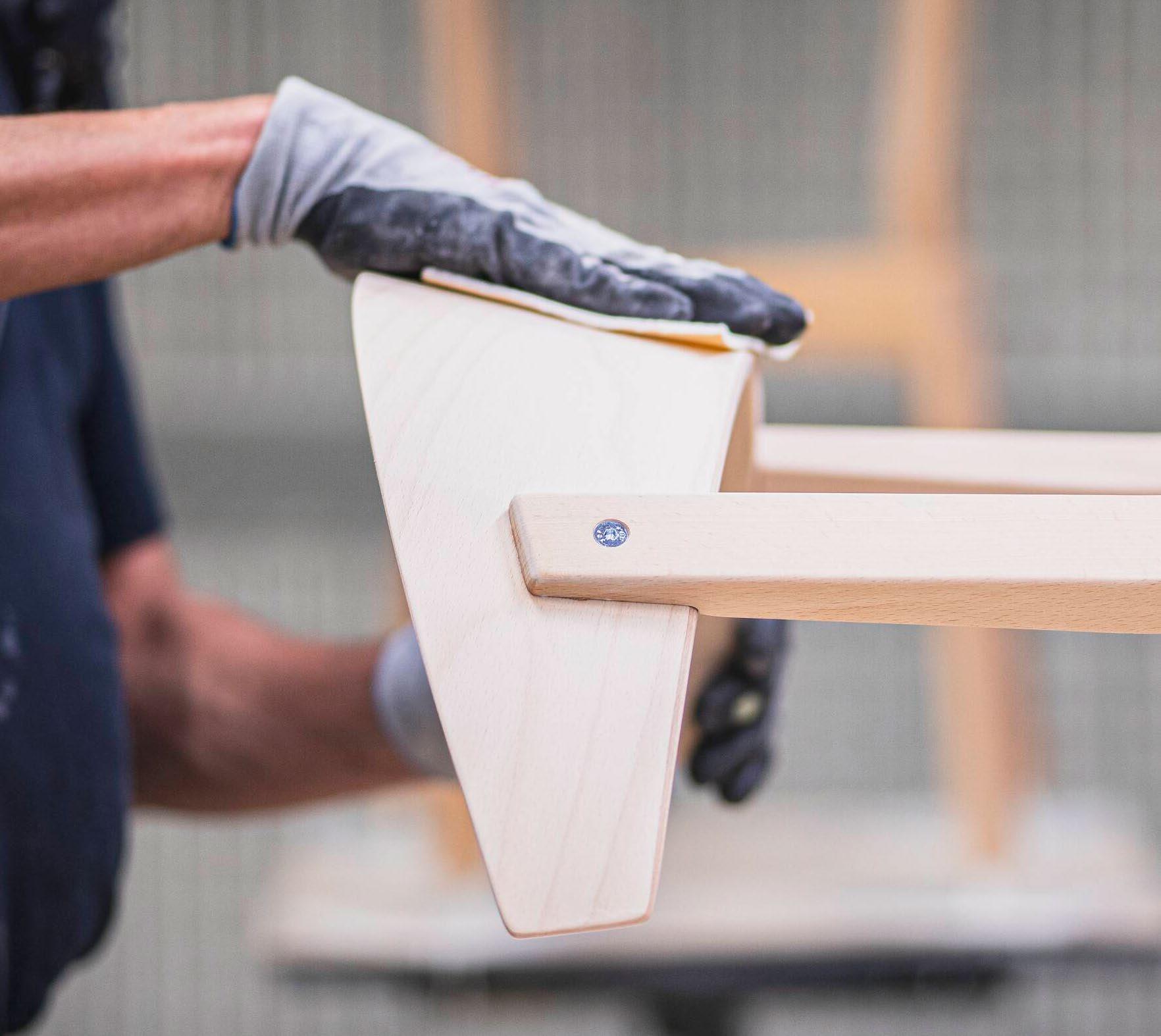
Strategy
Stricter requirements through product labelling
In order to ensure that our products do not contain unnecessary chemicals, we set requirements for all constituent materials and components. These requirements are based on the labels included in our ecolabelling policy: EU Ecolabel, Möbelfakta, GS, NF Environnement, NF Office Excellence Certifié and FSC, and cover all substances mentioned in the definition in the previous section. We’ve also carried out emission tests for certain products as per the requirements in M1, Indoor Air Comfort and ANSI/BIFMA. These tests show good results, with very low emissions. We have developed and improved our staining method for improved disinfection resistance. Stained tables and storage units can be wiped clean with disinfectants and then water without damaging the surface, which means that the products meet strict quality requirements and last longer.
chemical products The chemical products we use in our manufacturing are lacquer, glue, oil and detergents. Their use is monitored by means of a chemical management system at all our production units. This includes safety data sheets and updates in accordance with the REACH candidate list. We work continuously with the substitution of chemical products and substances, and conduct risk assessments within the framework of our systematic HSE management. During the year, we successfully replaced an adhesive in our production that contained a substance on the candidate list with an adhesive that does not contain environmentally or health-hazardous substances.
plastic and padding
Parts of the padding we use are moulded in-house and we’ve eliminated the hazardous isocyanate TDI. All foam is also free from flame retardants. The padding that we do not mould in-house is either audited or labelled with OEKO-TEX, which guarantees that the material meets stringent environmental and public health requirements. We stipulate that all plastics used in the Group's furniture should be free from Bisphenol A and phthalates.
wood Glue containing formaldehyde is used in the manufacturing of chipboard. All our chipboard meets the requirements corresponding to half of the European Standard E1, which means a very low emission of formaldehyde. For surface treatments, we primarily use water-based lacquers with zero or low solvent content. At the factory in Kinnarp, tables and storage units are surface-treated with UV lacquer, which ensures very low VOC emissions. We have also started testing fossil-free and renewable lacquers on certain products, which further reduces the environmental impact from production.
metal Hexavalent chromium is allergenic and carcinogenic, which is why we only use trivalent chromium. Powder lacquer is used for the surface treatment of metal, as it is VOC-free and also complies with ecolabelling requirements.
textiles The fabrics in the Kinnarps Colour Studio range are free from flame retardants and toxic dyes. Instead, we use wool, which is naturally flameretardant, or polyester fabrics with a flame-retardant fibre construction. 94% of our fabrics have either EU Ecolabel or OEKO-TEX certification. Our leather is vegetable-tanned without heavy metals.
electronics Electronics may contain metals and chemicals that can cause environmental and public health problems. We stipulate that our suppliers must always comply with the RoHs directive, which restricts or prohibits the use of certain heavy metals and flame retardants in electronics. Lead, mercury, cadmium and hexavalent chromium, as well as the flame retardants PDD and PBDE, are prohibited.
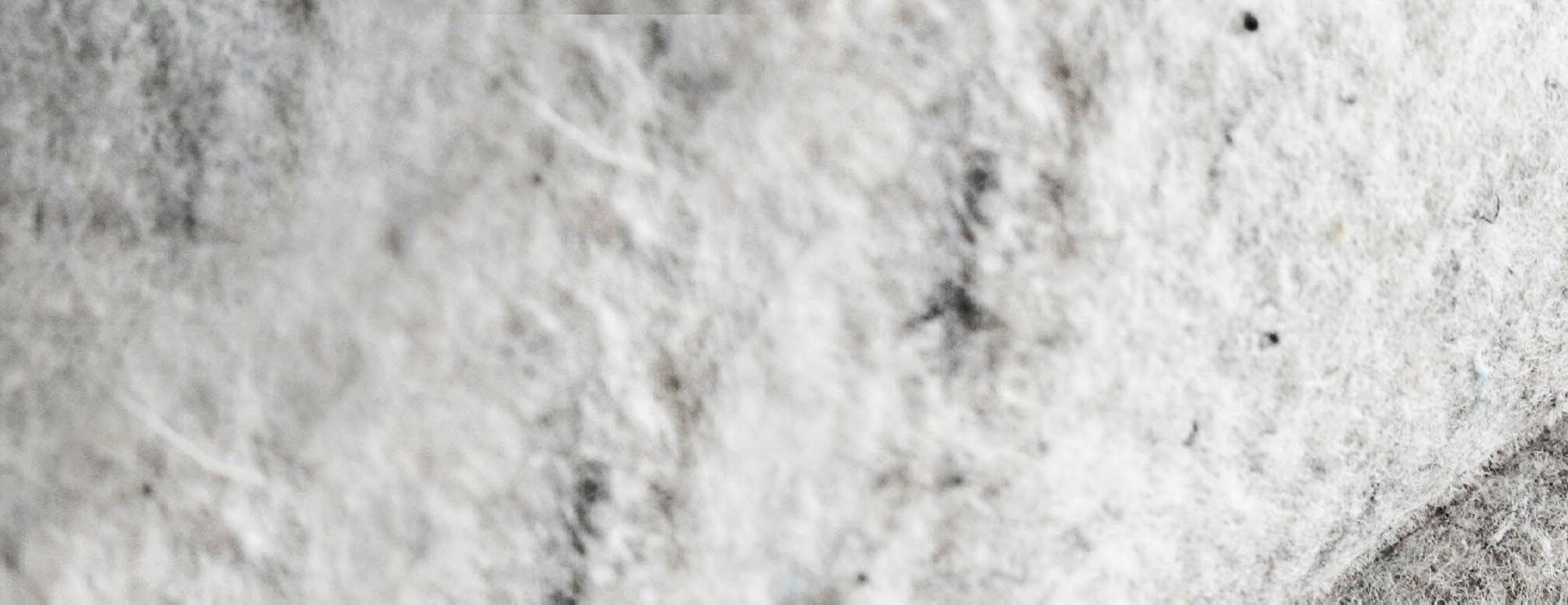
2030 long-term goal
Our goal is to create working environments with fewer chemicals and free from any materials classified as harmful to public health or the environment. This goal is linked to the UN's Sustainable Development Goal no. 12 ‘Responsible consumption and production’.
USE OF SOLVENTS
(VOC, TONNE) THE KPI REFERS TO OUR IN-HOUSE PRODUCTION IN KINNARP
analysis Our focus is on keeping the amount of VOCs in the lacquers used on our products as low as possible. Work to find alternatives with with lower VOC content is ongoing in close cooperation with our suppliers. During the year, we have changed the roller cleaner used when changing paint to one with a very low VOC content, which has helped to reduce the total VOC emissions by 20% in total weight. In 2024, the total surface area being painted also decreased significantly due to the fact that we have switched from painting the parts in our production to purchasing melamine-coated panels for certain components. Since the same amount of solvent is required for washing the rollers in the painting process, VOC emissions per square metre of painted surface also increased. As the amount of lacquered surface has decreased even more, we are still increasing our VOC emissions per lacquered square metre slightly.
During the year, we also started rebuilding one of our surface treatment machines in Kinnarp, which will be
2025 Goal
Our goal is for our solvent use to be less than 20g/m2 of lacquered surface.
better adapted to handle many different colours on our products. Once finished, this will mean that we will not need to wash the rollers as often, thereby also reducing our VOC emissions. At our facility in Kinnarp, we use UV lacquer on smooth, veneered surfaces, which gives a resistant finish and very low quantities of VOCs. At our Jönköping factory, we lacquer metal surfaces with VOC-free powder lacquer.
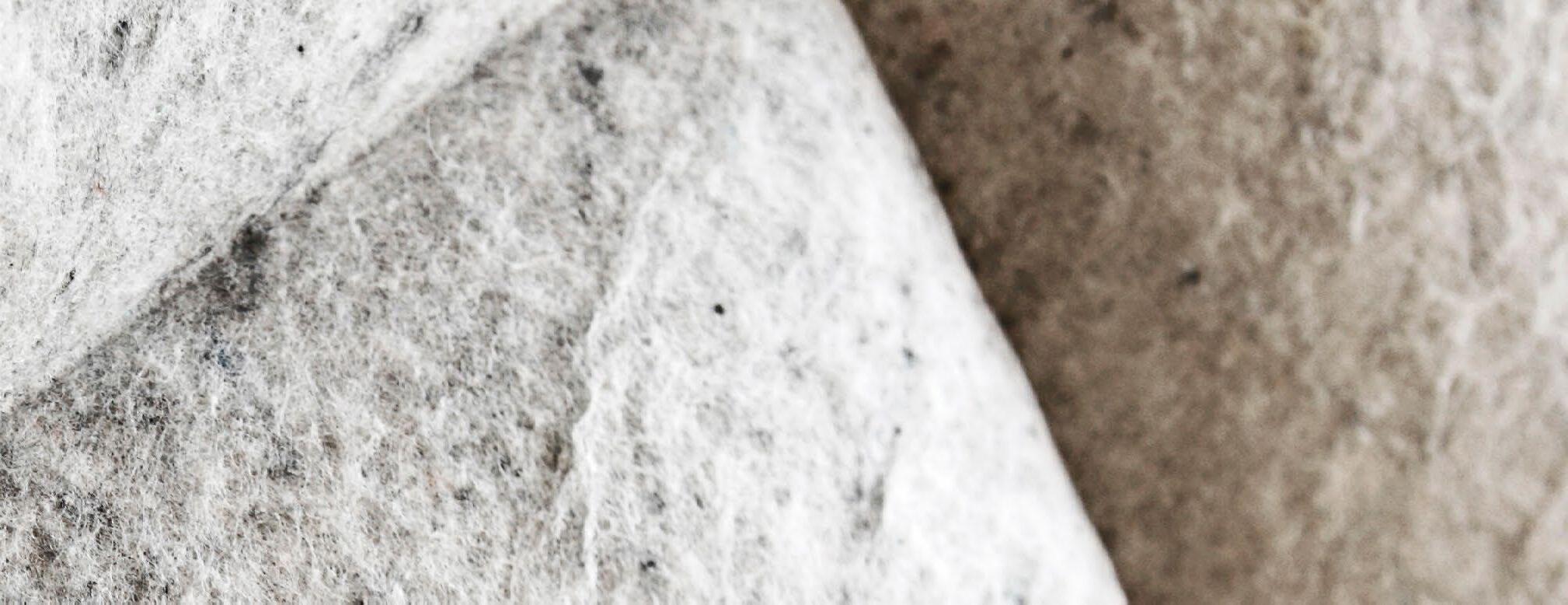
MATERIALS GUIDE
YOU CAN ENSURE THAT YOU GET PURE MATERIALS BY CHOOSING
ECOLABELLED PRODUCTS
Möbelfakta, EU Ecolabel and NF Environnement set high environmental standards for product content.
ECOLABELLED FABRICS
EU Ecolabel and OEKO-TEX guarantee that the fabrics are free from harmful chemicals.
POWDER LACQUER OR WATER-BASED LACQUER
Powder lacquer or water-based lacquer give zero or very low emissions of VOCs. High concentrations of these volatile organic compounds in the air pose public health and environmental risks.
HALF E1
Particle boards, MDF, Plywood etc. that meet half E1 or TSCA Title VI have very low emissions of formaldehyde.
CHROMIUM III INSTEAD OF CHROMIUM VI
Chrome is hardwearing, but choose chromium III, which is a better option for the environment and health.
PRODUCTS WITHOUT FLAME RETARDANTS
Flame retardants are stored in the body and can cause hormonal disturbances.
PRODUCTS FREE OF SUBSTANCES ON THE REACH CANDIDATE LIST
The Candidate List, part of the European chemicals legislation, contains substances that are classified as particularly harmful.
MÖBELFAKTA CERTIFICATES
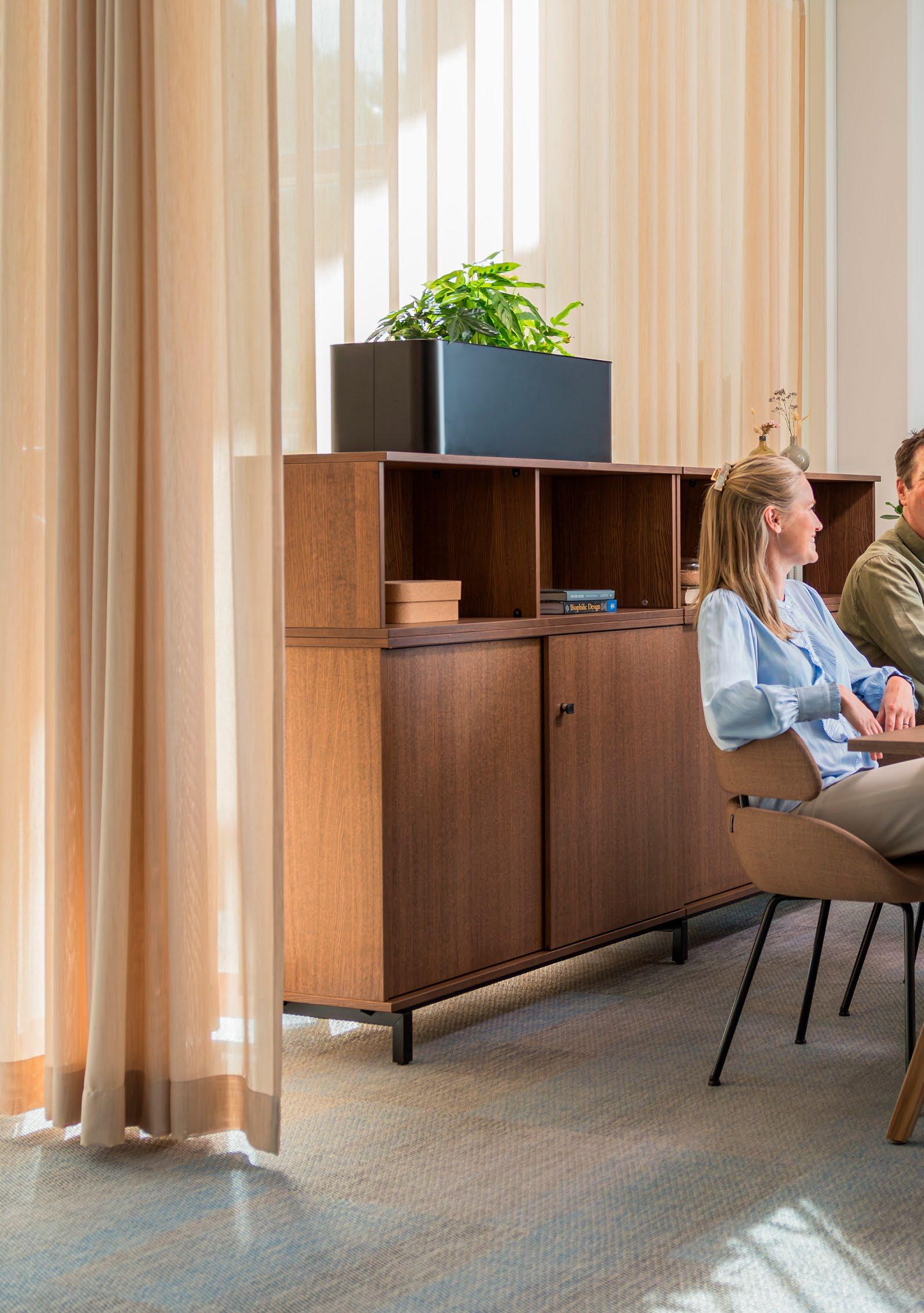
Social responsibility
It is self-evident to Kinnarps that all our employees should have decent working conditions, and our goal is to have verified and good working conditions throughout our value chain. This naturally applies not only to Kinnarps internally, but also to all of our external partners worldwide.
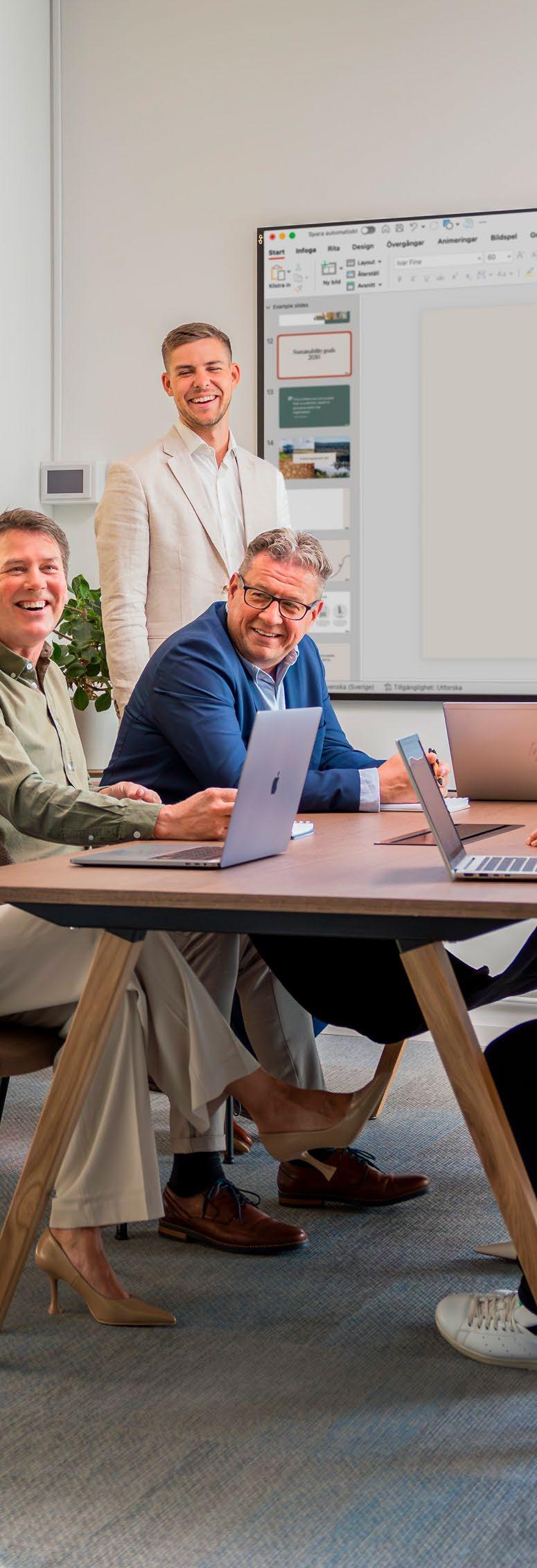
Social responsibility means that the employer should offer a good working environment, good working conditions and a living wage. It also means taking responsibility for the society in which we operate and counteracting corruption, as well as striving for a good local environment and respecting human rights. Our social responsibility covers not only the employees in our own operations, but also the people who work for the suppliers in our supplier chain.
Ensuring compliance with our requirements
We know from experience that it is not enough just to specify our requirements. We also need to follow up and ensure that our suppliers are in fact complying with our requirements. It’s easiest for us to influence our direct suppliers, while longer supplier chains are difficult to monitor, since we lack the necessary financial relationship. In order to monitor further down the chain, we need to have an agreement with the direct supplier.
Follow-up
One challenge for our organisation is to create a diverse workforce, and make full use of the skills in our organisation and in society at large. Another challenge is to offer all employees in the Group the same high level of working environment.
of our own and our suppliers’ operations
our own operations Our Code of Conduct sets out our principles in the areas of human rights, labour law, environmental practices and anti-corruption. The Code is based on the company's core values and the UN's Global Compact. All units and employees in the Group have a duty to respect and comply with the Code of Conduct. We have a whistleblowing system that enables anonymous reporting of violations of the Code without the risk of retaliation for the whistleblower. During 2024, we have received and dealt with one such whistleblowing incident. Our rules of conduct concerning gifts and benefits are also made clear in our entertainment policy and in our procedures. Kinnarps has collective agreements covering all employees in Sweden, France and Belgium, as well as parts of the workforce in Denmark and Germany. This means that 80% of the Kinnarps AB Group’s employees are covered by collective agreements. On the worker side, the corresponding figure is 100%.
In Norway, Kinnarps follows agreements between Norges Hovedorganisation (NHO) and LO on a voluntary basis. Trade union collaboration at Kinnarps includes continuous dialogues with the trade unions for the various agreement areas in which Kinnarps has employees. In addition to those governed by legislation, issues that are dealt with also include reviews of the working environment, employee wellbeing, pay policy, pay surveys, diversity and inclusion, as well as input regarding the development of the company in the short and long term.
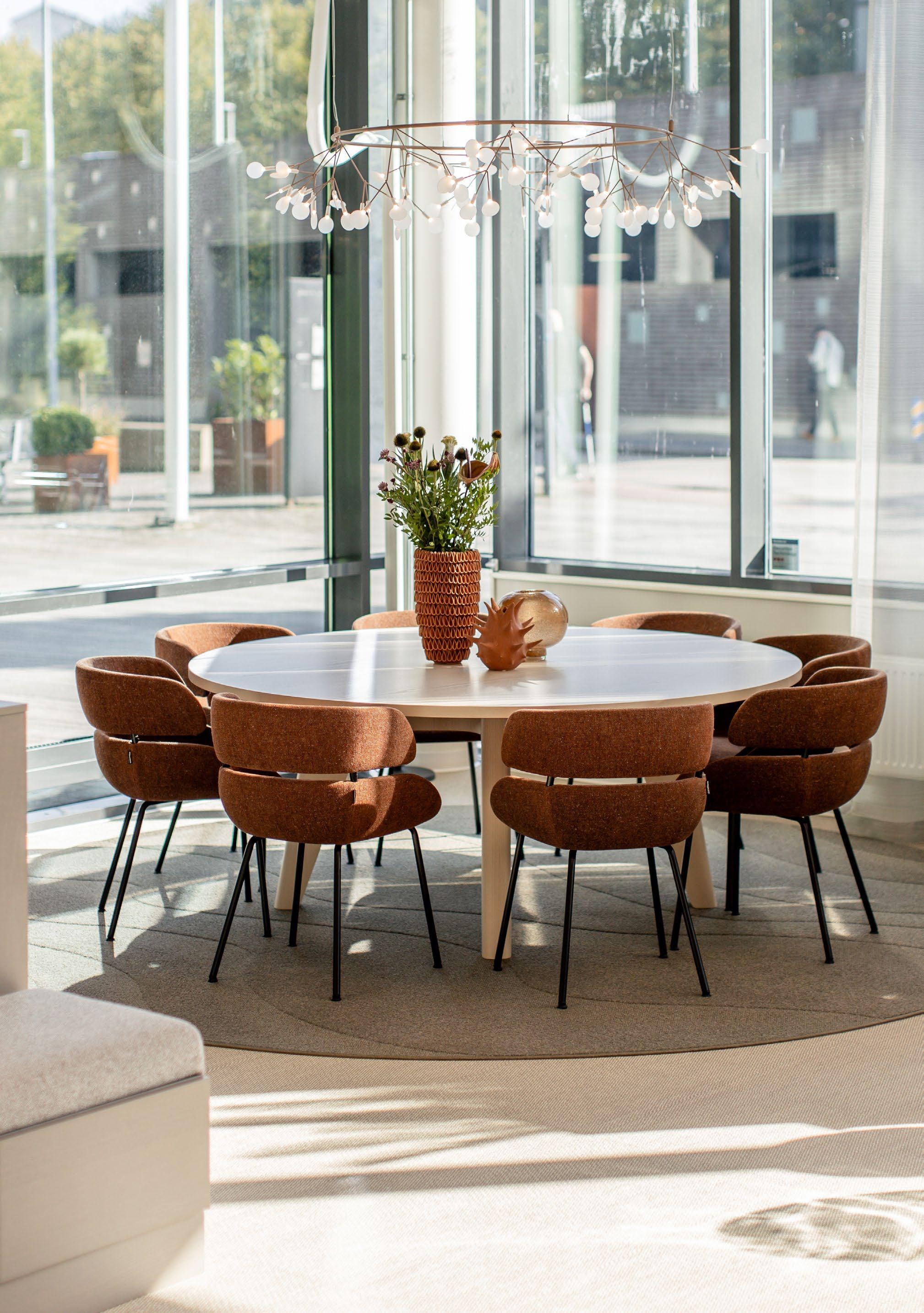
100% of our production units have ISO 45001 health & safety certification
DIVERSITY AND INCLUSION The Kinnarps AB Group has a group-wide diversity policy which stipulates that Kinnarps starts from a fundamental position of the equal value of all people and that everyone should be treated with respect and dignity, regardless of human differences. Accordingly, we have zero tolerance for any form of harassment or victimisation that may occur in the workplace or in work-related situations. Kinnarps has conducted a mapping of diversity and equal treatment in the workplace based on employee statistics, results from a survey, and documentation analysis of the company’s policies and procedures. Based on this result, we have developed a diversity plan with goals and actions. The initiatives carried out include anti-victimisation training courses for managers and safety representatives.
During the year, we joined forces with Dalénium and Falköping Municipality to run a summer course for girls interested in STEM subjects in order to offer more girls the chance to try out STEM professions and learn more about future STEM jobs and training paths.
Kinnarps also conducts an annual pay survey to ensure there are no unfair gender pay differences. We work with skills-based recruiting and other initiatives to ensure a more even gender balance and to give employees the opportunity to develop their skills.
SKILLS With the right skills, we create security and motivation among our colleagues, as well as the ability to perform their tasks effectively. We work with controlled skills development to ensure each employee has the skills to match their job description, and to enable us to meet the requirements and needs of our business. Once a year, all employees should have a performance appraisal with their manager to identify any skills needs etc. The implementation of skills-enhancing activities can take place via physical training, apprenticeship, digital training via webinars, e-learning, nano-learning or self-directed learning.
Since 1980, Kinnarps has collaborated with Falköping Municipality to run a business-based upper secondary education programme in the form of an industry programme. Every year, we have the opportunity to receive 16 students with the aim of training competent and technically skilled individuals with a good feel for wood as a material. These students form a good recruitment base for the wood industry, both for Kinnarps and for other industry operators in our region.
WORKING ENVIRONMENT AND SAFETY We work systematically with health and safety at our units, and all production units within the Group now have
ISO 45001 health & safety certification. We carry out risk assessments and inspections to prevent accidents and near-accidents. Our greatest risks are related to falling objects, crushing injuries and falls from tripping or slipping, as well as stress during work peaks. We systematically record and investigate accidents and near-accidents, and implement measures to ensure that the incident does not happen again.
During the year, we have focused on several important areas to improve safety at our workplaces. Much of our work in our production units has been to raise awareness of safe forklift handling, where we have updated and clarified the internal regulations for forklift handling. We have also worked to strengthen our overall risk assessment work, which has led to better preventive measures and reduced risks in several areas. We have focused on systemising the work, where information and the implementation of risk assessments now take place in one and the same system, giving a better overview of what has been done and what needs to be implemented.
We are also working to raise awareness of the importance of reporting all incidents, large and small. Through these measures, we are actively working to create an even safer working environment for all our employees. Since 2022, our definition of incidents
NUMBER OF EMPLOYEES:
has been adjusted, so that even minor incidents are classified as accidents. We are therefore also seeing an increase in the number of accidents in the statistics from 2022. Incidents occur primarily in our production units, where relatively large amounts of material are handled manually. The majority of incidents are minor events that do not lead to absence.
Our health and safety work is carried out in collaboration with the health and safety organisation. Kinnarps has a collaboration plan that outlines how Kinnarps works to ensure consultation and participation with employees and/or employee representatives in the health and safety area. Collaboration takes place, for example, via a working environment collaboration meeting, working environment committee, risk assessments and inspections.
MANAGERS:
the supplier chain We set requirements for all our suppliers through our Supplier Code of Conduct. In this Code, we clarify our expectations and requirements of the supplier in connection with human rights, working conditions, the environment and anti-corruption. The Code is based on the ten principles of the UN Global Compact, and through the Code we also support the eight core conventions of the ILO. Although Kinnarps’ Supplier Code of Conduct sets higher requirements than national regulations, legislation or standards, we require the supplier to respect and comply with the Code. In addition to these basic requirements, we also set material-specific requirements, based on ecolabelling, for the material they supply to us.
RISK ASSESSMENT
We have mapped and compiled an overall risk analysis concerning social responsibility in the supplier chain, which aims to show which general risks may be present. The overall risk analysis compiles information from several different sources, both company-specific and publicly available sources, and conducted risk analyses in the industry. Based on the risk analysis, three main risk factors have been identified: country of manufacture, type of process and type of material.
The conditions in the country where the raw material is extracted or manufactured are of great significance to the level of risk. In cases where raw material extraction or production takes place in countries with ineffectual judicial institutions and limited legal certainty, the risk to human rights, working conditions, the environment and anticorruption is assessed as high. At the raw material level, traceability is limited and thus the risk tends to increase farther down the supplier chain.
There is a high risk in the areas of human rights and workers’ rights in both the production of raw materials and in manufacturing. The risk of violations of human rights and working conditions depends to a large extent on the country in which the production takes place. In forestry, there is a risk that wood has been harvested illegally. The illegally harvested timber can eventually end up in legal trade flows through smuggling. The supply chain for electronic components is often long and complex and includes numerous subcontractors. The supply chain for textile materials differs depending on the type of material used, but even here, there can be a high risk. There is
a high risk in the areas of human rights and workers’ rights in both the production of raw materials and in manufacturing. There are particularly high risks in the extraction of so-called conflict minerals. Physically demanding extraction may entail an elevated risk in terms of working conditions and health and safety, and manufacturing involving heavy chemical use may pose a high risk to health and safety.
During the year, we introduced a new support system to help us assess risks per supplier. The system contains predefined questionnaires in different areas, such as human rights, corruption and biodiversity, as well as the possibility to create our own, customised questionnaires adapted to our business. When our suppliers have answered the questions, they are designated a risk value in the system based on their answers. If there are any uncertainties linked to any questions, these are flagged and we send a request for clarifications. If, based on the documentation, we cannot prove that the risk is low or negligible, it is classified as heightened. The risk analyses show that there is an elevated risk linked to a number of suppliers, who together account for 7% of the purchasing volume.
FOLLOW UP AND ACTION PLANS In cases where we deem there to be a heightened risk of failure to fulfil the requirements in our Code, we conduct an on-site audit at the supplier's premises. If deviations are identified during the supplier audit, the supplier draws up an action plan to rectify the deviation. The supplier’s action is then followed up by evidence and verifications or on-site visits. Any deviations need to be remedied in order for us to initiate or continue with a partnership, and if the supplier refuses to address our criticisms, we will terminate the relationship.
All suppliers of materials and components who have been assessed as having an elevated risk have been followed up with an audit. This means that 100% of our suppliers of materials and components for our products have either been assessed as low risk or have been audited. The audits show that the conditions on our supplier sites are generally good. The most common shortcomings are minor ones connected to fire prevention and a failure to use PPE, even though it is available. When we conduct followups of measures taken by the suppliers, we see that there have been improvements and that our work has been effective.
PREVENTIVE WORK In recent years, we have insourced the production of certain articles and components to our production in Sweden, thereby taking responsibility for a larger part of the supply chain. For several years, we have worked to bring home production of plastic components, primarily from suppliers in Asia to our production in Skillingaryd. We have also insourced metal production to our factory in Jönköping, which will continue in the future. In order to continuously improve knowledge of our supply chain, we work continuously to maintain and develop our close cooperation with key suppliers, which is positive for both parties.
We insist that all articles purchased must meet material requirements based on the criteria in the applicable ecolabels. We have procedures for checking the origin of all wood raw material with regard to tree species and country of harvest, and work to ensure that all wood raw material is certified. In 2024, 98% of the
wood raw material used in the Group’s products was certified. The FSC label requires all certified companies to live up to the ILO’s requirements for labour rights, and through the requirement for an unbroken chain of certified operators, third-party audits are also carried out on all operators, from forest to finished product. 94% of the fabrics in our range are OEKO-TEX® or EU Ecolabel certified, which means they have been manufactured with regard to the environment and health, and there is third-party verification of compliance with ecolabel criteria. We require that conflict minerals must not be included in electronics and request information and verification from our suppliers. By taking this measure we want to ensure that we do not use electronics containing tin, tantalum, tungsten or gold which have been extracted illegally, or whose extraction contributes to supporting conflicts.
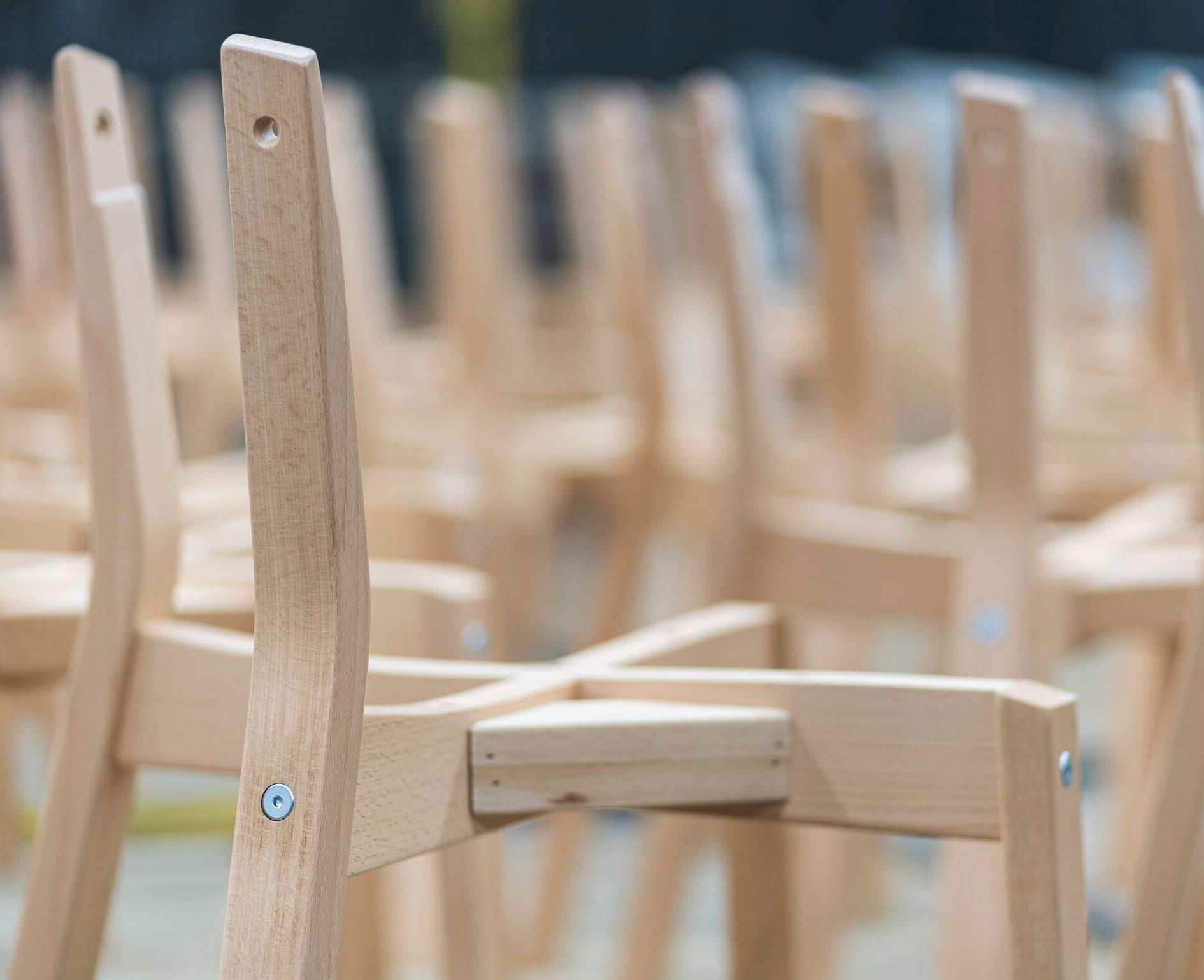
2030 long-term goal
Our goal is to have verified good working conditions throughout our value chain, contributing positively to the social development on the sites where we and our partners operate. This goal is linked to the UN's Sustainable Development Goals 3, 8 and 10, ‘Health and well-being’, ‘Decent work and economic growth’ and ‘Reduced inequalities’.
PROPORTION OF PROCUREMENT VOLUME (SEK)
CLASSIFIED AS LOW RISK OR ELEVATED RISK
FOLLOWED UP BY AN AUDIT*
93%
LOW RISK
7%
ELEVATED RISK FOLLOWED BY AUDIT
0%
ELEVATED RISK
* Procurement of the products in our own range

analysis Based on our risk analysis, a number of suppliers, who together account for 7% of the total purchasing volume, have been assessed to have an elevated risk. This is a slight increase from the previous year, which is due to the fact that we have further refined our assessment methodology. Some suppliers that were previously classified as low risk have therefore now been reclassified as being at heightened risk. We have followed up with all of these suppliers with at least one audit, which means that 100% of our suppliers of materials and components for our products have either been assessed as low risk or have been audited. We are working to gradually minimise our presence in countries and with suppliers who might generate an elevated risk. In a turbulent world, it is important to secure the supply of materials and spread the risks, without compromising our high quality and environmental requirements. We have succeeded in this through close and long-term cooperation with our key suppliers. At the same time,
we have minimised the risks of the material being produced in a way that violates our code of conduct. We are working actively to insource the production of plastic and metal components to our own factories in Sweden in order to increase control of the supply chain and further reduce risks.
2025 Goal
100% of our purchasing volume should be classified as low risk or elevated risk followed up by an audit.
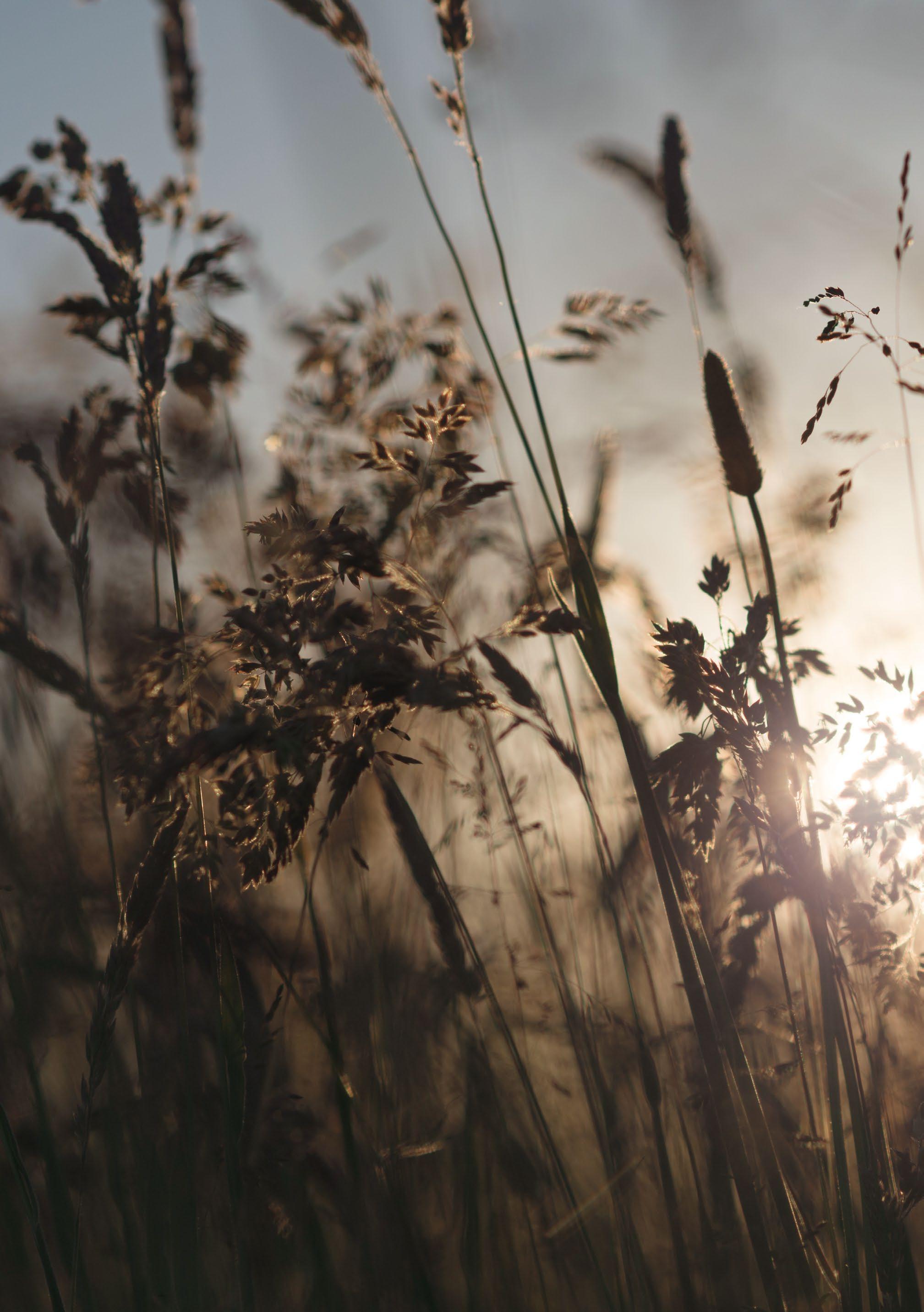
Circularity
Just because something is circular doesn’t automatically mean that it’s sustainable. At Kinnarps, we focus on sustainable circularity. We do this by creating interior design solutions and furniture that last over a long period of time.
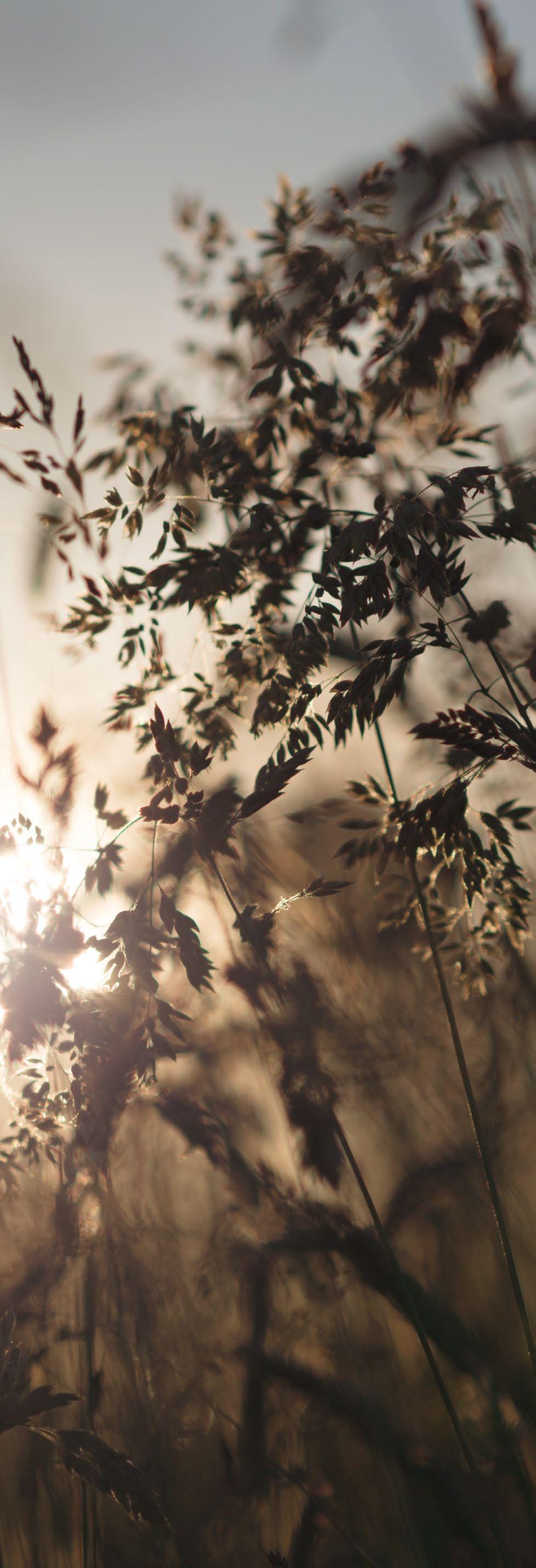
Definition
Circularity is about keeping materials and products in use for as long as possible. It’s also a business area with great potential for improvement, as every year we throw away about 10 million tonnes of furniture in the EU. With circular business models and services, we can not only extend the lifespan of existing furniture, but also design new products using recycled materials and in a way that makes them easier to update.
USE OF RECYCLED MATERIAL IN OUR MANUFACTURING
70% CHIPBOARD
20% STEEL
50–100% MOULDED ALUMINIUM
12% TEXTILES*
*Based on the annual mix of textiles sold. The customer can choose the fabric, which affects the proportion of recycled material.
Increased circularity Challenge
The best way to reduce the environmental impact of a product is to extend its lifespan and optimise its use. Our industry has traditionally worked with linear flows and business models. The great challenge lies in changing these flows to make them more circular. Above all, it’s about developing cost-effective solutions. Reuse is labour-intensive and so we need to find models in which any savings are not swallowed up by increased labour or transportation costs.
When products are to be reused and refurbished, it can also be a challenge to ensure that they maintain a good quality, and meet product safety and chemical content requirements. Our ambition is to increase the use of recycled material in our products, but we are often hindered by the fact that the recycled materials do not fulfil quality requirements in relation to e.g. durability or the colour-fastness of fabrics.
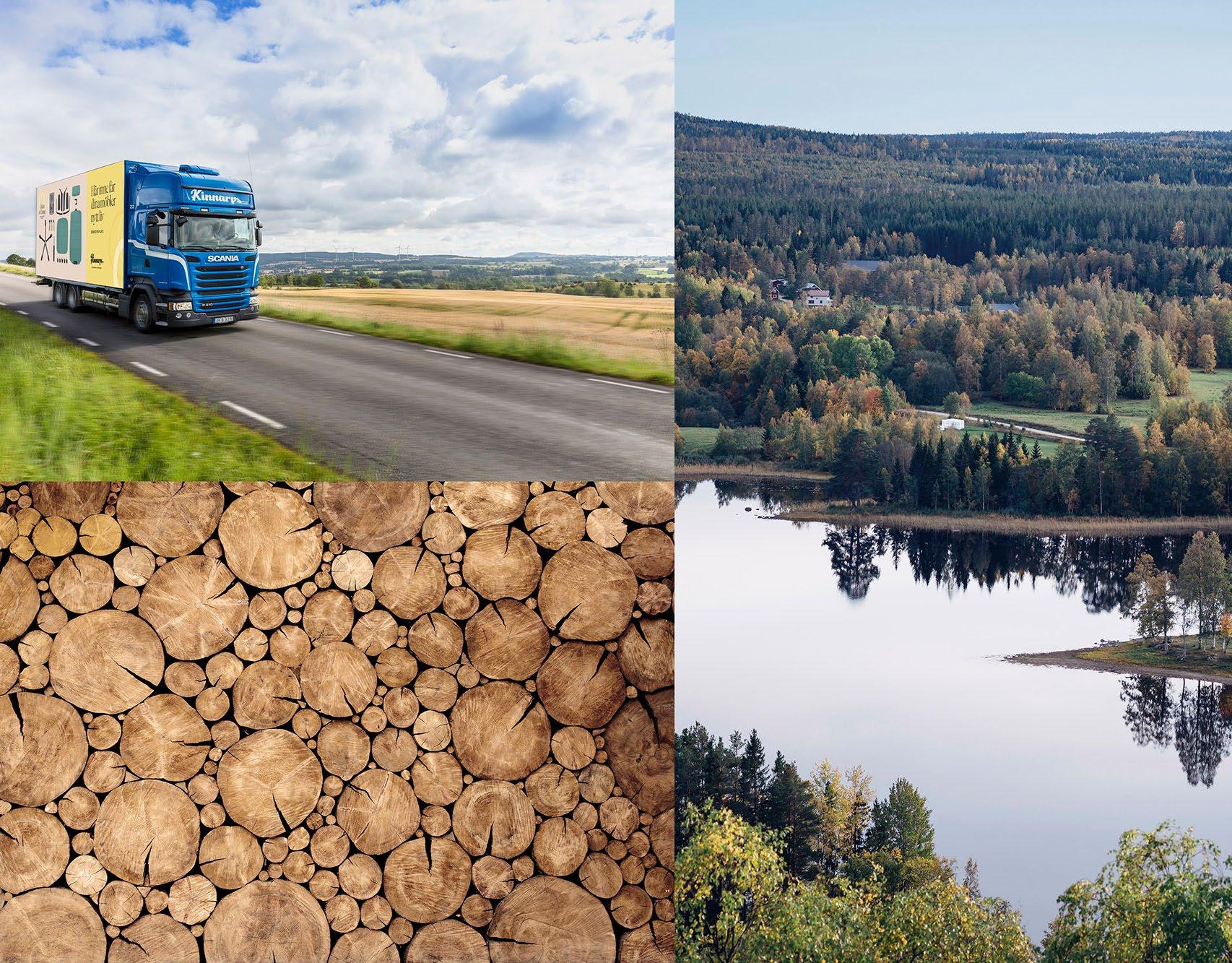
A long-lasting classic
Kinnarps’ classic 6000, 8000 and Plus task chairs all belong to the same product family and thanks to their smart and ergonomic features more than 4 million units have been sold. The first version was launched way back in 1993 and in 2001 an update with a new seat and back design was introduced – the Plus chair. The chairs are based on the same platform, with a focus on ergonomics and modularity. The easy replacement of various seat components facilitates both repairs and design updates. This means that these chairs can last and be used for a very long time.
Spare parts for control mechanisms
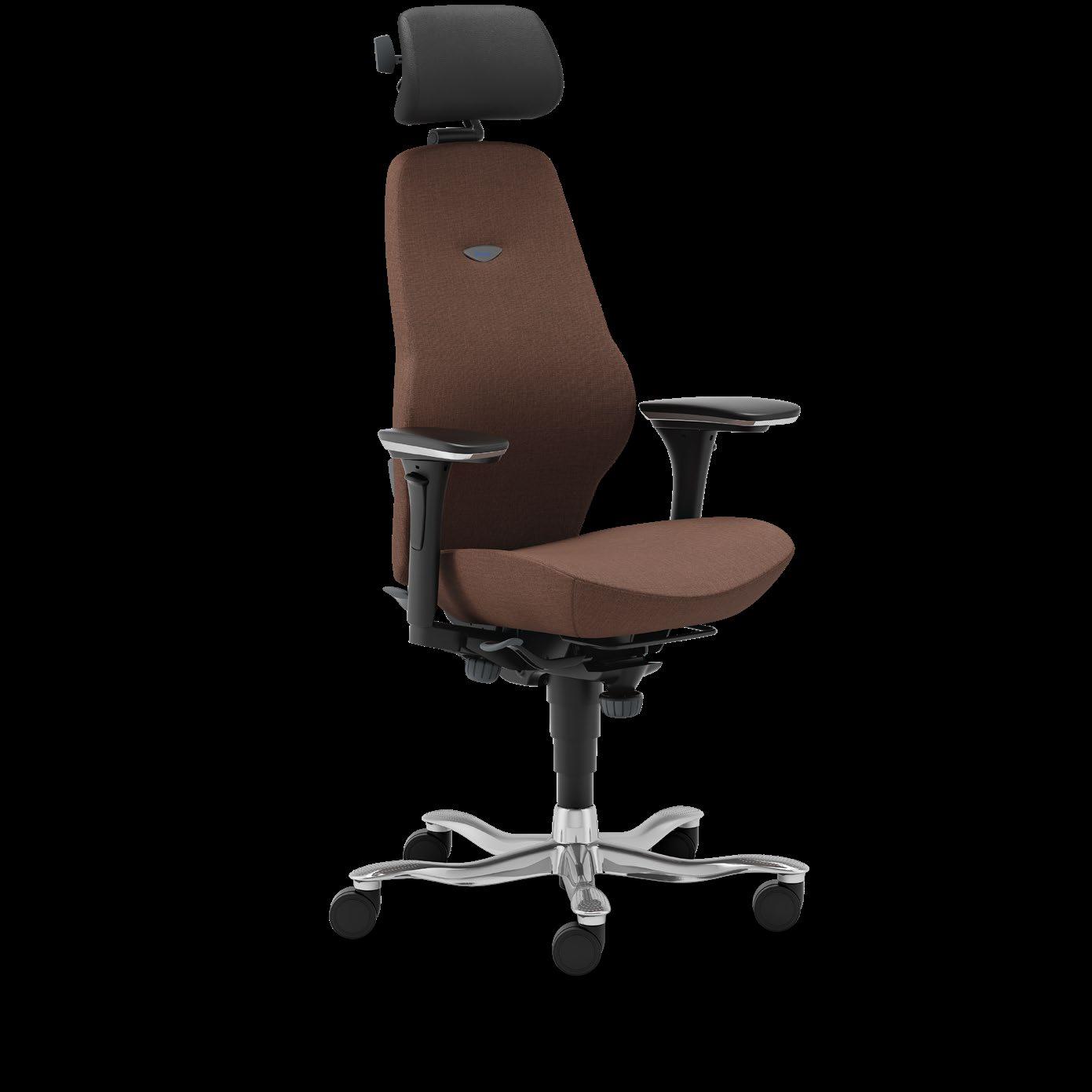
Sustainable circularity is when products are designed and manufactured to be updated –right from the start! Here you can see one of our office chairs with its replaceable parts.
Just because something is circular doesn’t automatically mean that it’s sustainable
With the Sustainable Circularity concept, we want to challenge the concept of circularity and how to specify requirements for sustainable interior design. Circularity is often equated with sustainability, but a product only becomes sustainable once it’s been designed for long-term use. In this concept, we’ve developed three keys to consider when choosing sustainable and circular interior design. We have also collected our services that help to prolong the life cycle of our interior design solutions. This concept helps our clients make sustainable, circular and functional choices from the start. It’s about making conscious choices, creating flexible solutions and choosing high quality to get a future-proof solution. The result is an interior design with a low life cycle cost, which has been designed according to identified needs and promotes wellbeing, efficiency and success, while conserving natural resources.
Three keys for sustainable and circular interior design
We have developed a Sustainable Circularity concept. Each ring symbolises a key to choosing sustainable interior design all the way.
CHOOSE HIGH QUALITY
1. MAKE CONSCIOUS CHOICES
Circular product design and new business models
product design When developing new products, we integrate circularity right from the start. We focus on creating high-quality products with a long lifespan. The products are also tested in our accredited test laboratory to ensure that they fulfil our strict quality requirements and standards. We have also created our own test methods that we use in product development to simulate how products are used in real life, as a means of testing their longevity.
It is crucial to choose the right materials and colours for each respective environment if the interior design is to stay in good condition over time. We guide our customers in choosing materials and colours that are adapted to the type of environment in which the interior design will be used. To help our customers keep their spaces attractive and functional in the long term, we also offer advice for caring for the different materials. By developing product ranges based on modular platforms that can be combined in different ways, we create flexibility for our clients to change and supplement the products as their needs change. We are striving to increase the amount of recycled material in our products, and in the last few years we have begun to manufacture several components made from recycled plastic in our new plastic production in Skillingaryd. For example, we cast plastic components for several of our task chairs, desks and storage series from partly recycled material.
We work continuously to minimise waste in our operations and, as far as possible, take advantage of the waste that arises. Leftover fabric from our factory in Skillingaryd is turned into new products in our sound-absorbing material Re:fill, used in several of our screen systems. In connection with launching the update of our Kinnarps Colour Studio material range, we have introduced several new screen fabrics, where we, in collaboration with the supplier, send back waste fabric for material recycling. Our waste fabric is then used in the production of new textile products.
We participate in several research projects focusing on circularity. Kinnarps has joined the GRACE research project together with, among others, Jönköping University. The purpose of GRACE is to support the green transition in the manufacturing industry, where we will focus on further strengthening our competence in sustainable product development. Materia is part of the Re:furn project, which aims to develop circular business models and strategies for remanufacturing in the furniture industry.
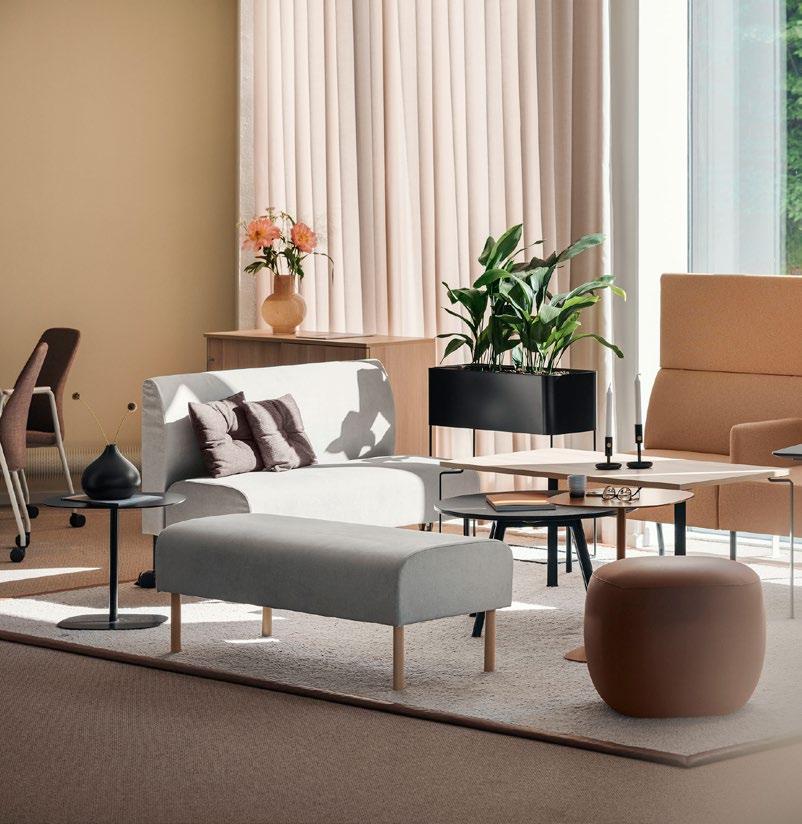
Our products are designed for renewal, for example through removable upholstery and replaceable parts such as tabletops and seats. We currently offer 29 product ranges with removable upholstery.
services and business models The choice of furniture, its lifespan and how it is used affect the furniture’s environmental footprint. This is why we want to help our clients invest in the right furniture for the right needs, from the very start. We use our workplace analyses for offices, schools and care facilities to map out the needs of the organisation and use this data to create a business adapted and flexible interior design solution. By buying or leasing both newly manufactured and reused furniture, use can be optimised and the furniture circulated according to changing needs. We also carry out inventories, evaluations and action analyses of existing interior design. This provides important knowledge about how the interior design can be reused, renovated or updated. Frequently used furniture is subject to wear and tear, and we offer a number of different care services to ensure that it lasts over time. Furniture washing and maintenance services keep the interior design looking good and lasting for longer. If parts of the furniture need replacing or updating, our wide range of spare parts offers plenty of solutions. In order to minimise the time the client has no access to their furniture, and to reduce unnecessary transportation, we strive to maintain the furniture on site either inside the client’s premises or outside in our mobile renovation truck. We carry out major renovations such as reupholstering and relacquering in our factories, which enables us to provide existing furniture with a completely new look or new functions. Through the Materia Re:loved concept, we offer re-upholstery of a selection of products from Materia’s range. Whenever possible, we make use of components from furniture that can no longer be used in its entirety as spare parts for other products. Only when none of these options is possible will the worn-out interior be separated and recycled at reputable recycling companies.
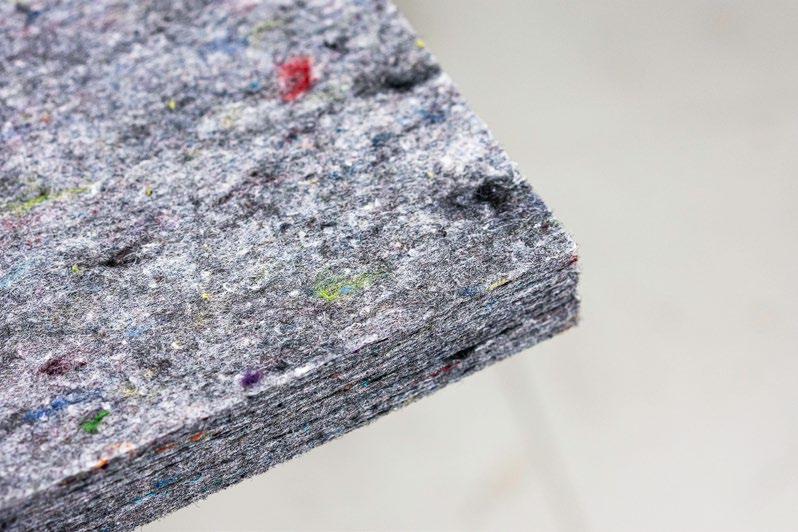
Our sound-absorbing material Re:fill is an example of how we use waste fabric to create new products.

“The longer the lifespan of an item of furniture, the lower the environmental impact from a usage perspective. That’s why we focus on creating furniture with the potential for a long life.”
Johanna Ljunggren, Sustainability Manager at Kinnarps

2030 long-term goal
Our goal is for all our products to be designed for a long lifespan, and for our interior design solutions to be part of a circular flow that extends the life of products and materials. We aim to use more recycled materials in our products and find innovative ways of using the leftover material from our operations. This goal is linked to the UN's Sustainable Development Goal no. 12 'Responsible consumption and production'.
PROPORTION OF RECYCLED WASTE FROM OUR OWN OPERATIONS*
* Production in Kinnarp, Jönköping, Skillingaryd, Tranås, Vinslöv and sales subsidiaries.
analysis The proportion of waste for material recycling ended up at 34% this year, a slight decline from last year’s 37%, mainly due to an increase in waste that went to energy recycling. During the year, we have reduced the proportion of waste going to landfill, largely thanks to better sorting at our sales offices. We have invested in increasing the collection of food waste to cover a larger part of our factories, thus contributing with local resources that become biofertiliser and biogas. Leftover sound-absorbing material is returned to our
material supplier, who recycles it into new material. We have also started to use fabric bags, which we make in-house from fabric remnants, for transporting plastic seat shells from our factory in Skillingaryd to Kinnarp. These fabric bags replace plastic bags and are used again and again. During the year, we also insourced the production of a number of components made of metal, plastic and wood to our own production units, reducing the need for transport and packaging as this material is transported using our own logistics system.
35% of the waste from our operations should be sent for material recycling.
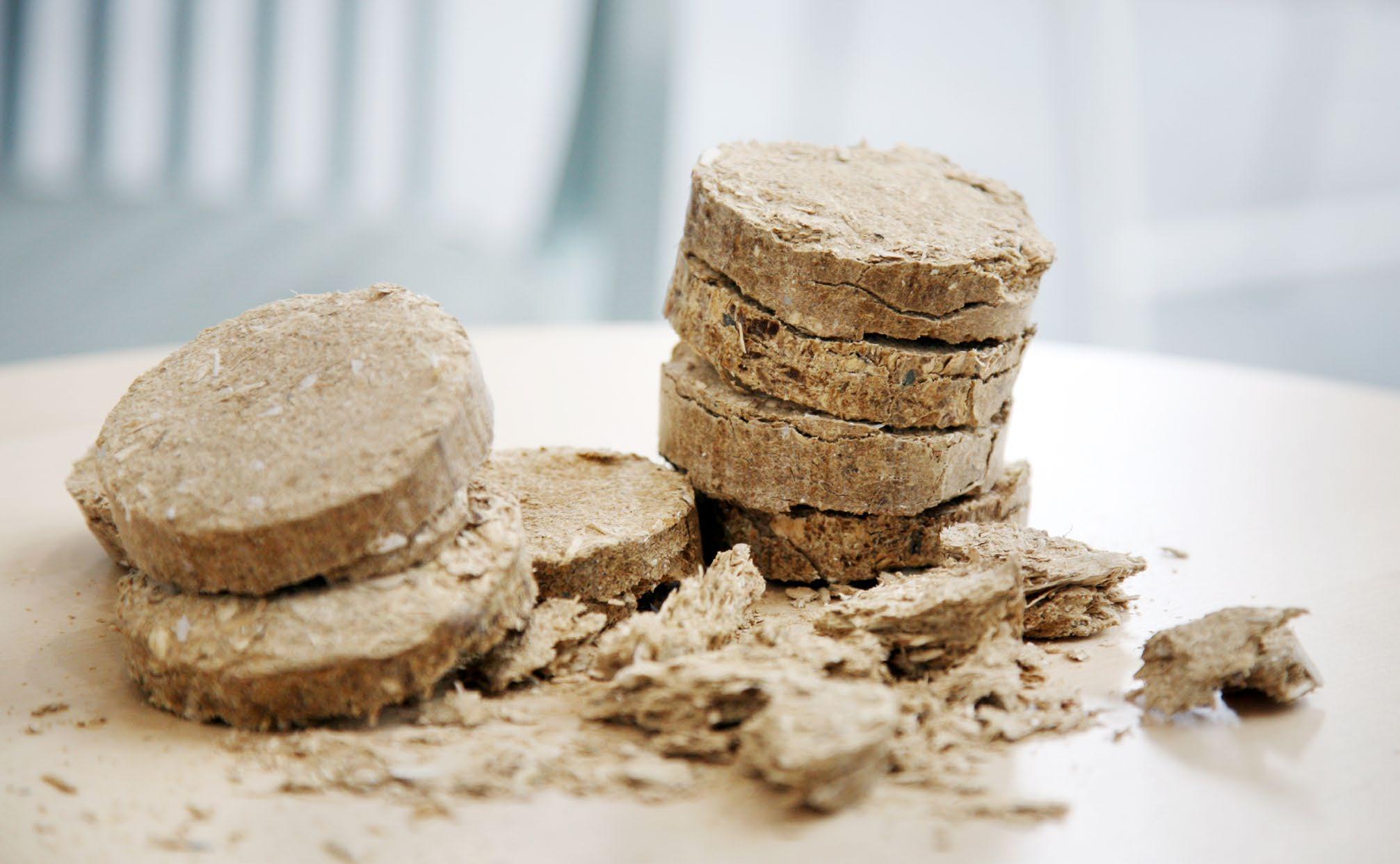
SERVICES THAT PROLONG THE LIFE OF FURNITURE
WORKPLACE ANALYSES
Map and identify the needs in your environments using our workplace analyses for office, education and care.
SUSTAINABLE DELIVERY
Reusable transport packaging and full responsibility for assembly and implementation according to your drawing.
MOVING AND RELOCATING
Whether you’re moving your furniture within your premises or relocating to a new address, we’re here to help.
HOLISTIC ERGONOMICS
Gain new knowledge on sustainable and successful work environments via our lectures and workshops.
INVENTORY AND ACTION PLAN
Get an overview of your interior, establish its value and find out how it can best be maintained, updated, placed and used to function for your current and future needs.
BUY CIRCULAR ONLINE
Shop both new and refurbished high quality furniture in Kinnarps Online Store.
FURNITURE SERVICE ON LOCATION
We can refurbish furniture at your place of business or in our specially equipped service truck.
WASHING OF FURNITURE
Keeping your furniture clean is key for maintaining an attractive workplace. By washing furniture, you also prolong its lifespan.
REFURBISHING
AND UPGRADES
Refurbishing, renovations and upgrades give new life to your furniture and prolong the overall lifespan. New colours and upgrades can give your existing furniture a new lease of life.
RECYCLING
We help to recycle furniture that’s reached its maximum lifespan, in an environmentally friendly way.
Return visit: Sjölunda school
In autumn 2017, Sjölunda School in Lidköping opened the doors to its newly built, innovative and flexible learning spaces. Six years later, we went back to ask Principal Sofia Sabel Andersson how they succeeded in creating such a long-term sustainable school and how learning spaces affect wellbeing and study results.
When did you say the school was built? Sjölunda School’s principal Sofia Sabel Andersson is used to the surprise of many national and international study visitors that the school with its bright spaces, soft carpets and upholstered furniture is actually no longer completely new. When the school was designed, she worked closely with former principal Elisabet Ingemarsson on everything from operational ideas, recruitment and interior design, and she has a clear picture of how it all turned out so well.
"The key was that Elisabet had a clear picture of what she wanted from the school. During the process, we involved both staff and the children, analysed our needs and asked ourselves what we would do, how we would do it and why. We took everything step by step, so we had the opportunity to test and evaluate the choices we made along the way," she says.
Early in the process, the school worked closely with Kinnarps, with its sights firmly set on the goal that the physical environment should always support their educational principles and respect each individual’s needs and conditions for learning.
FACTS
Client: Sjölunda School, Lidköping Municipality
Location: Lidköping, Sweden
Number of students: approx. 300
Years: P-6
Completed: Autumn 2017
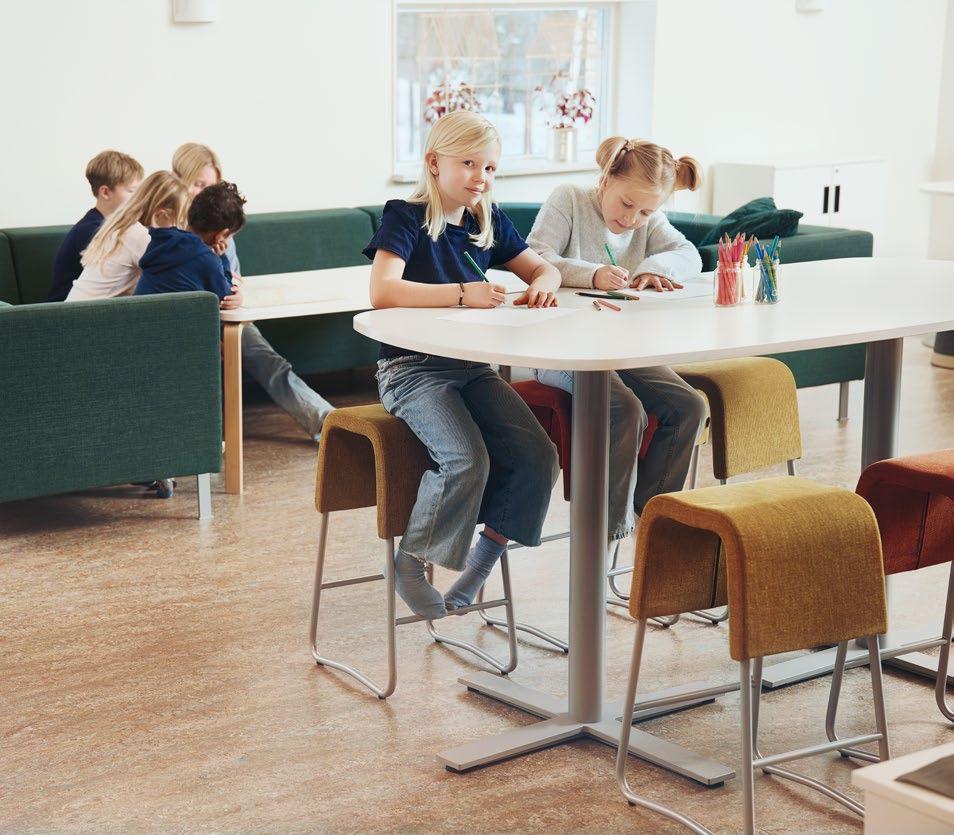
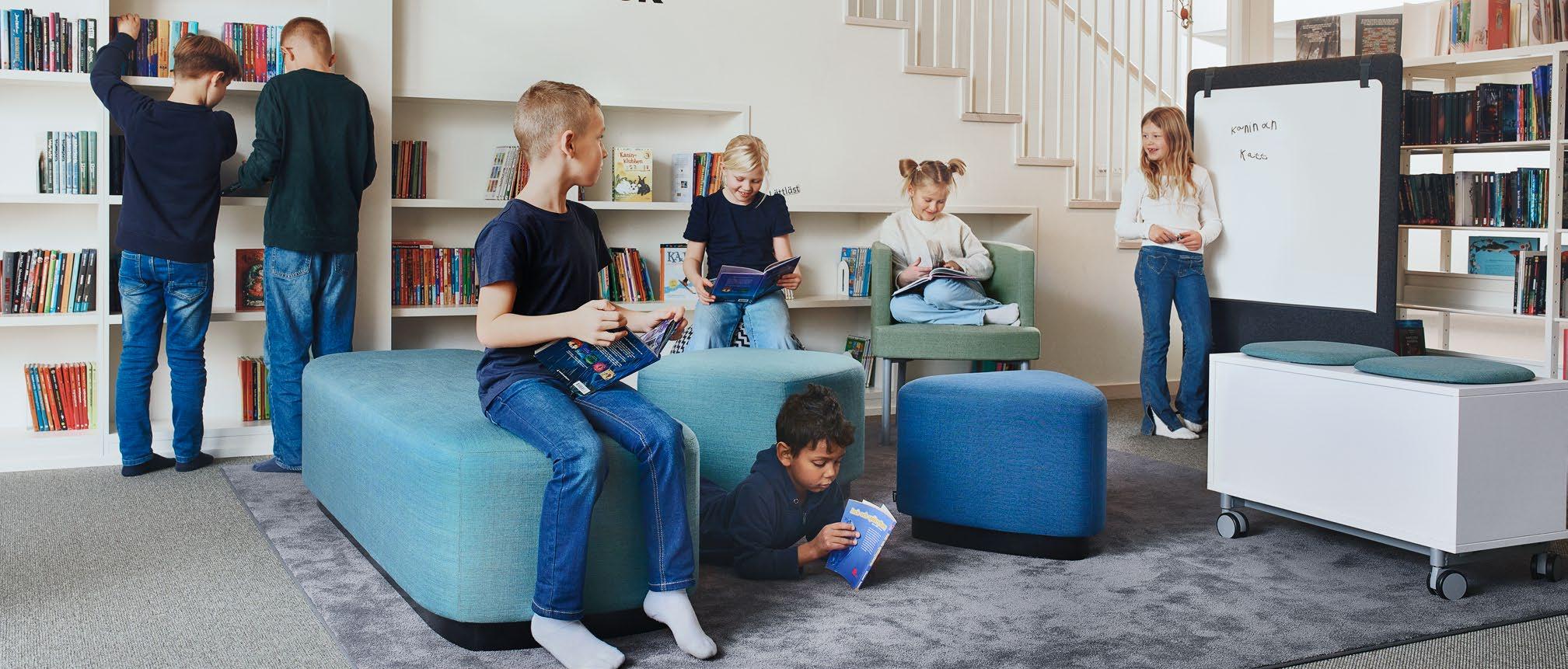
The Principal's Tips: Solutions that last over time
1. To create long-term sustainable learning environments, start a joint process with school management, teachers, pupils, architects and interior designers. Keeping learning central, ask yourself what, how and why you should furnish in a certain way. Operations must always come before furnishings. Leave space to try things out and make evaluations along the way. And make sure to keep the vision alive through, for example, conversations with the students and the staff.
2. Create different spaces and seating options for different activities and learning styles. Both in each classroom and in the school as a whole. Children learn in different ways and it is important to create flexibility and variety. Our experience is that such solutions stimulate enthusiasm and creativity, provide an ergonomic school environment and meet children’s needs better than traditional classrooms. Build in flexibility to easily make changes and customisations.
3. Dare to choose upholstered furniture. It does wonders for the study environment by dampening noise and increasing wellbeing for students. The physical environment should support children in learning, and materials and colours also play a major role. Include the children in taking responsibility for the school environment and explain why it is important. The presence of adults allows you to catch things right away when they happen.
It is one thing to create a school that feels inspiring and innovative when it is new, another thing to preserve that feeling and those values year after year.
Your upholstered furniture looks as new as when you started, what is your trick?
"It’s not magic, it’s about making the children feel involved, taking responsibility and understanding why the physical environment is important. We make sure to include them, for example by cleaning up together and talking about why we take care of what we have. It is also important that adults are present as role models and show that they see the students and what is happening in the school. This allows us to get to grips with things as soon as they happen."
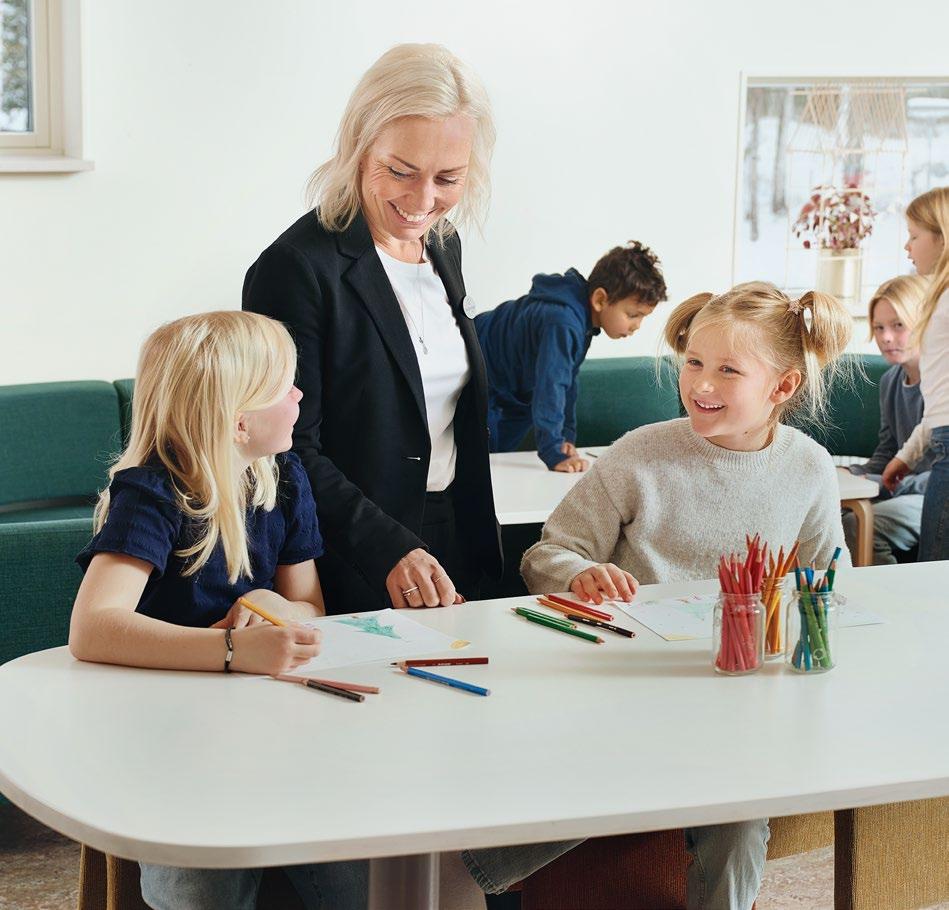
"We carried out an analysis, developed a vision, had the physical environment in mind early on in the work and included both the staff and the children in the process. This lays a good foundation for creating long-term operational sustainability."
Sofia Sabel Andersson Principal of Sjölunda school

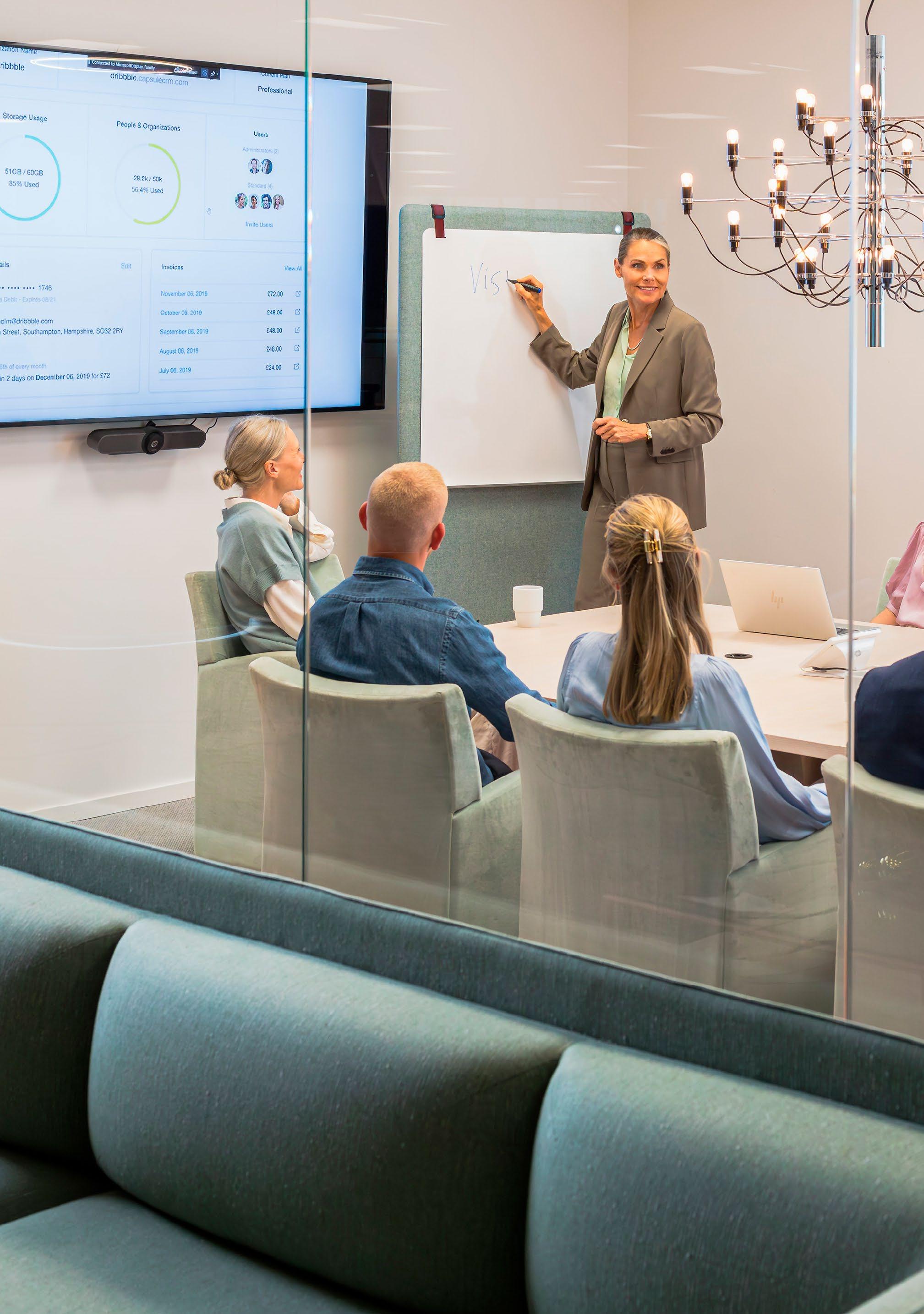
Ergonomics
Ergonomically designed workplaces have a number of obvious advantages. Not only do they counteract stress-related illnesses and repetitive strain injuries. They also enhance wellbeing, and increase creativity and productivity.
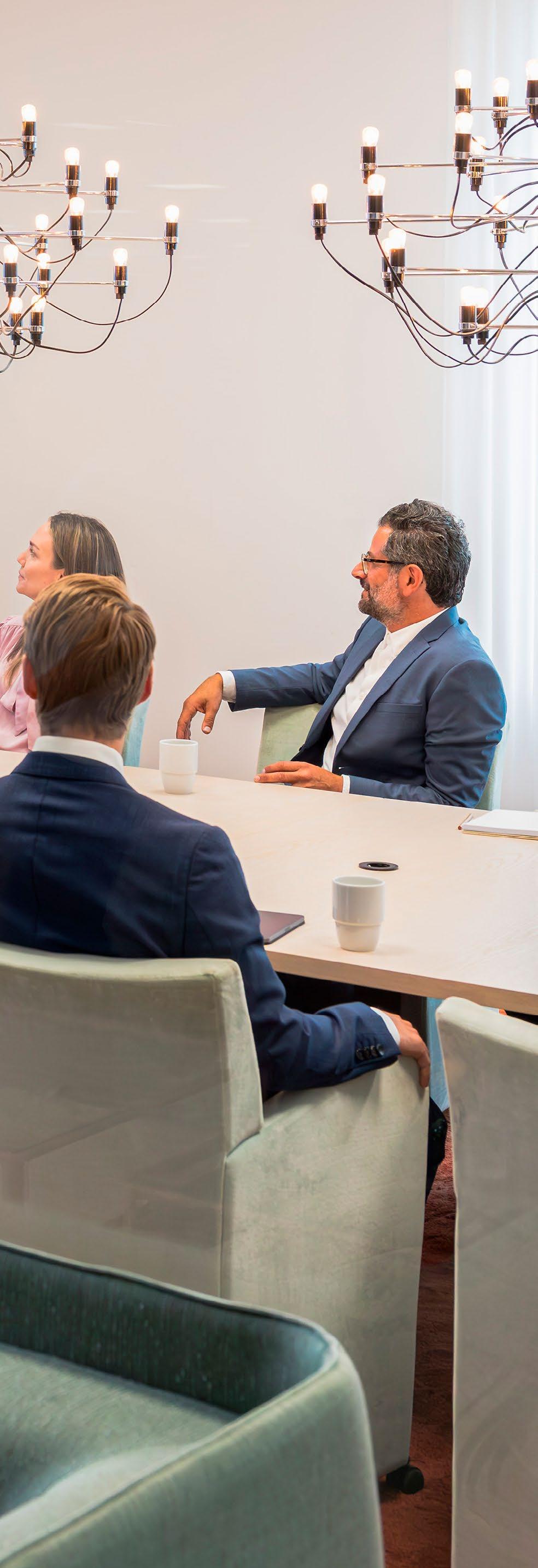
Definition
At Kinnarps, ergonomics is about looking at the big picture. We call this holistic ergonomics –the total experience of a space. A perspective that takes into account the physical, organisational and social environment. Furniture, layout, air quality, temperature, light, colours, materials, sound and movement, as well as culture, leadership, and a sense of security and belonging are all important factors in creating a functioning whole.
Objective
2030 long-term goal
Our goal is to create working environments that promote the health and wellbeing of everyone who spends time there. Holistic ergonomics is central to our interior design solutions, and our products are inclusive and customised to human needs. This goal is linked to UN Sustainable Development Goal no. 3, ‘Good health and well-being’ and no. 4 ‘Quality education’.
Challenge
A holistic perspective on ergonomics
m ovement and variation We spend a lot of our waking hours sitting still, which can increase the risk of cardiovascular diseases, obesity, diabetes, stroke and depression. By integrating customisation, movement and variation into our products and solutions, we can create ergonomic working environments that minimise various kinds of health risks. Our challenge is that employees don’t always understand how to use the products correctly, which means that the positive effect is lost and the investment is ineffective.
b ehavioural changes The surroundings are also important when it comes to an ergonomic and sustainable working environment. Acoustics, lighting and ventilation affect our energy levels, and how spending time in the space makes us feel. It’s therefore important that each individual has the
ability to determine and influence their immediate surroundings. Rules for how the spaces should be used, such as quiet zones for concentration, further enhance this. One challenge for us is to contribute to behavioural changes, so that users learn how to make the most of the opportunities in a varied space.
s ee the whole picture But it’s not just the ergonomics of using the product that’s important to bear in mind. It is also important to consider all situations involving the product – such as cleaning, moving or storing. A lightweight chair with easy suspension improves ergonomics for cleaning staff, castors may make moving the chair easier, and foldability and stackability simplify storing it. One challenge for us is therefore to take a holistic approach to ergonomics during product development, in order to include several areas of use.
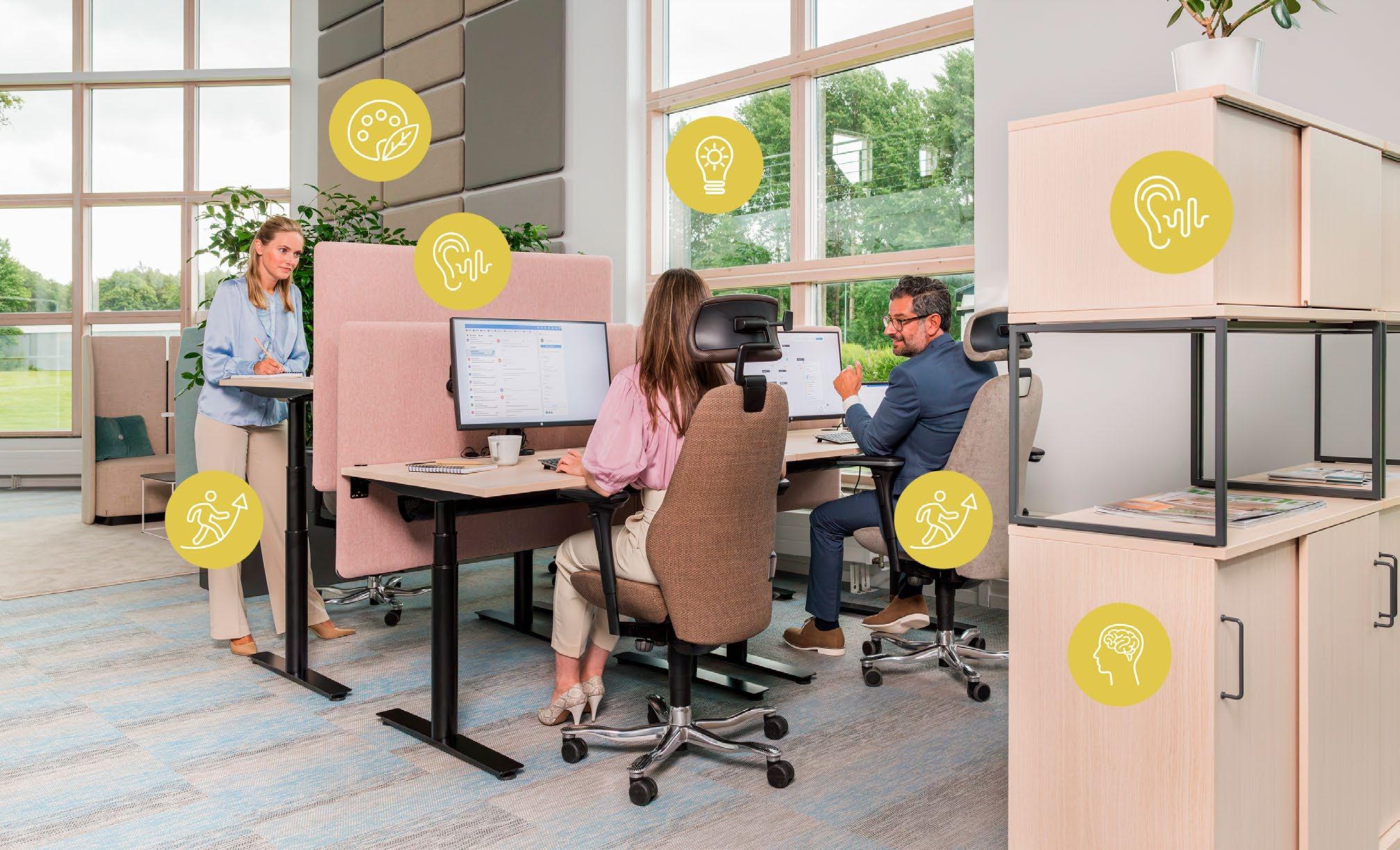
Strategy
Increase knowledge of how good holistic ergonomics affects us
a ccumulated knowledge and experience
In order to create successful interior design solutions that promote well-being and efficiency, it’s important for us to increase our knowledge about how the physical environment affects us. We therefore collaborate with reputable researchers, ergonomists and other experts to keep up to date with the latest findings relating to office, educational and care spaces. We accumulate our expertise and experience in various types of reports, articles and magazines in order to inspire new ways of thinking about the physical environment and how it affects us.
product development In our product development, we always adopt a holistic ergonomic perspective and collaborate closely with professional ergonomists. This means that we don’t just consider the human body, but take into account all human
needs – including psychological ones. We design products with an inclusivity that recognises differences and not just the average, and understands that everyone has different abilities and qualities.
mapping needs In order to help our clients create sustainable and ergonomic spaces, it’s important to involve all stakeholders from the start. Their accumulated knowledge can be used to map out the needs that exist and the activities that will be carried out in the environment. We do this through our analyses, Next Office®, Next Education® and Next Care®, where we can help to facilitate the client's process towards a new space using our specially developed tools. The results of the analysis process are then summarised in a report containing recommendations on how best to design an environment that is a sustainable investment for the people spending time there and for the business.
Risks and governance
Risk management is integrated into the internal processes of the management team as well as the entire Group by means of guidelines and work procedures. Continuity planning is carried out at Group level, and risks are also identified and managed on an
ongoing basis in the Group's various units, by means of the procedures and systematic risk assessments performed in the various risk areas. Measures are then implemented in each area to minimise the likelihood and consequences of an incident.
IN OUR OPERATIONS, WE HAVE IDENTIFIED THE FOLLOWING RISKS LINKED TO SUSTAINABILITY:
RISK AREA
ENVIRONMENTAL ACCIDENT RISKS
WORKING ENVIRONMENT RISKS
SUSTAINABILITY RISKS IN THE SUPPLIER CHAIN
DESCRIPTION
Environmental accidents involving leaks, spills or process errors.
PRODUCT SAFETY RISKS
Accidents involving personal injury, poor social or organisational working environment as a result of shortcomings in preventive health and safety work.
Environmental risks linked to production of materials and components. Infringements of the Supplier Code of Conduct.
Safe use of products. Ergonomic risks linked to good working posture. Risk of the spread of fire.
MANAGEMENT
Procedures for handling chemicals and waste management. Contingency plans for spills and leaks. Training of employees.
Systematic HSE management through proactive risk assessments, regular inspections, clear working instructions and on-the-job training of employees. Read more on pages 50, 52-53.
Environmental requirements for materials and components. Social requirements in contracts and followups through supplier audits.
Read more on pages 26, 54-55.
Kinnarps' accredited Test & Verification Centre inspects the products in accordance with EN standards. We also stipulate that our materials must meet all quality and fire safety requirements.
FIRE HAZARDS
Risk of fire in production units and other premises.
Systematic fire safety management with a focus on preventive measures, e.g. through fire safety inspections, suitable fire protection equipment and dialogue with stakeholders.
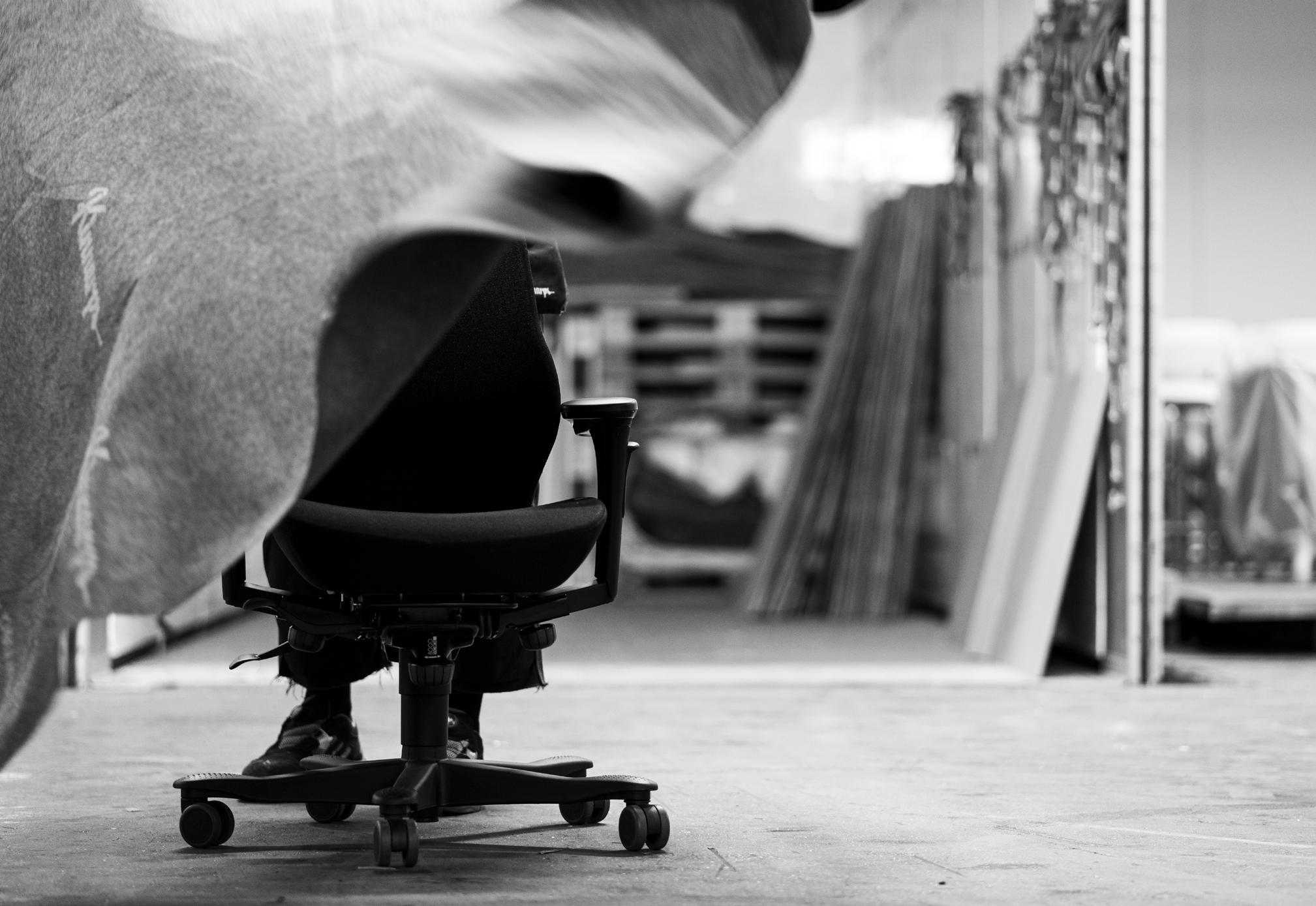
industry and social engagement As one of the largest European suppliers of interior design solutions for working environments, it's also our responsibility to drive development in sustainability issues. Kinnarps AB has one member in the Delegation for the Circular Economy, an advisory body for the government with the aim of facilitating and driving the transition of Swedish business to a circular economy. The Kinnarps AB Group is represented on the board of the 100 Group – an association that works for a more sustainable interior design industry in Sweden. Our commitment also includes membership in Swedish and international FSC. We are also part of the Möbelfakta Criteria Council for further development of the Möbelfakta labelling system.
The Kinnarps AB Group is a member of the Swedish trade association and employers' organisation the Swedish Federation of Wood and Furniture Industry (Trä- och Möbelföretagen, TMF) and the European trade organisation European Federation of Office Furniture (FEMB). We are members of Interior Cluster Sweden, where we are represented on the board. We work actively to develop furniture quality standards in Sweden and internationally through the Swedish Standards Institute (SIS), Comité Européen de Normalisation (CEN) and International Organisation for Standardisation (ISO).
governance and responsibility Governance of our sustainability work is based on our Sustainability Policy and Code of Conduct. These apply to the operations of the whole Group and are based on Kinnarps' core values. The Code of Conduct is based on the UN's Global Compact and is also clarified for our suppliers in our Supplier Code of Conduct.
Our sustainability work is firmly anchored in the board and management team, and is an integral part of the Group's strategy: “Let the Star Shine”. The Group management determines the direction and goals of the work, and the sustainability manager is responsible for the development and coordination of sustainability work in the Group. Locally, each manager is responsible for compliance in their area, and in larger units the work is led and coordinated by local quality and environmental functions.
Audits of operations are carried out on the units that are certified in accordance with ISO 9001, ISO 14001, ISO 45001 and FSC. The Code of Conduct is followed up through supplier audits.
Governance and follow-up of our sustainability work has proceeded according to plan during the year, and is deemed to be functioning well.

Auditor's statement concerning the statutory sustainability report
To the Annual General Meeting of Kinnarps AB, Reg. no. 556256-6736
Assignments and division of responsibilities
The Board of Directors are responsible for the sustainability report for the financial year of 1 September 2023 to 31 August 2024 and for ensuring that it is drawn up in conformity with the annual report.
Focus and scope of the audit
Our audit has been carried out in accordance with RevR 12 Auditor's statement concerning the statutory sustainability report. This means that our audit of the sustainability report has a different focus and a considerably narrower scope than the focus and scope of an audit in accordance with the International Standards on Auditing and generally accepted auditing standards in Sweden. We believe that this audit gives us a sufficient basis for our statement.
Statement
A sustainability report has been drawn up.
Malmö, 26 November 2024 Öhrlings PricewaterhouseCoopers AB
Johan Rönnbäck
Authorised public accountant
